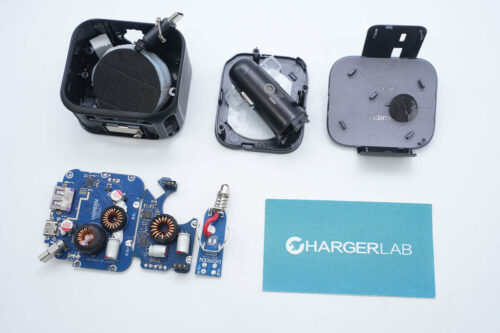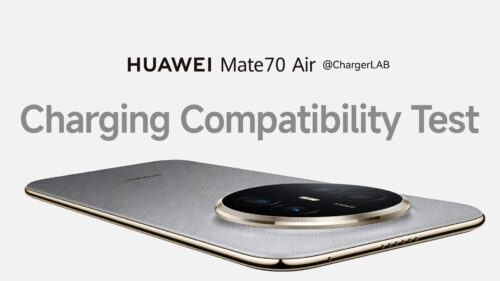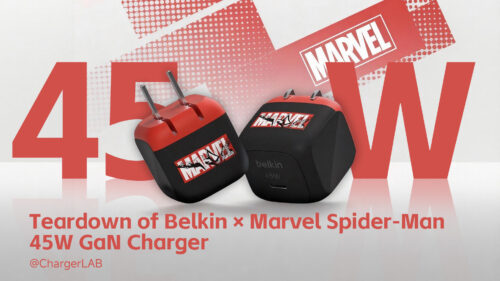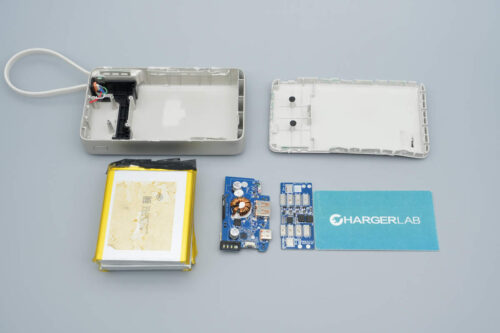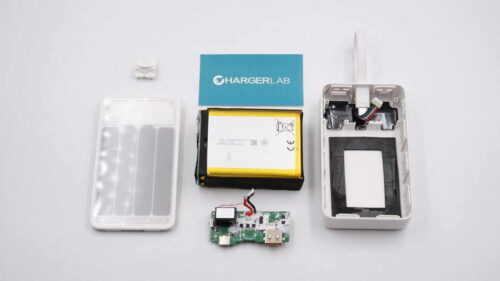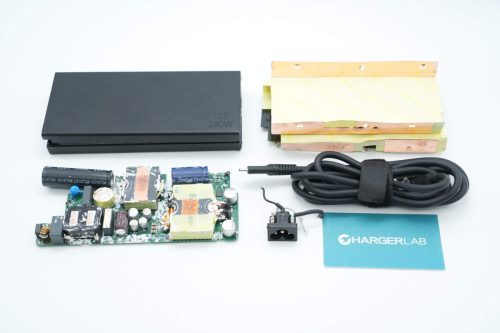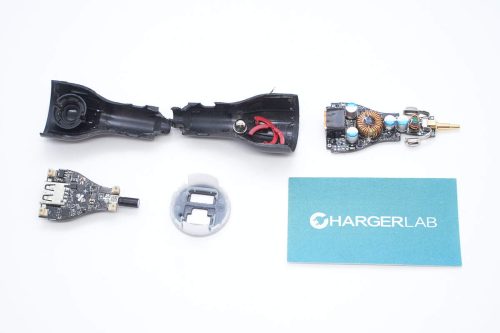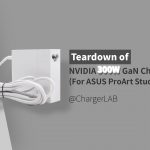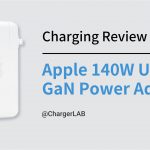Introduction
Retractable fast chargers have become increasingly popular for their pull-to-use convenience, adjustable cable length, tangle-free storage, and the added benefit of not needing extra cables when on the go. In response to this demand, well-known brand UGREEN has released several retractable charging products and expanded the concept to car chargers, launching 60W, 90W, and 145W models.
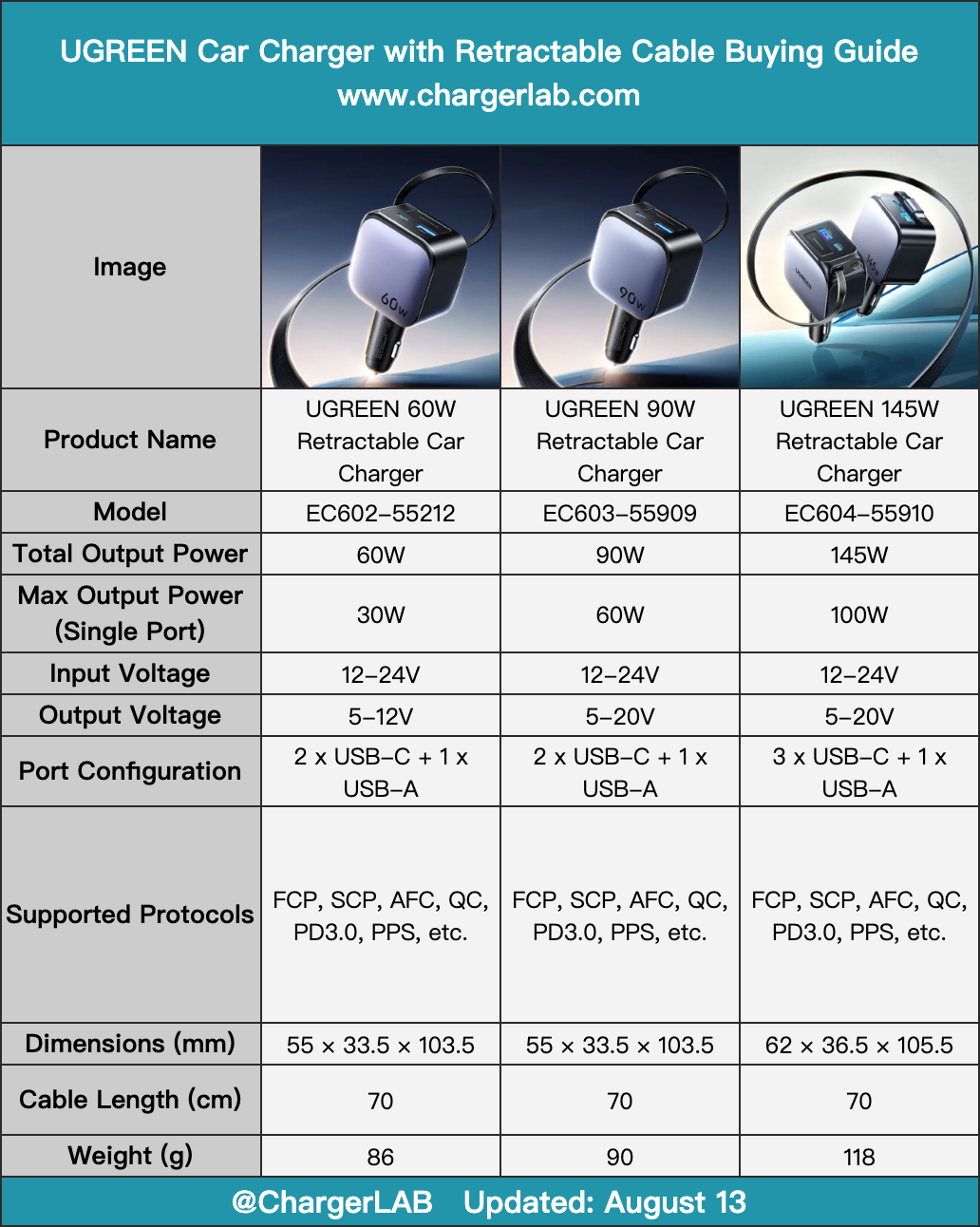
In this teardown, we’ll take a closer look at UGREEN’s 145W retractable car charger. As part of the same product line, it features a built-in 70cm retractable USB-C cable along with three ports—two USB-C and one USB-A—capable of powering up to four devices simultaneously.
The USB ports support up to 100W and 30W output, respectively, while the retractable cable also delivers up to 60W fast charging. This makes it ideal for charging a laptop, tablet, and phone all at once—ensuring efficient charging without delays. Let’s dive into the internal design and build quality of this high-performance charger.
Product Appearance
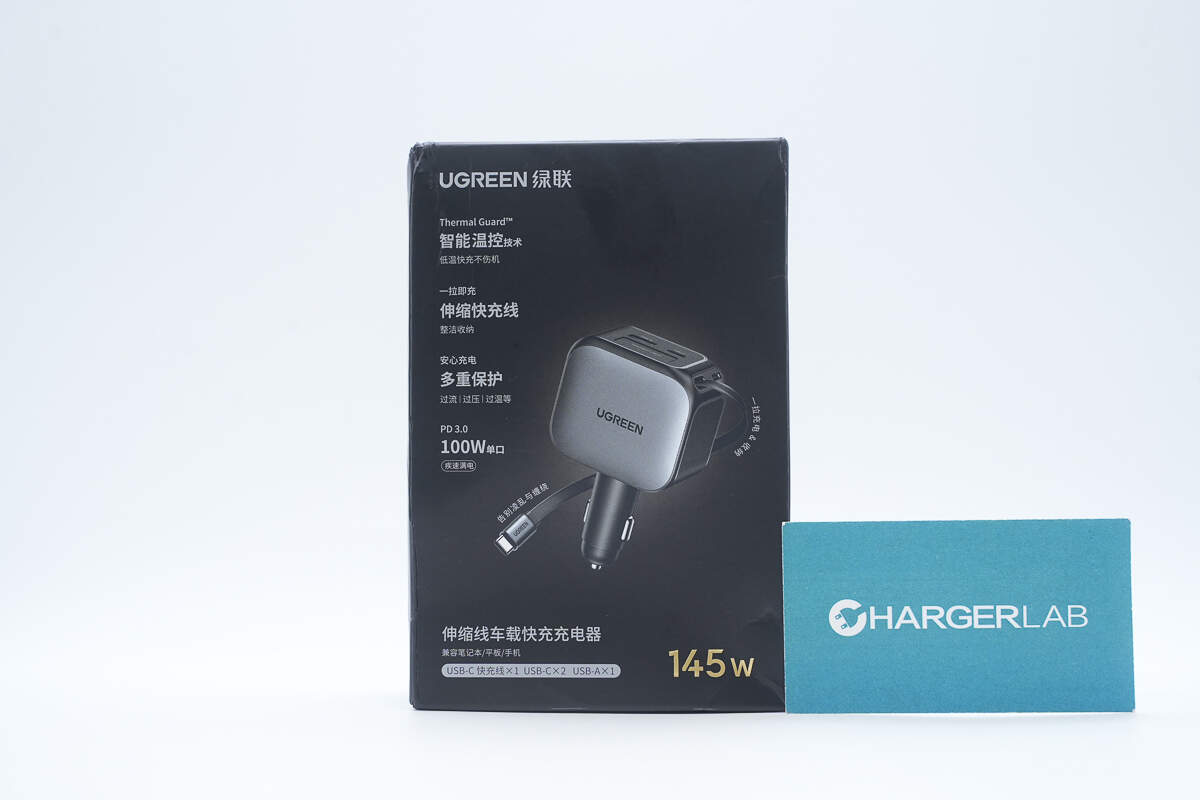
The front of the packaging features the UGREEN logo, product name, an image of the charger, and key selling points.
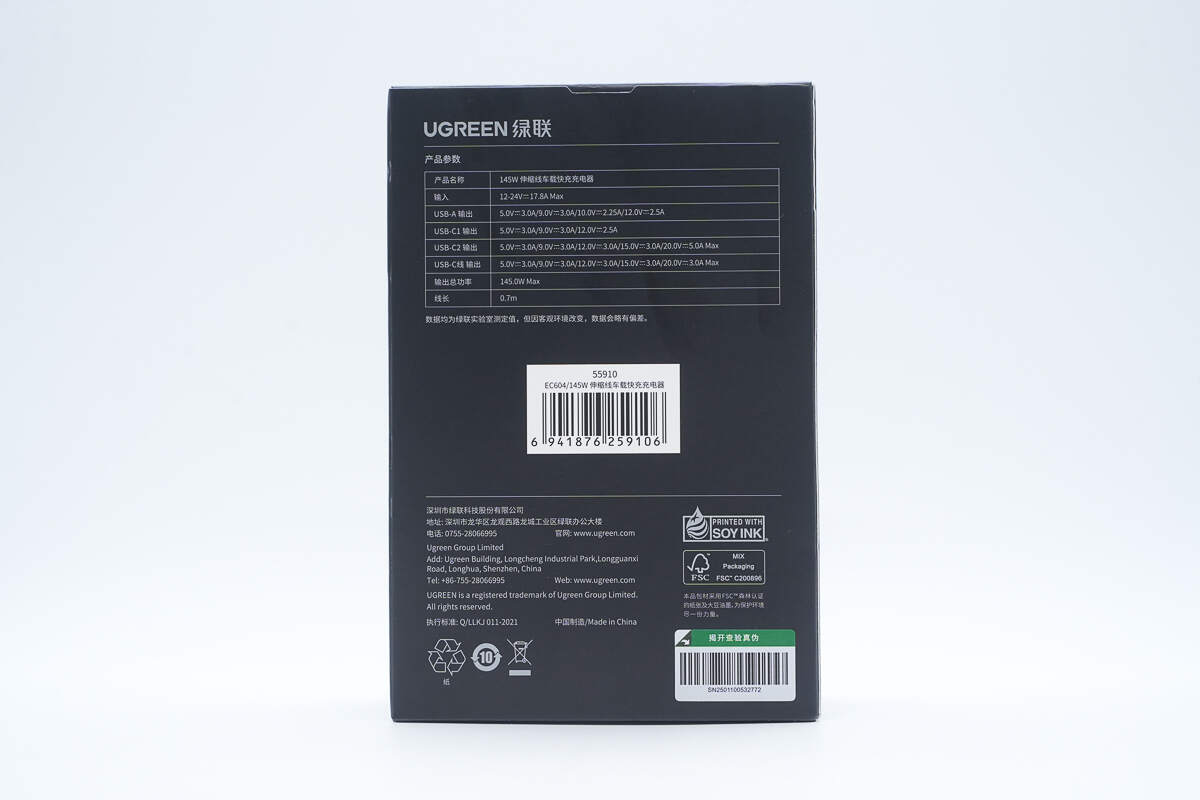
The spec info is printed on the back.
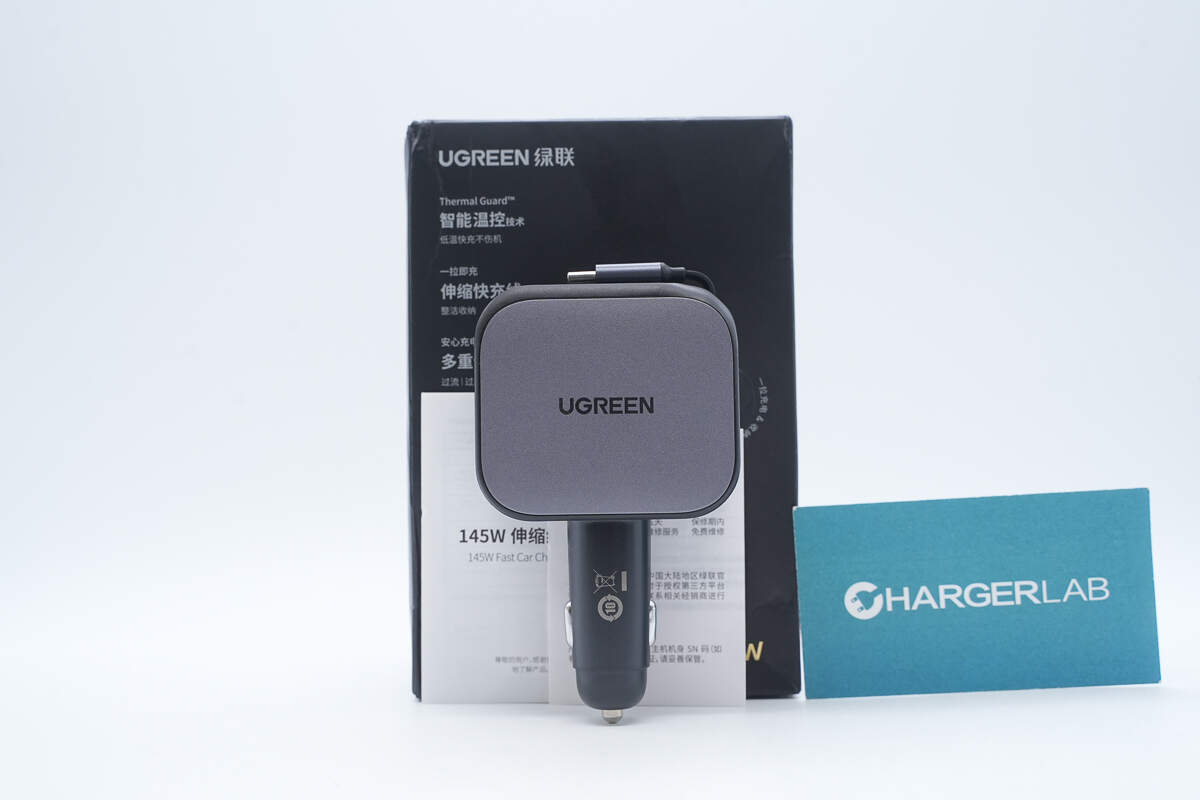
The package includes the charger and some documents.
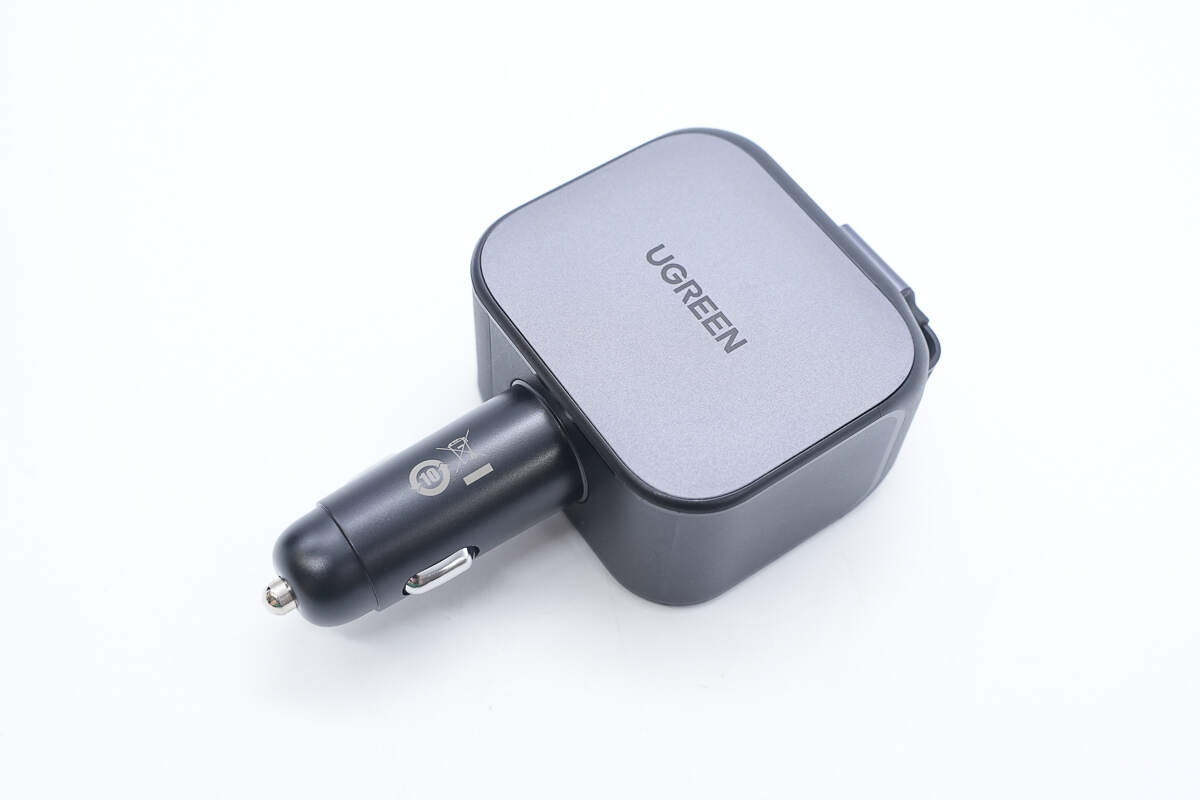
The outer shell is made of flame-retardant PC material, and its design is highly recognizable.
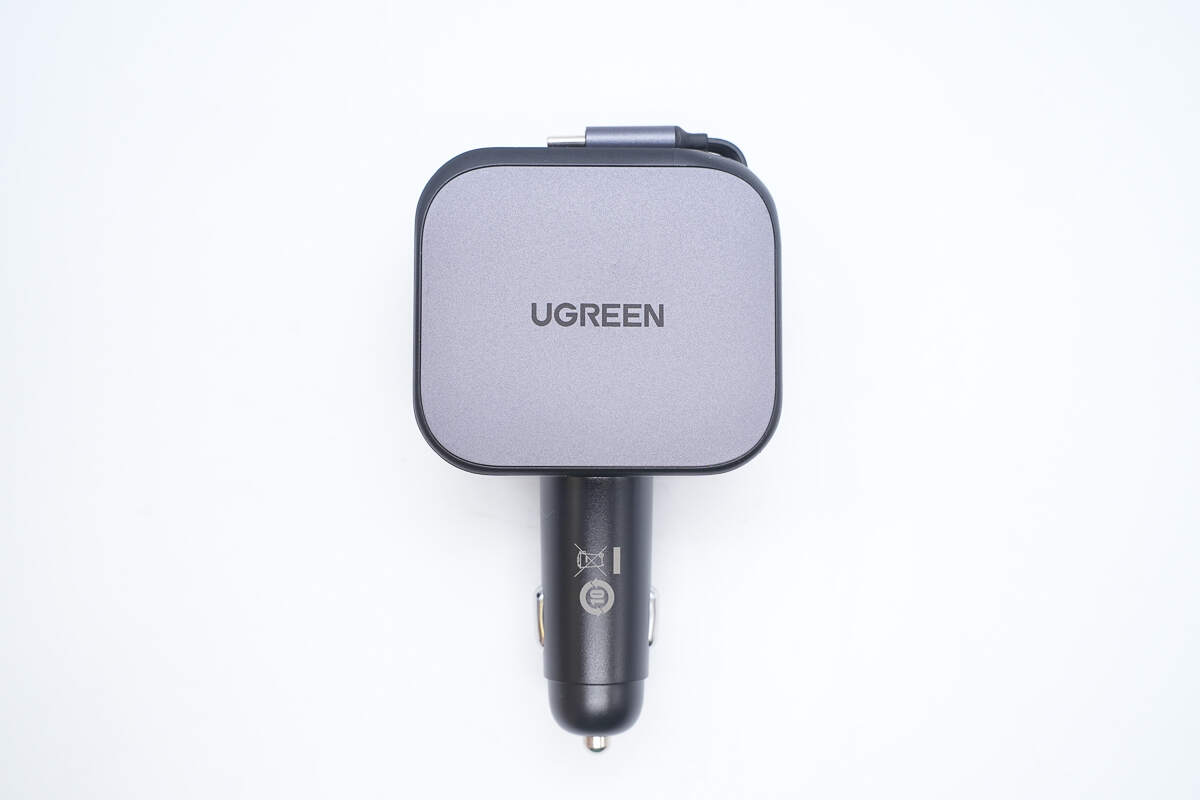
The UGREEN logo is printed at the center of the front side.
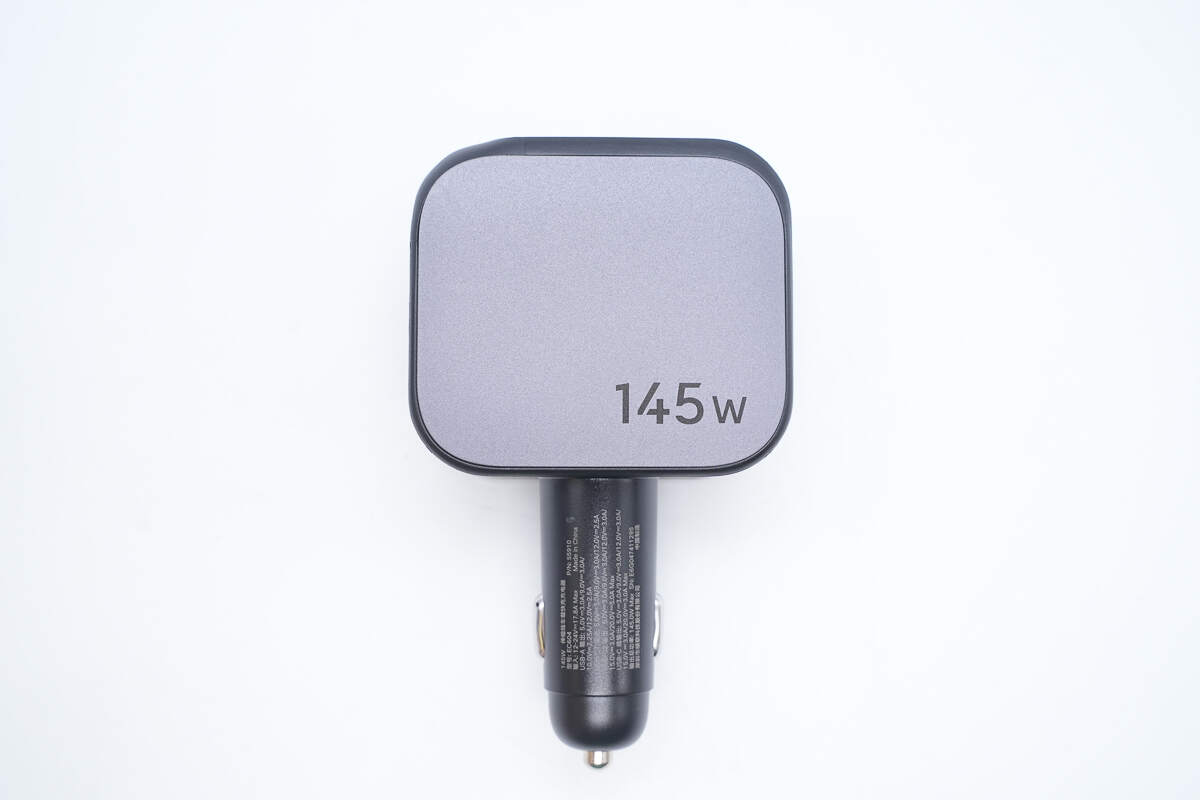
The back side is printed with "145W".
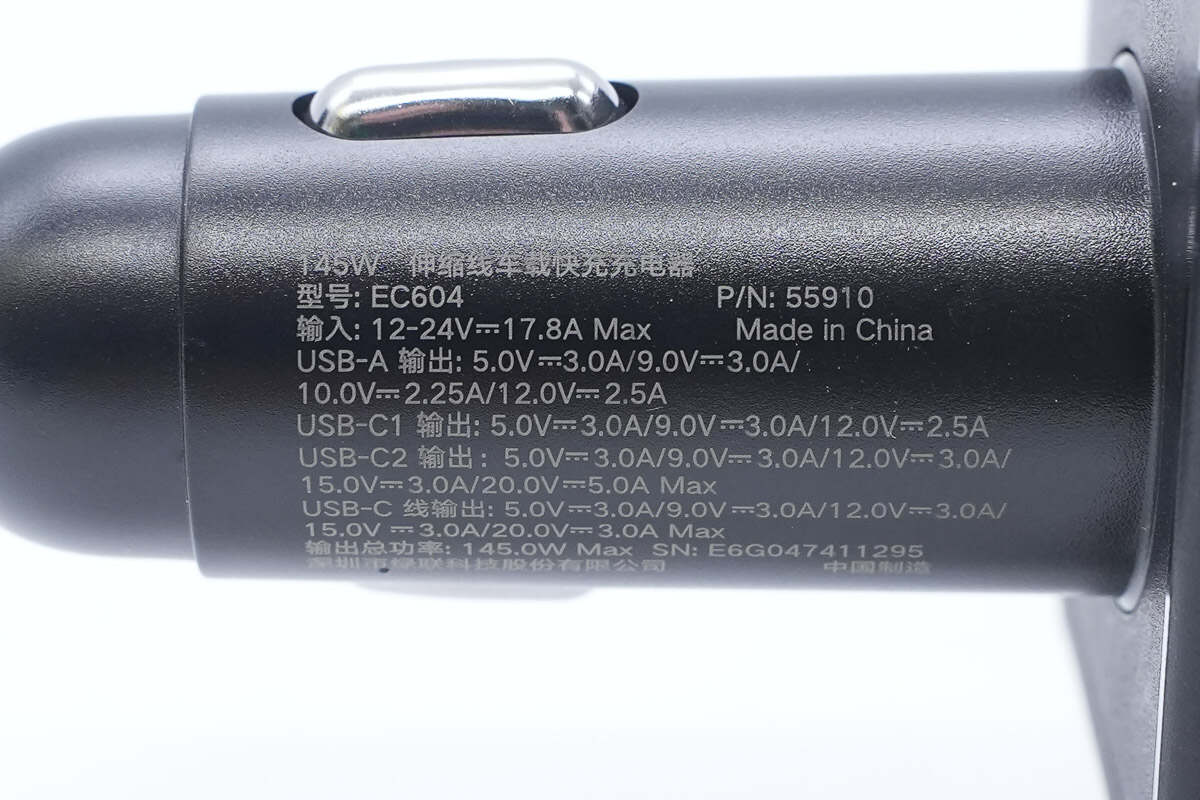
Model: EC604
Input: 12–24V⎓17.8A Max
Output:
USB-A: 5V⎓3A, 9V⎓3A, 10V⎓2.25A, 12V⎓2.5A
USB-C1: 5V⎓3A, 9V⎓3A, 12V⎓2.5A
USB-C2: 5V⎓3A, 9V⎓3A, 12V⎓3A, 15V⎓3A, 20V⎓5A Max
USB-C Cable: 5V⎓3A, 9V⎓3A, 12V⎓3A, 15V⎓3A, 20V⎓3A Max
Total Output Power: 145W Max
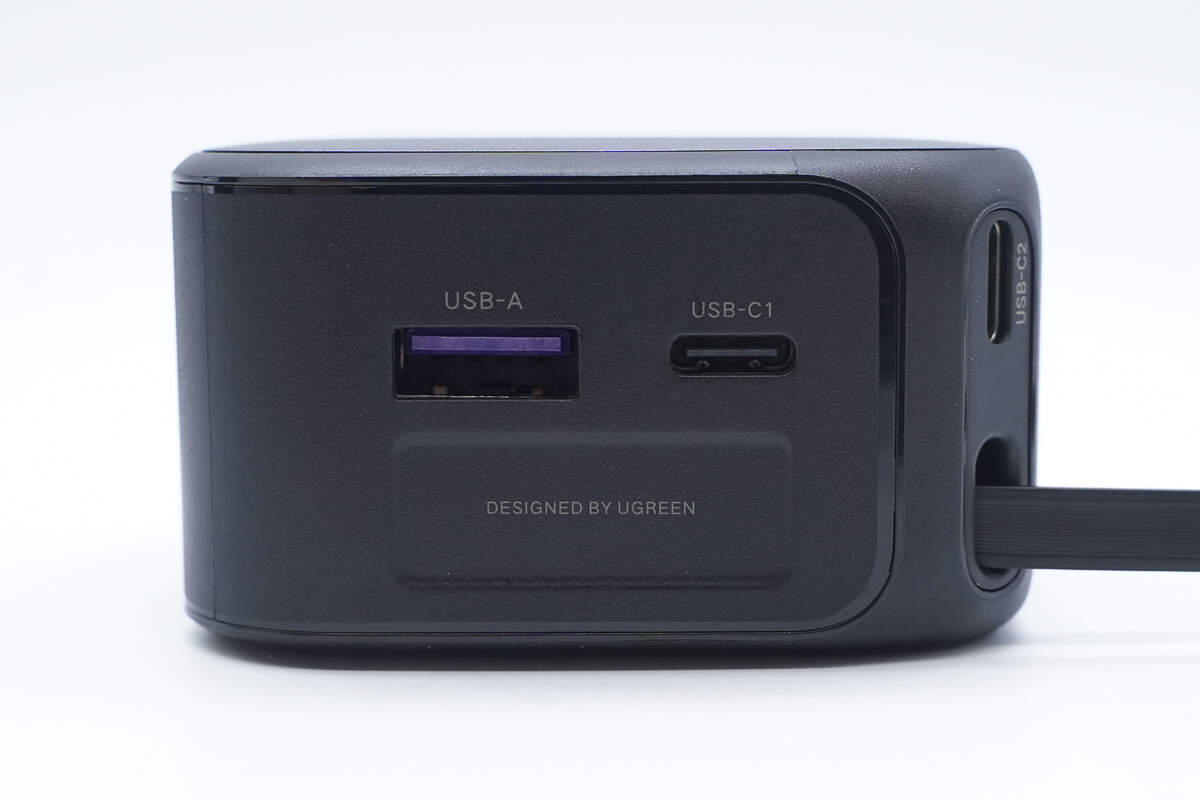
The top features one USB-A port and one USB-C port. Below them is a magnetic slot for storing the connector.
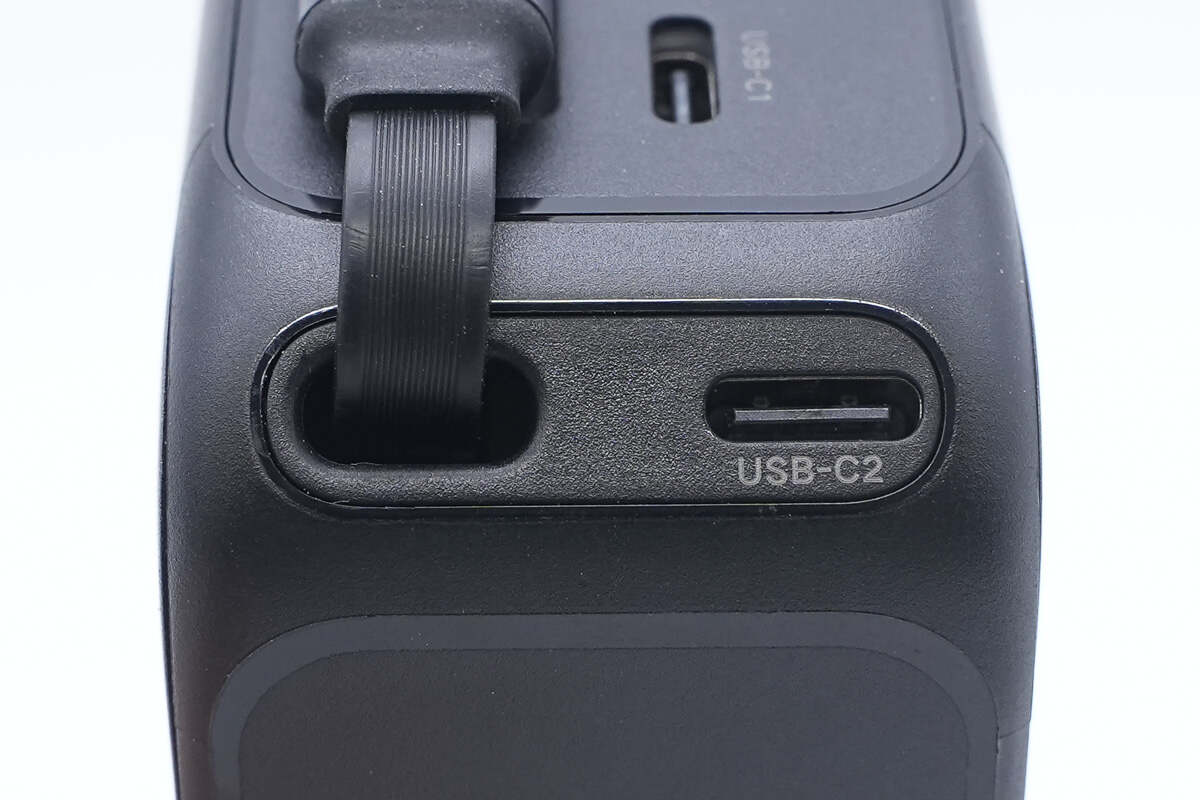
The retractable USB-C cable and USB-C2 port are located at the corner.
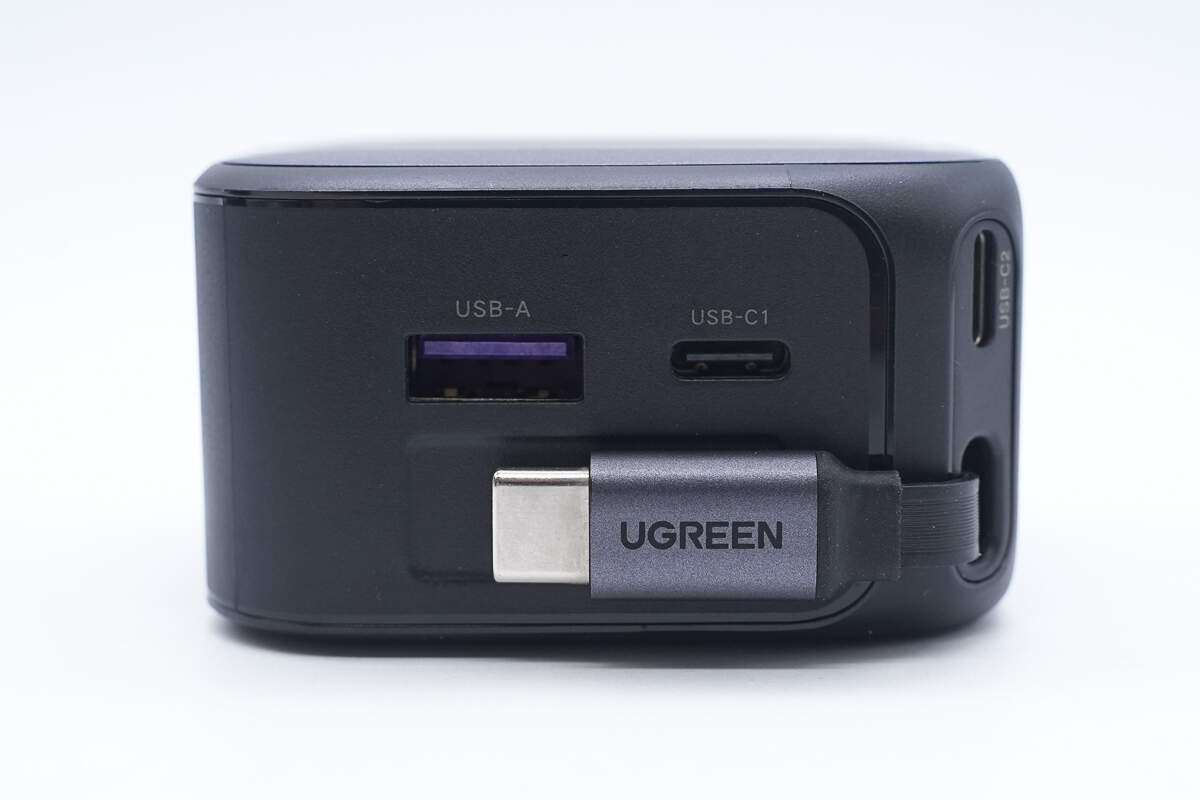
When not in use, the USB-C connector can be attached to the recessed magnetic slot for convenient storage.
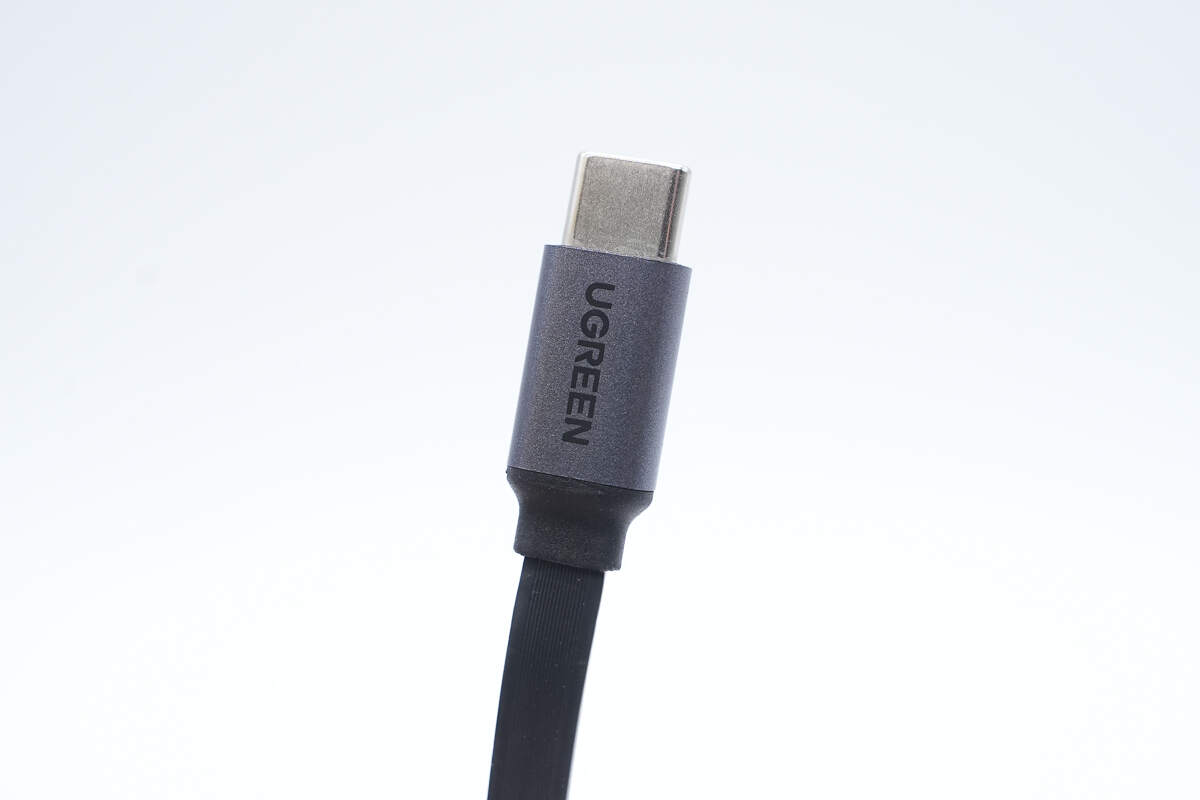
The connector housing is made of PC material and coated with a silver-gray metallic paint.
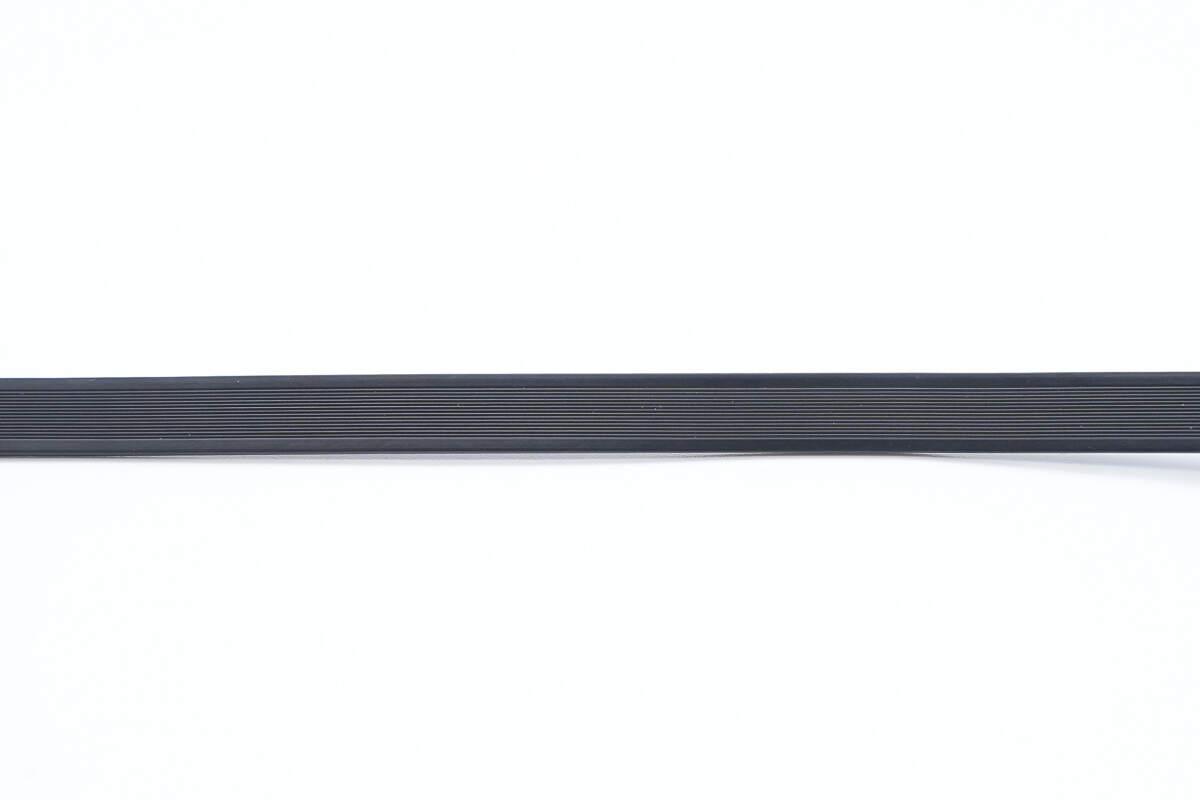
The cable jacket is made of TPE.
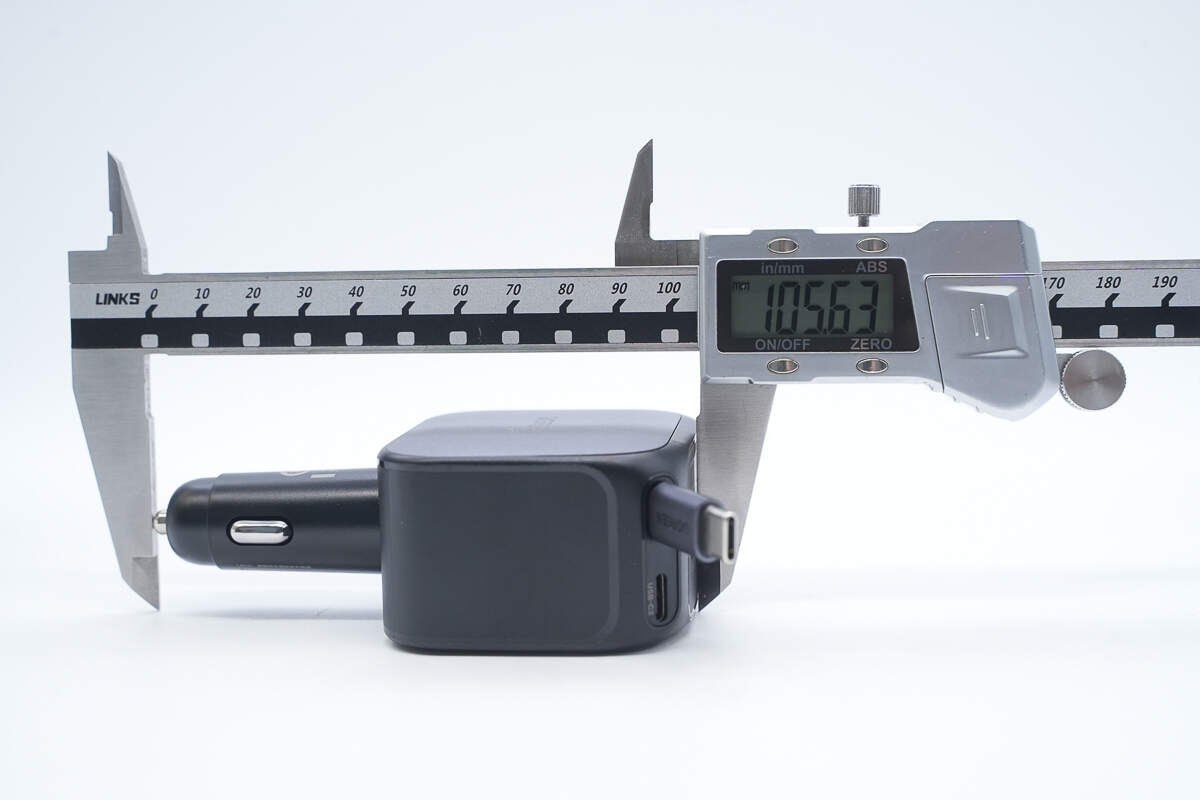
The length is about 105.63 mm (4.16 inches).
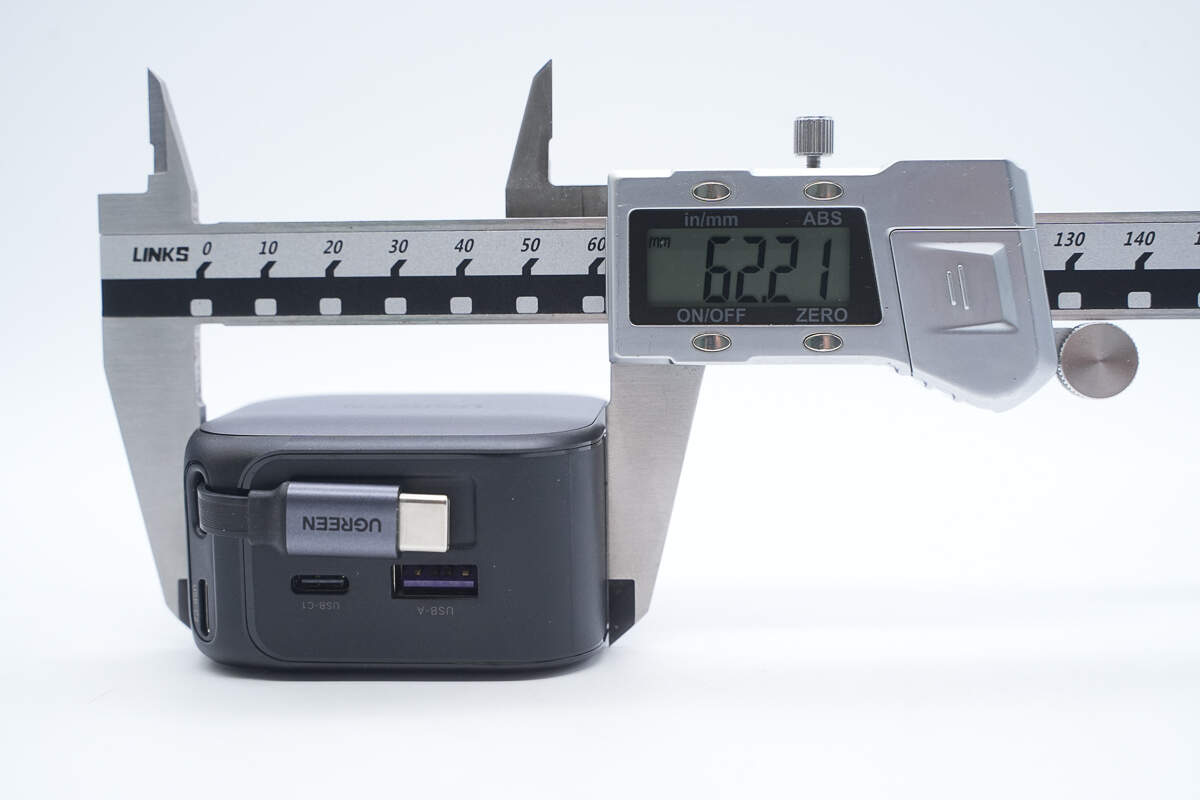
The width is about 62.21 mm (2.45 inches).
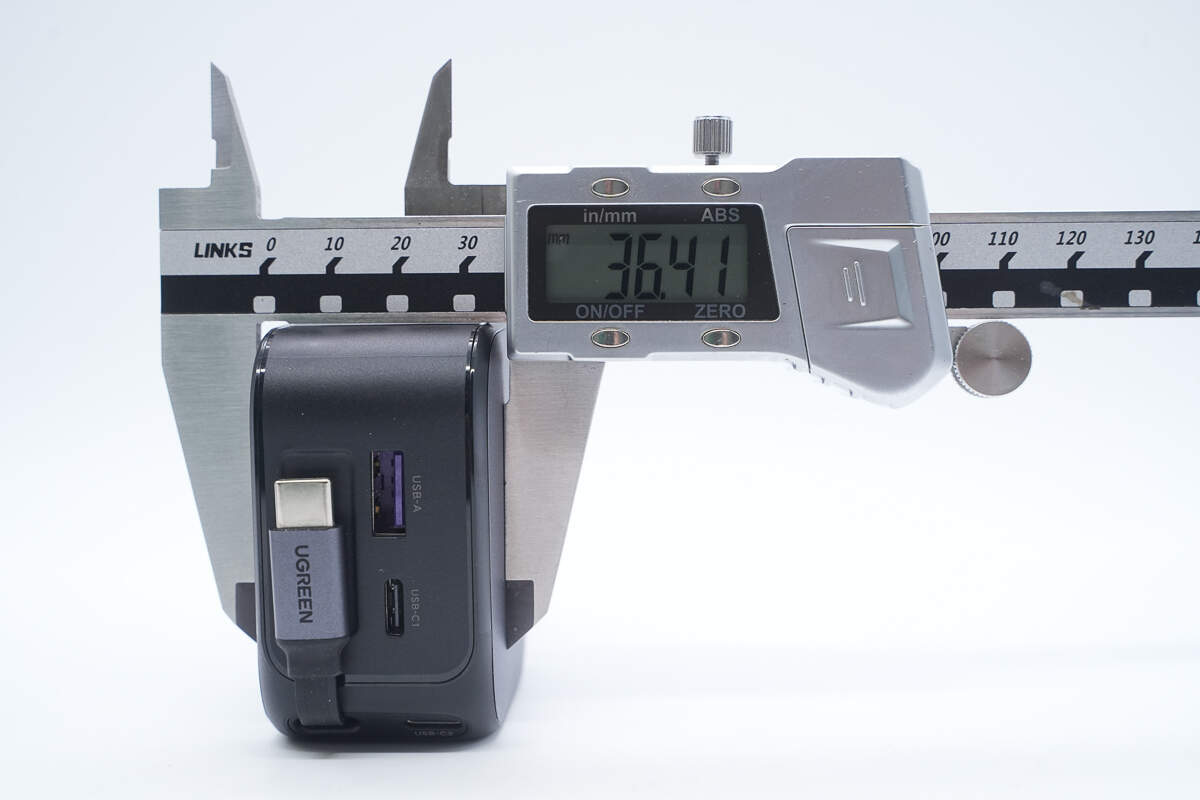
The thickness is about 36.41 mm (1.43 inches).
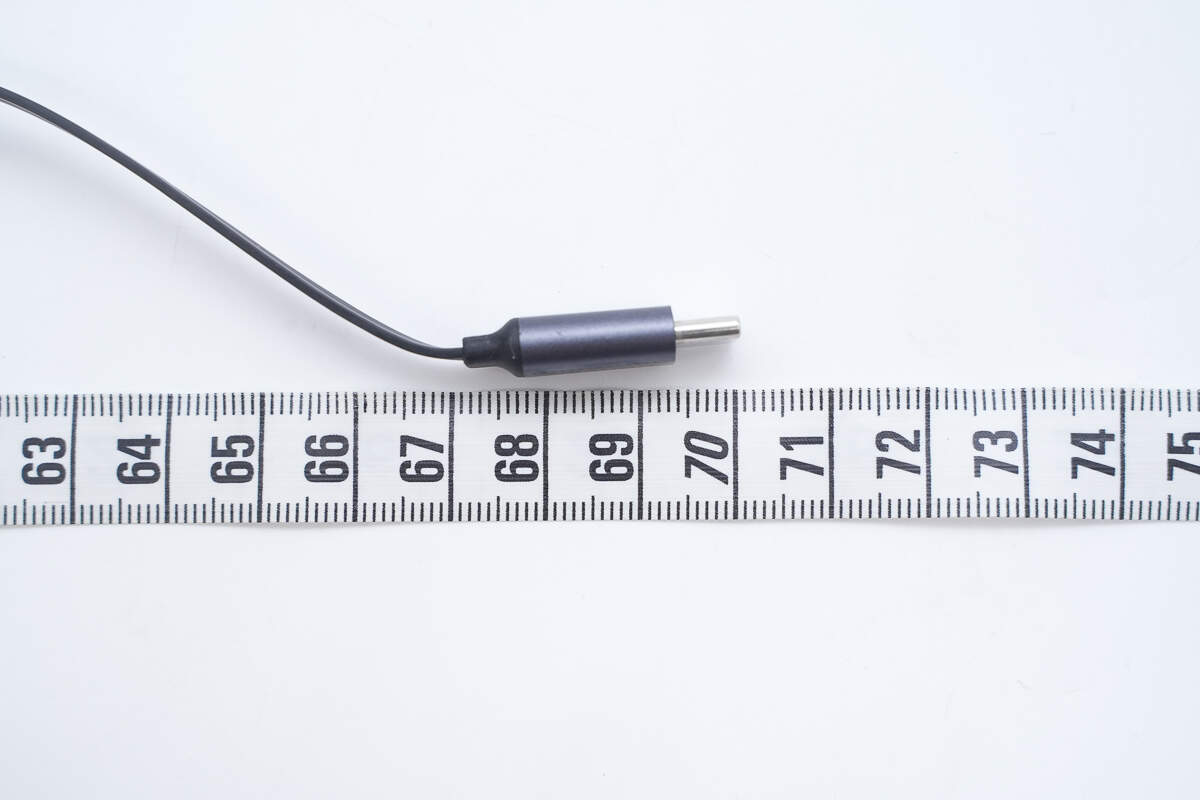
The length of the cable is about 70 cm (27.56 inches).
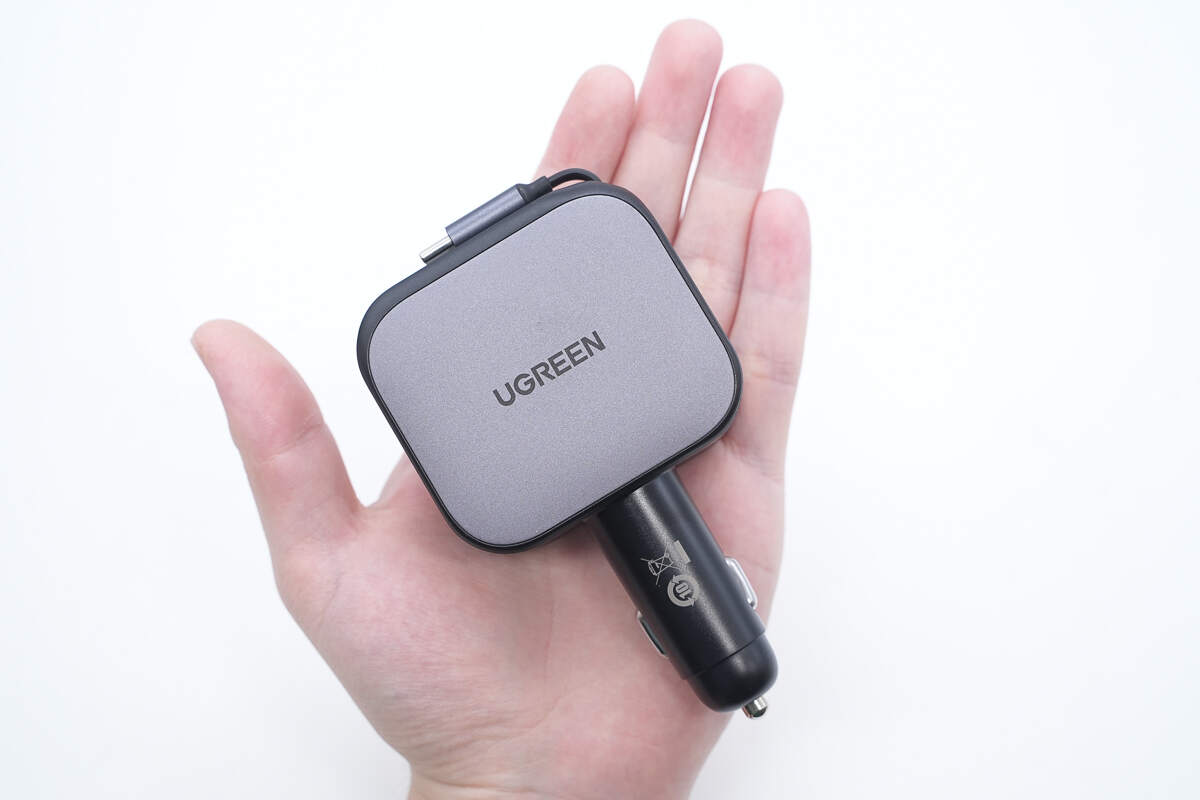
That's how big it is in the hand.
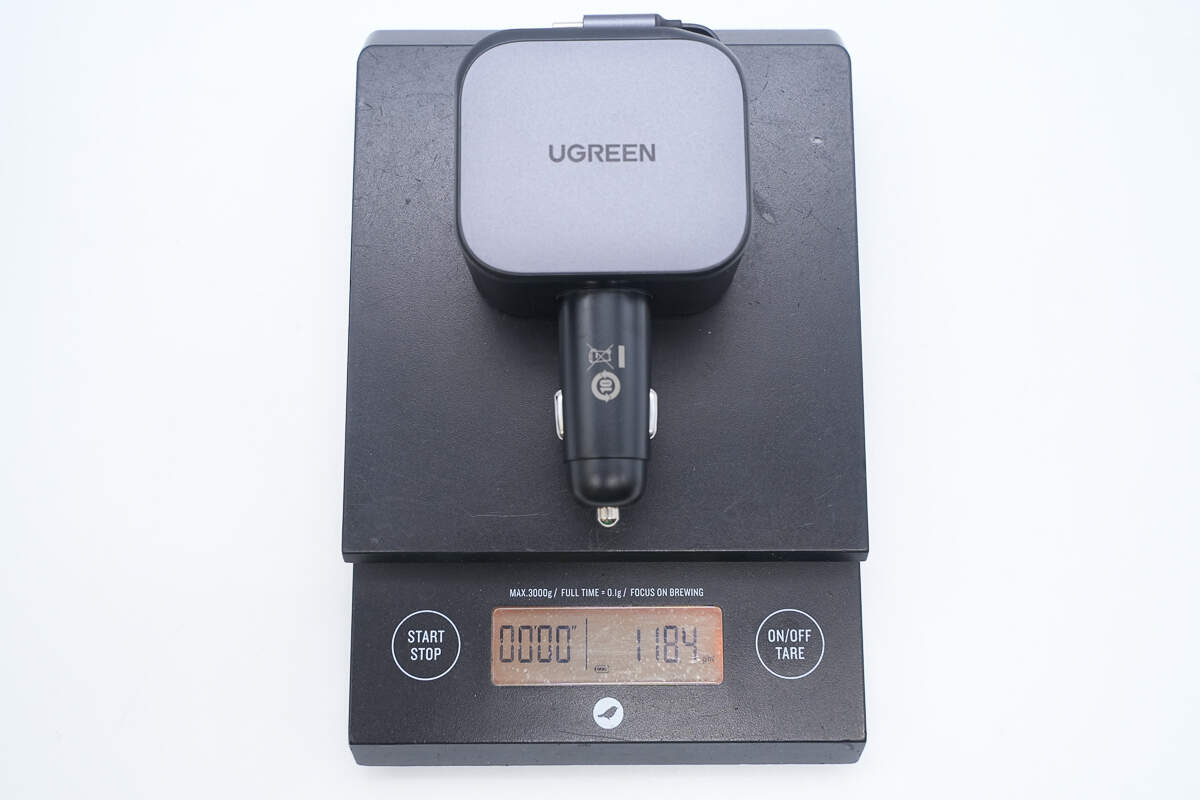
The weight is about 118 g (4.16 oz).
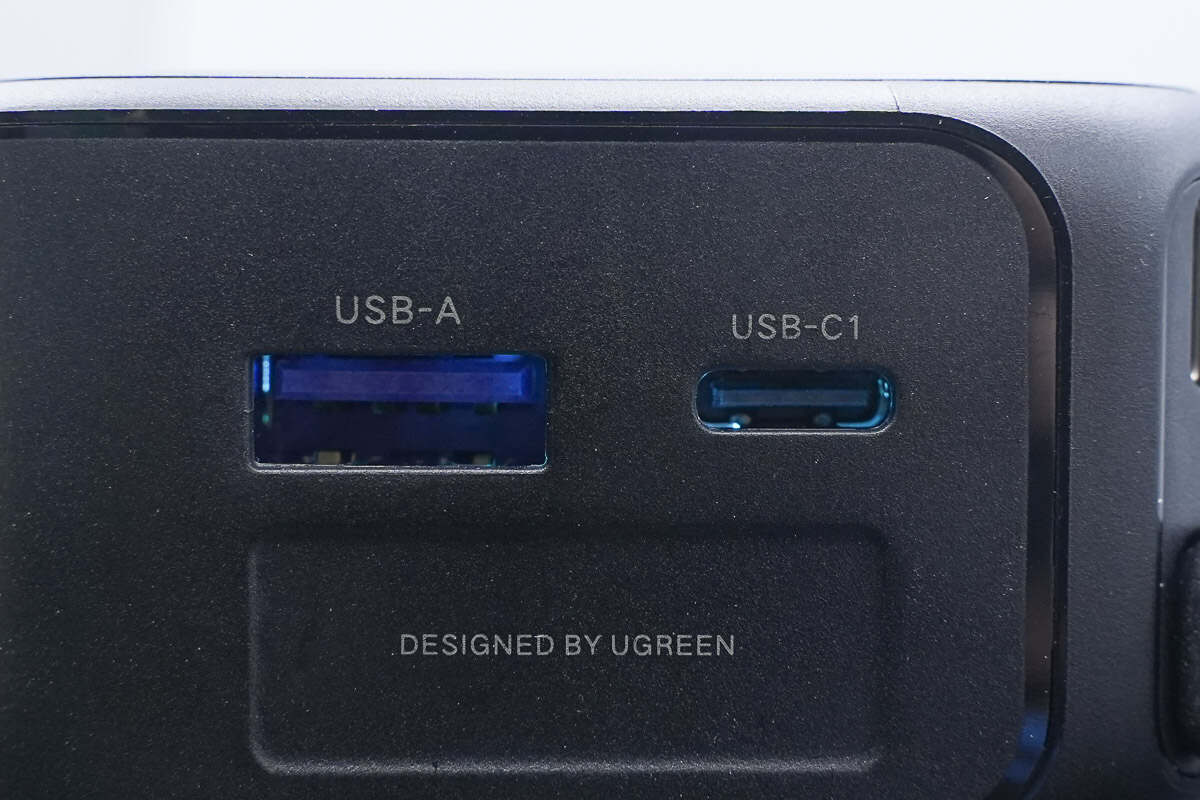
The indicator lights inside the ports make it easier to use at night.
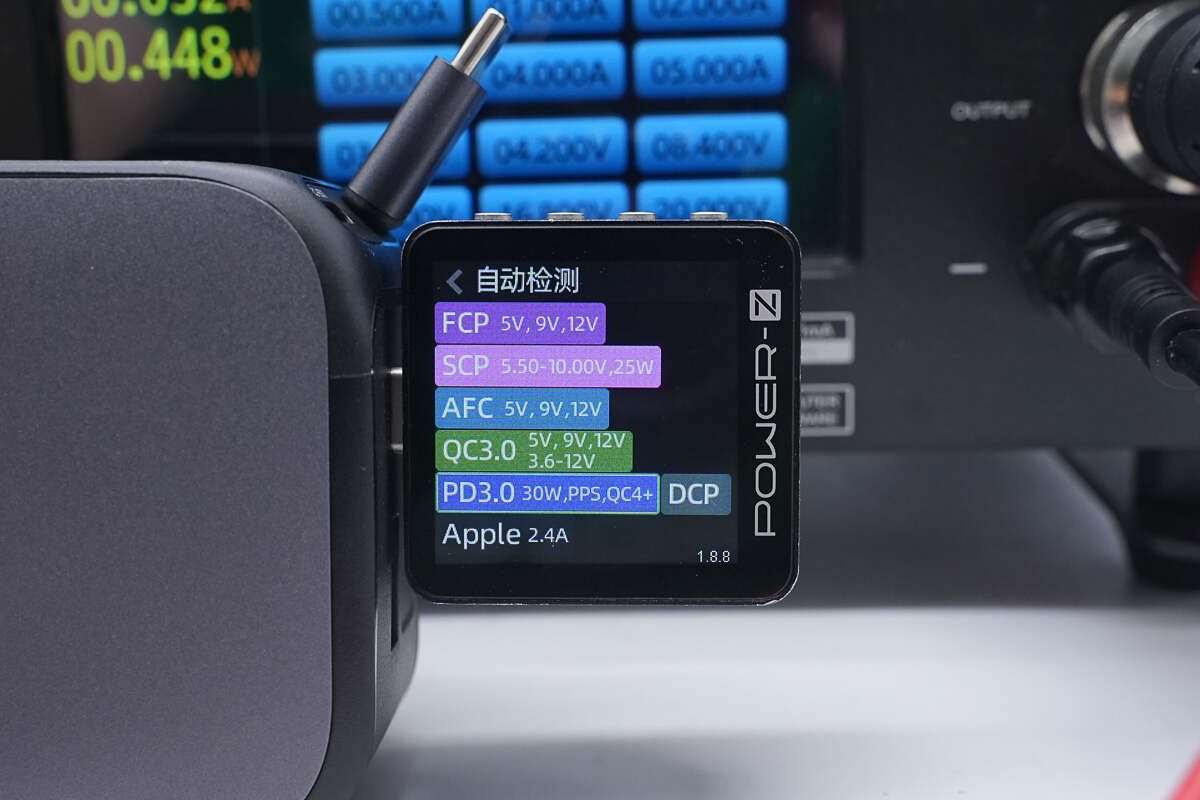
Simulating a 12V DC input, the ChargerLAB POWER-Z KM003C shows that the USB-C1 supports QC3.0/4+, FCP, SCP, AFC, PD3.0, PPS, DCP, and Apple 2.4A charging protocols.
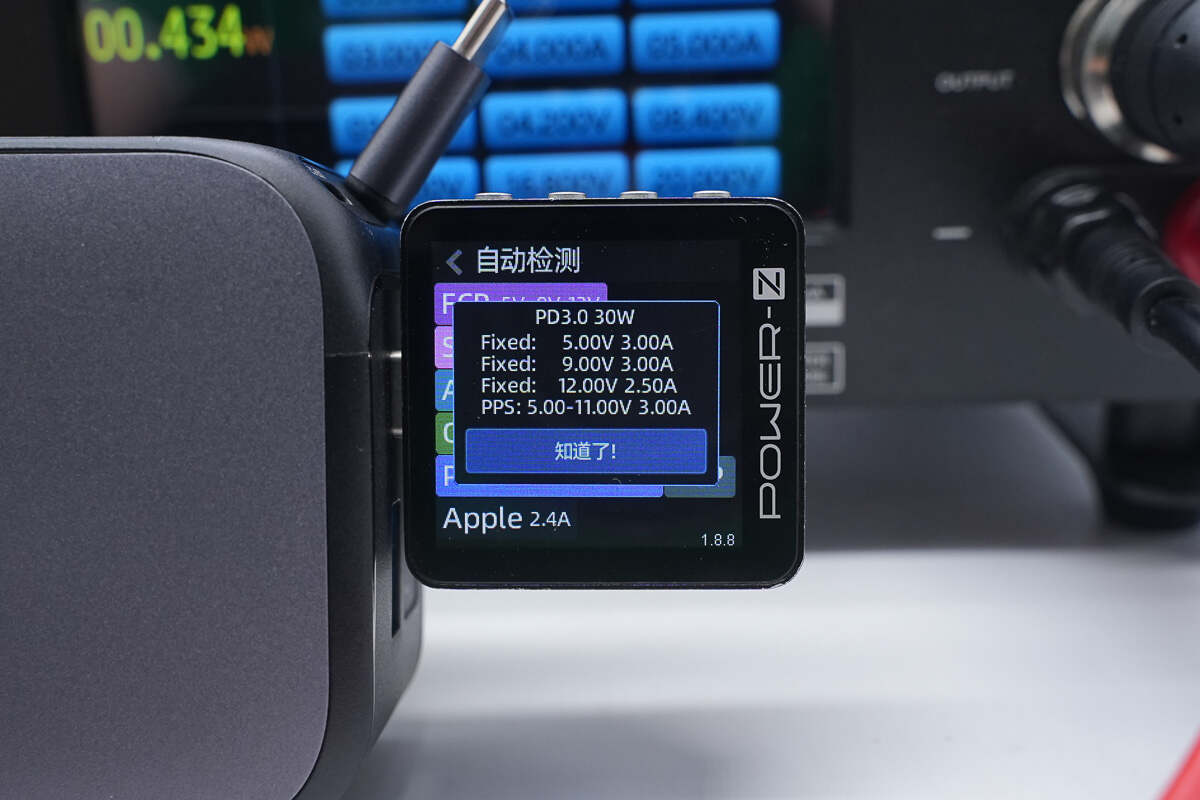
And it has three fixed PDOs of 5V3A, 9V3A, and 12V2.5A. It has one set of PPS, which is 5-11V3A.
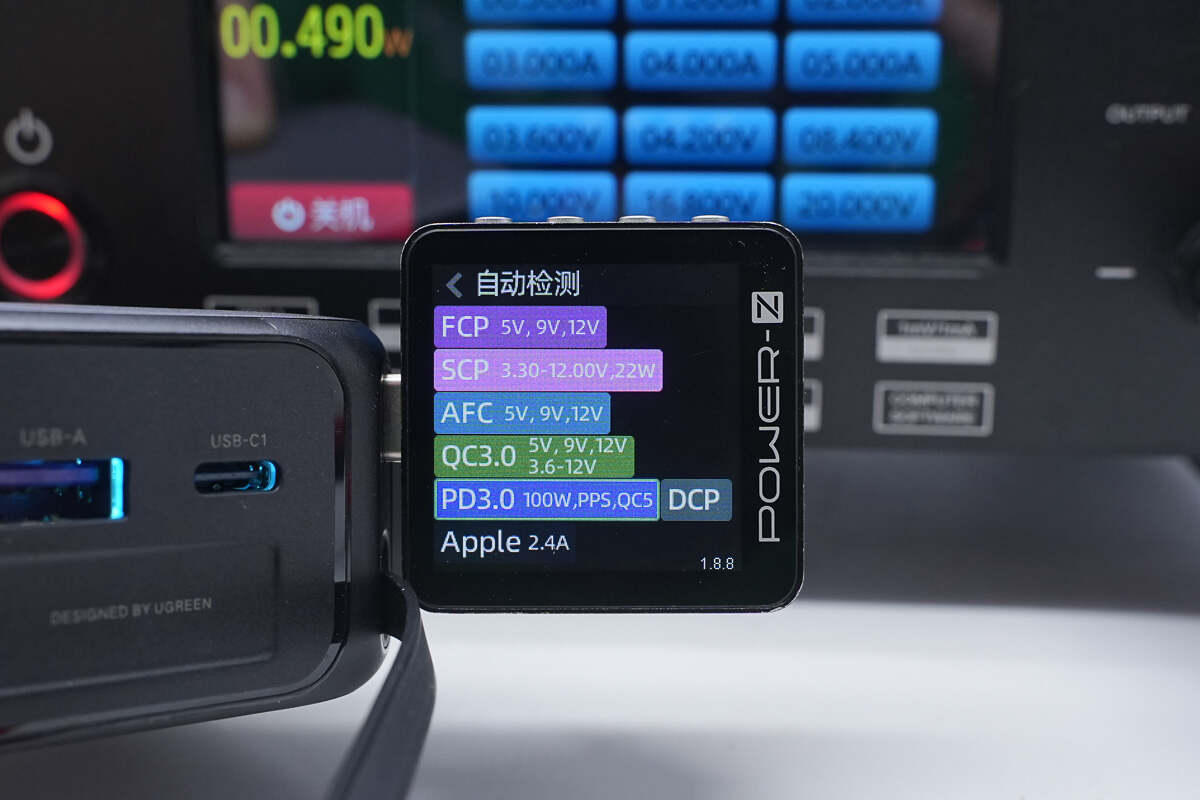
The USB-C2 supports QC3.0/5, FCP, SCP, AFC, PD3.0, PPS, DCP, and Apple 2.4A charging protocols.
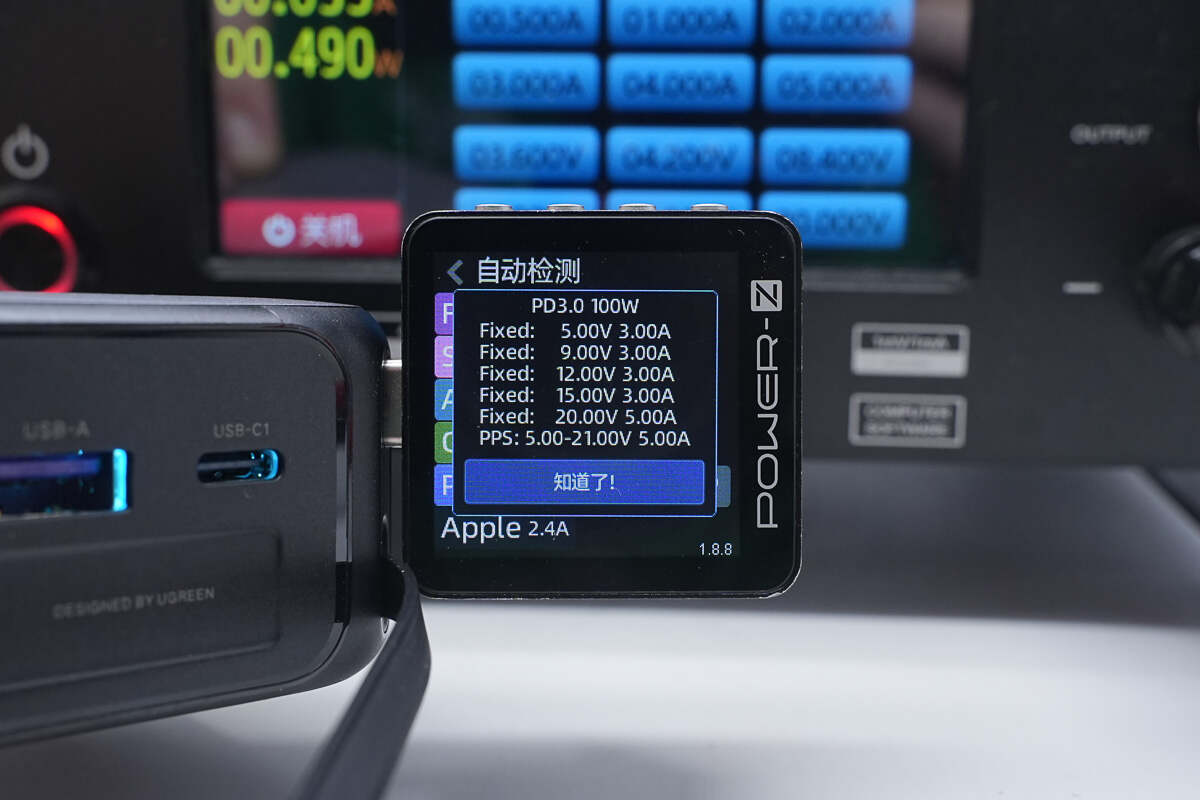
And it has five fixed PDOs of 5V3A, 9V3A, 12V3A, 15V3A, and 20V5A. It has one set of PPS, which is 5-21V5A.

The USB-C cable supports QC3.0/4+, FCP, SCP, AFC, PD3.0, PPS, DCP, and Apple 2.4A charging protocols.
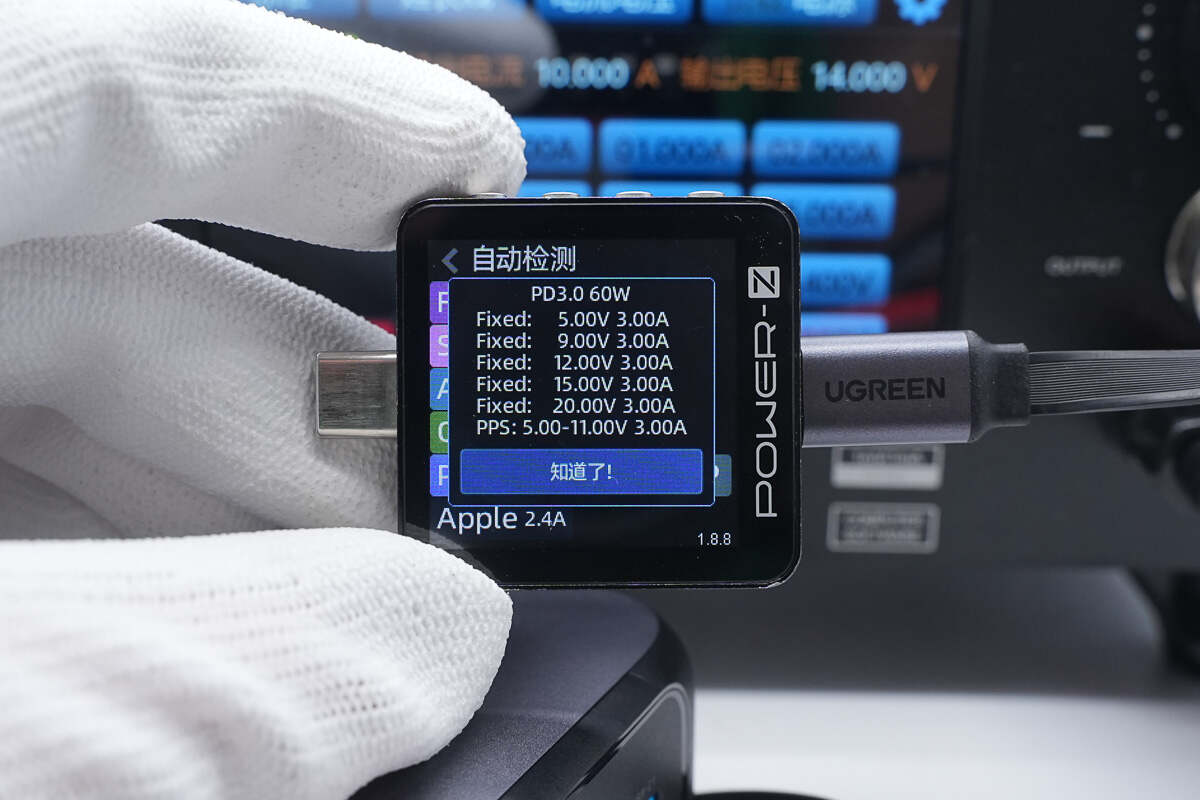
And it has five fixed PDOs of 5V3A, 9V3A, 12V3A, 15V3A, and 20V3A. It has one set of PPS, which is 5-11V3A.
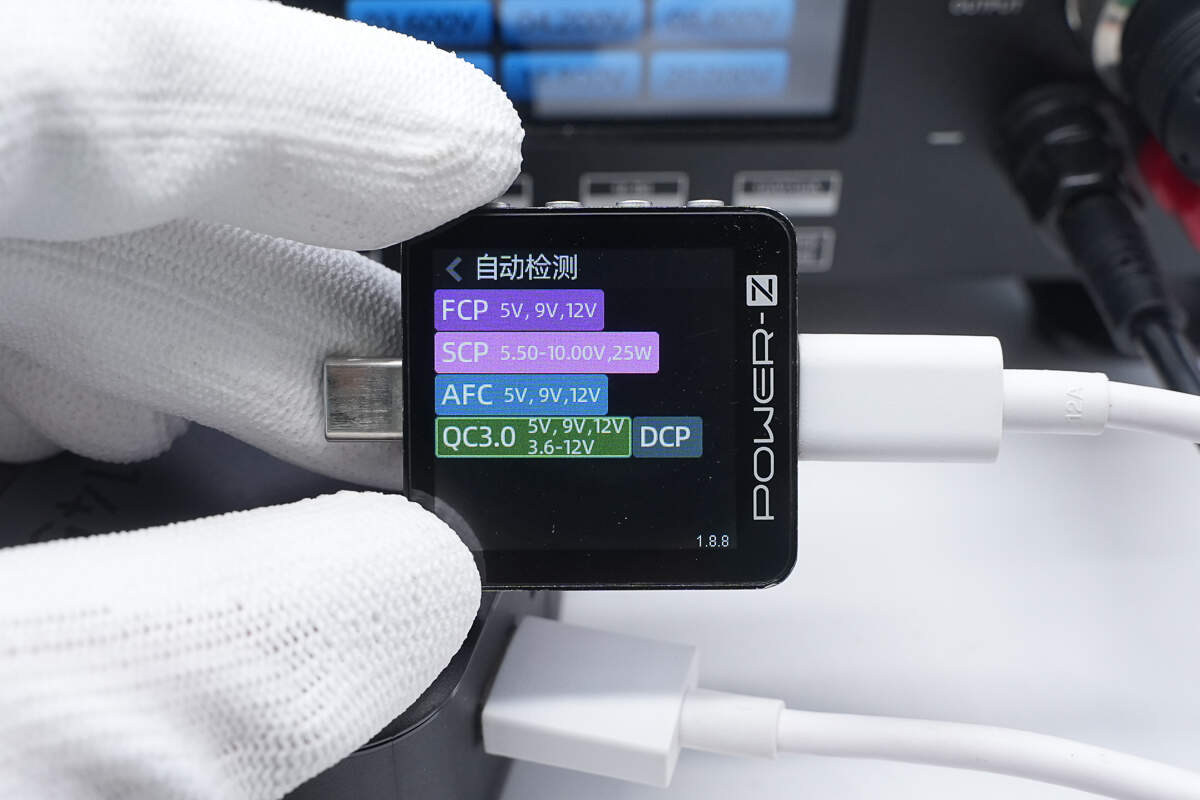
The USB-A port supports QC3.0, FCP, SCP, AFC, and DCP charging protocols.

Simulating a 24V DC input, the USB-C1 was found to support the same charging protocols as under a 12V DC input.

The PDO messages are also identical.
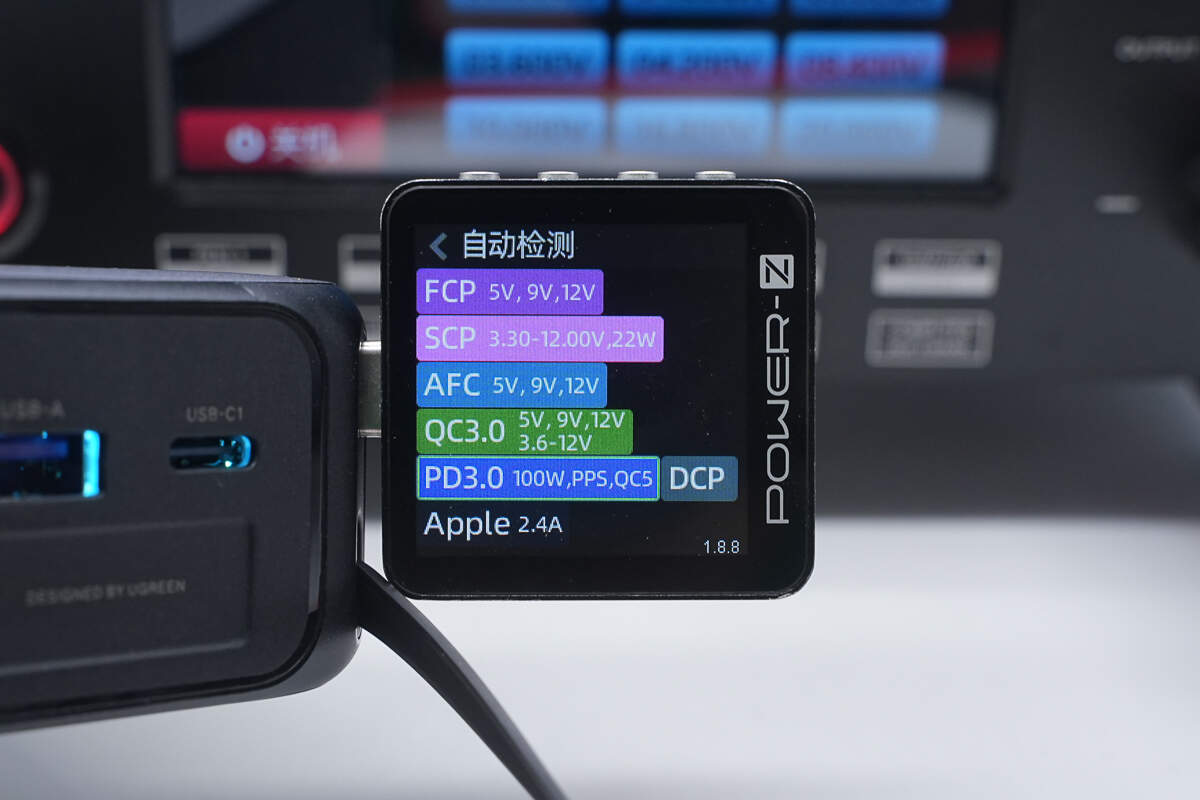
The supported protocols of the USB-C2 are also the same as those under 12V DC input.
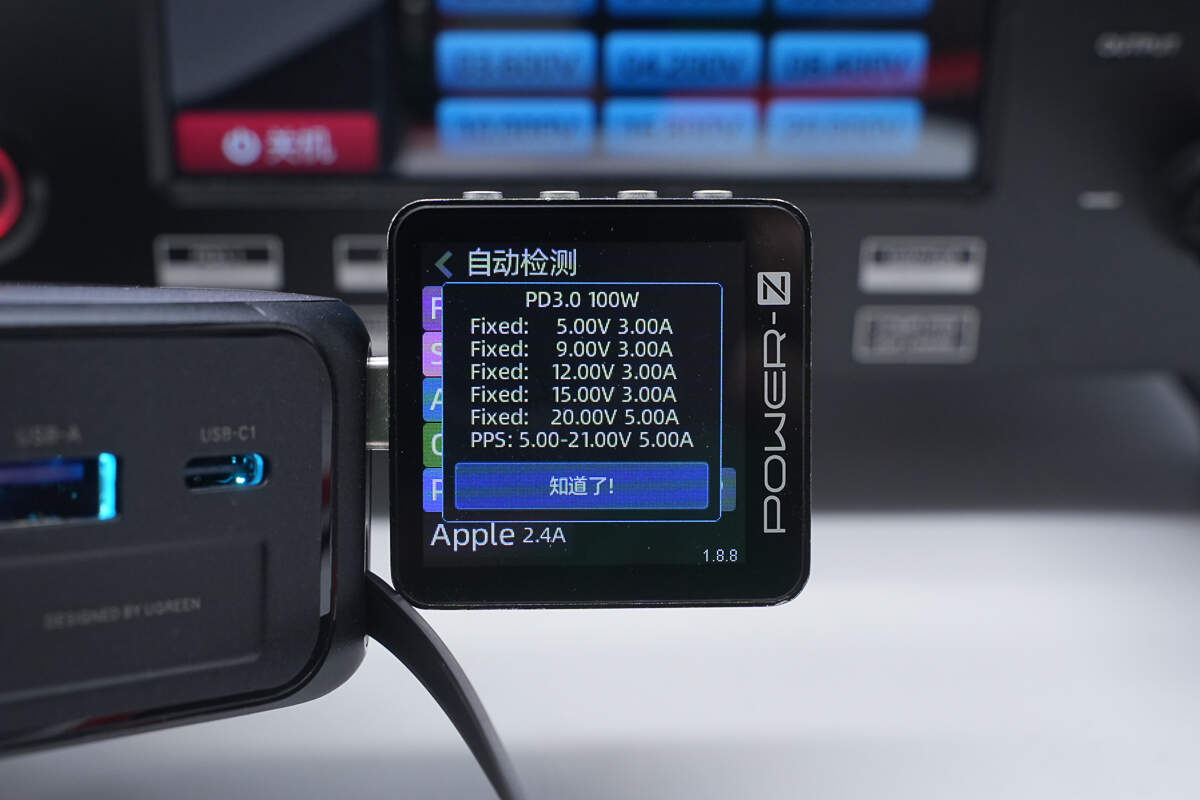
The PDO messages are also identical.
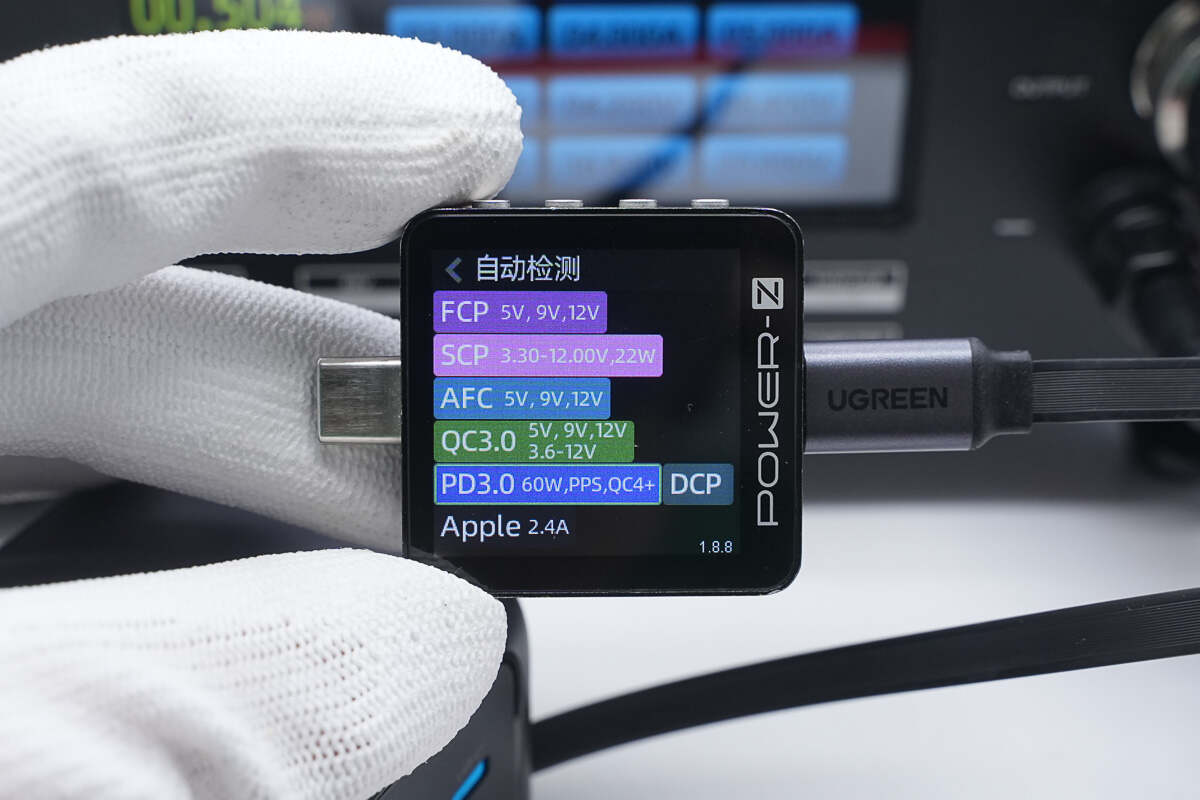
The supported protocols of the USB-C retractable cable are also the same as those under 12V DC input.
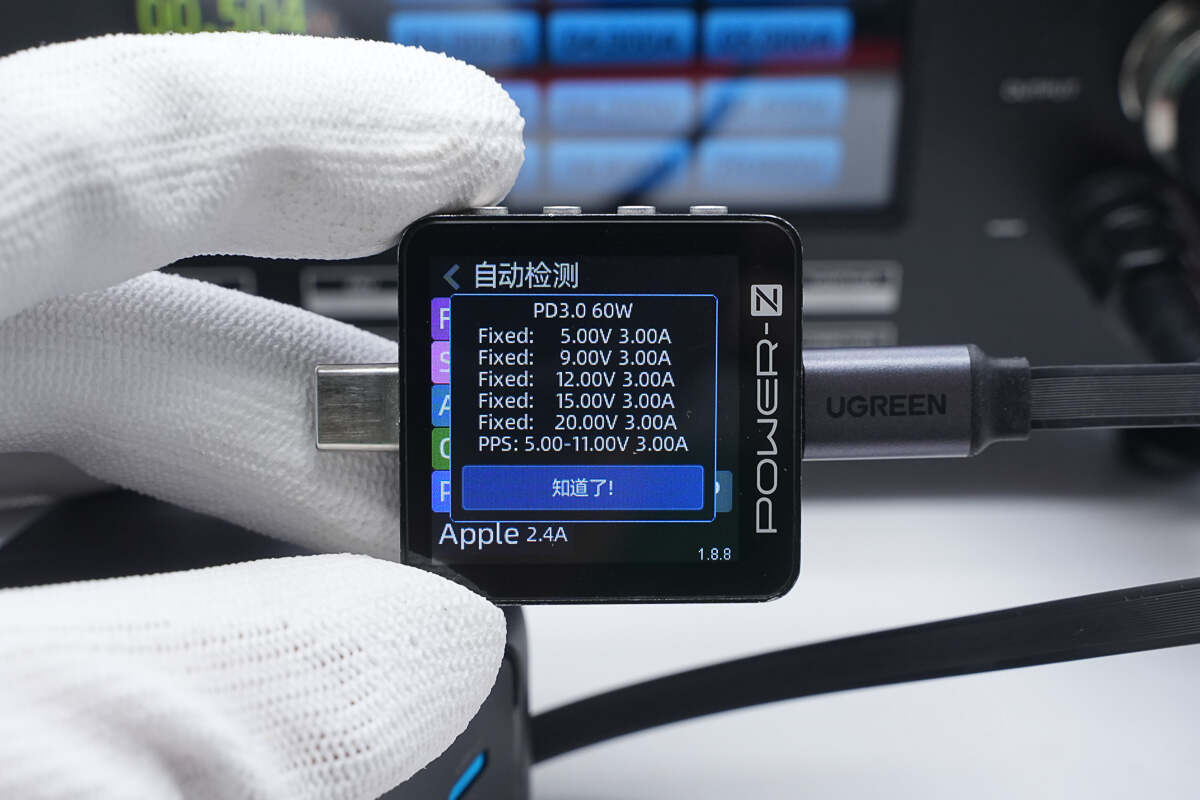
The PDO messages are also identical.
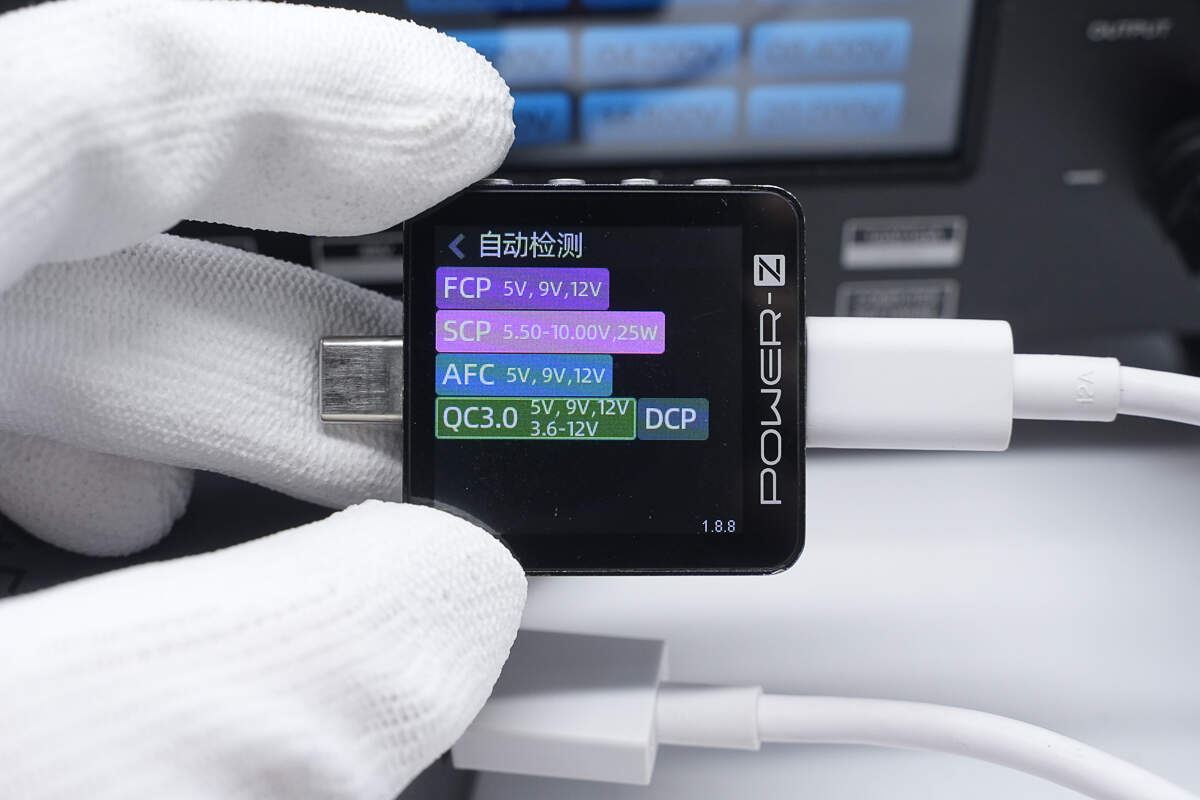
The USB-A port supports the same protocols under both input conditions.
Teardown
Next, let's take it apart to see its internal components and structure.
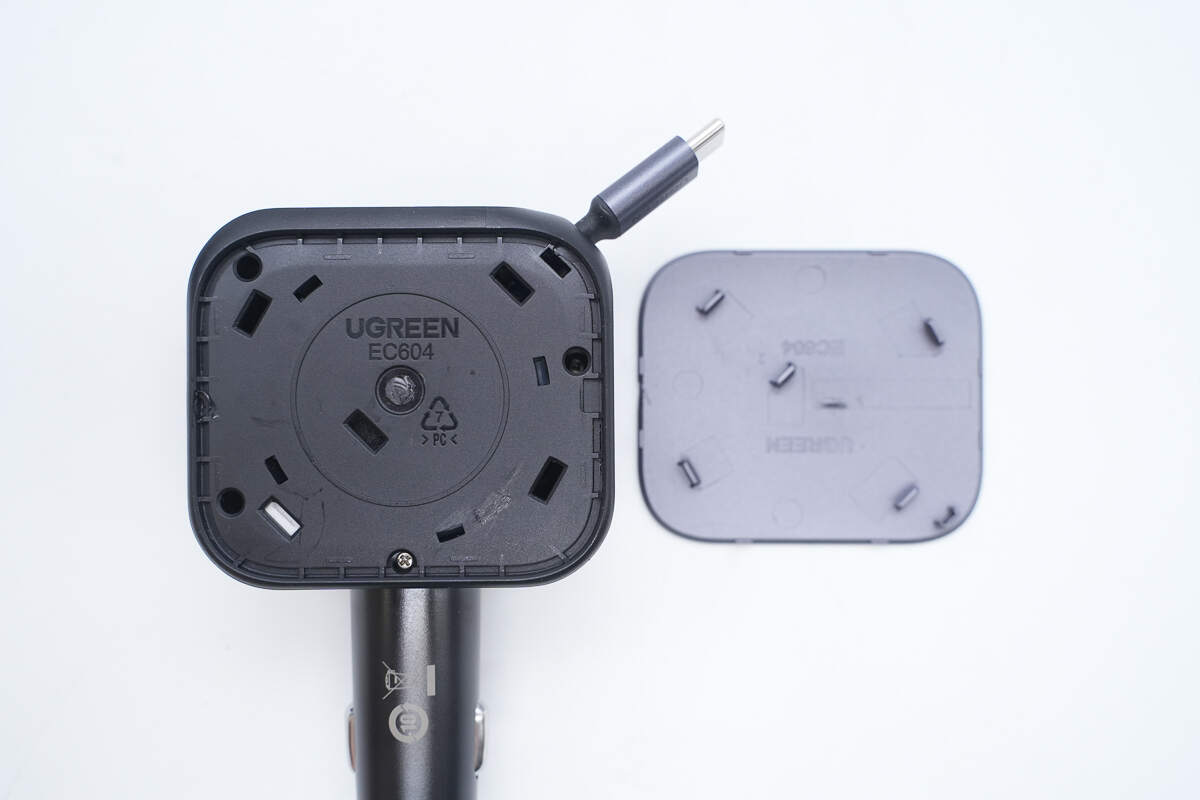
The decorative panel is removed to reveal that the internal structure is secured with screws.
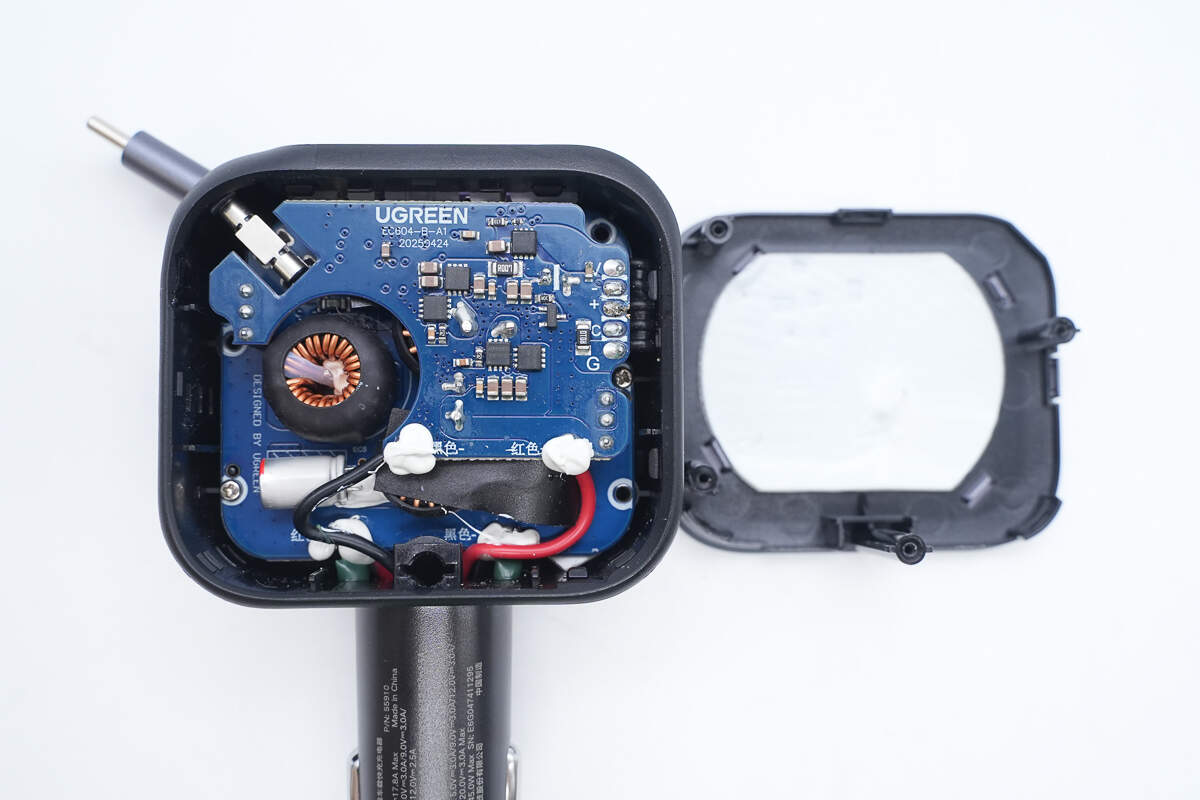
After removing the screws and opening the black panel, the internal PCBA module is revealed.
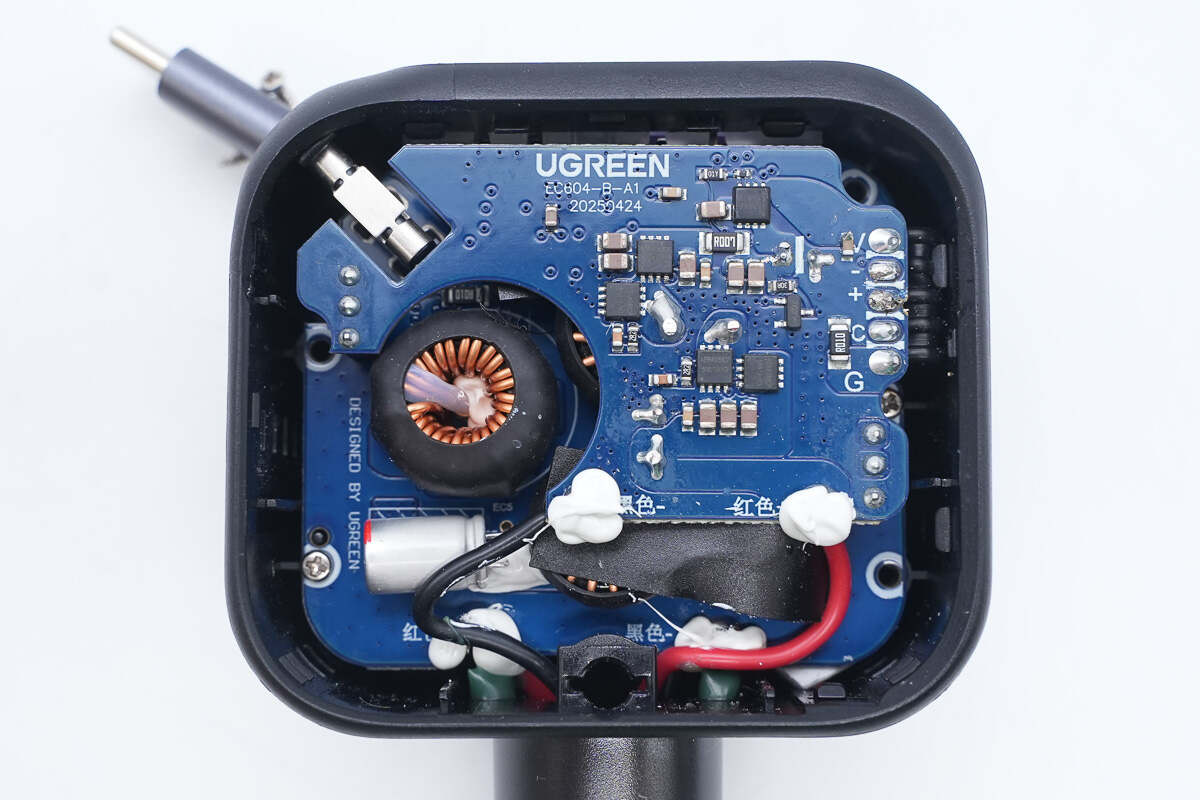
The PCBA module is secured in place using screws and mounting posts.
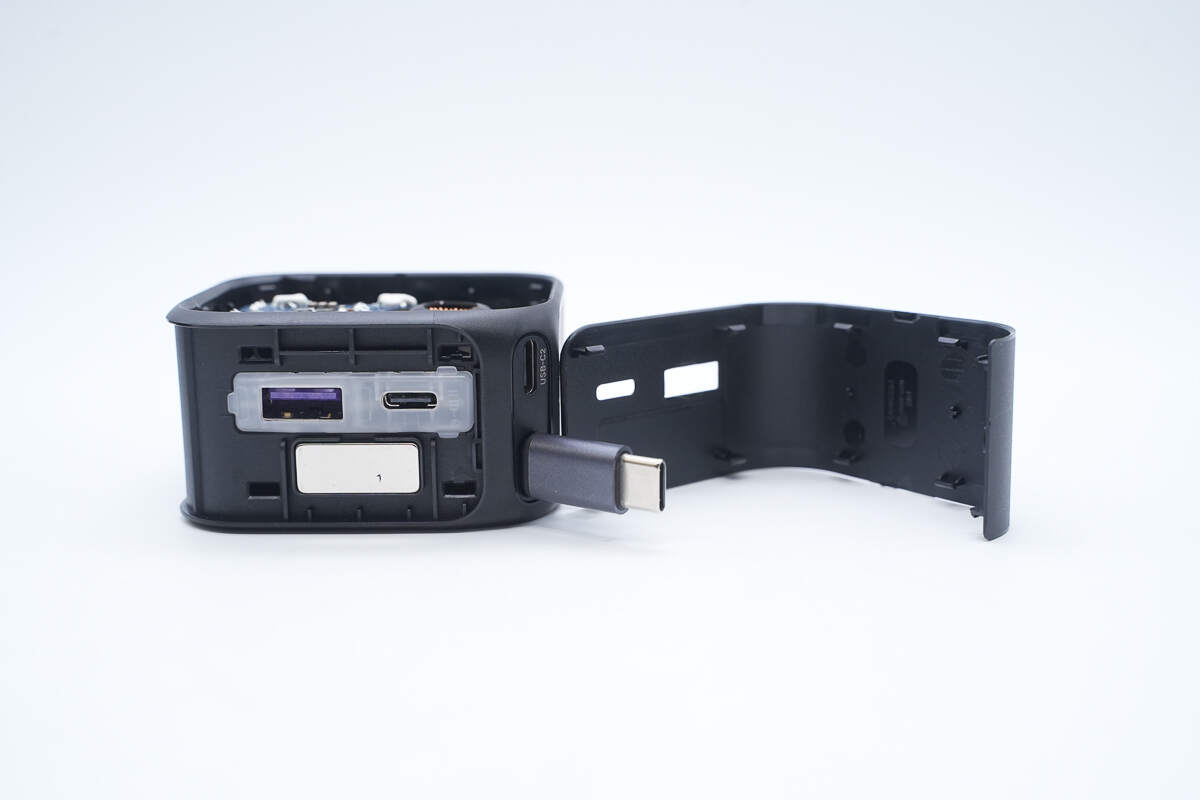
Remove the top panel, which is secured with clips.
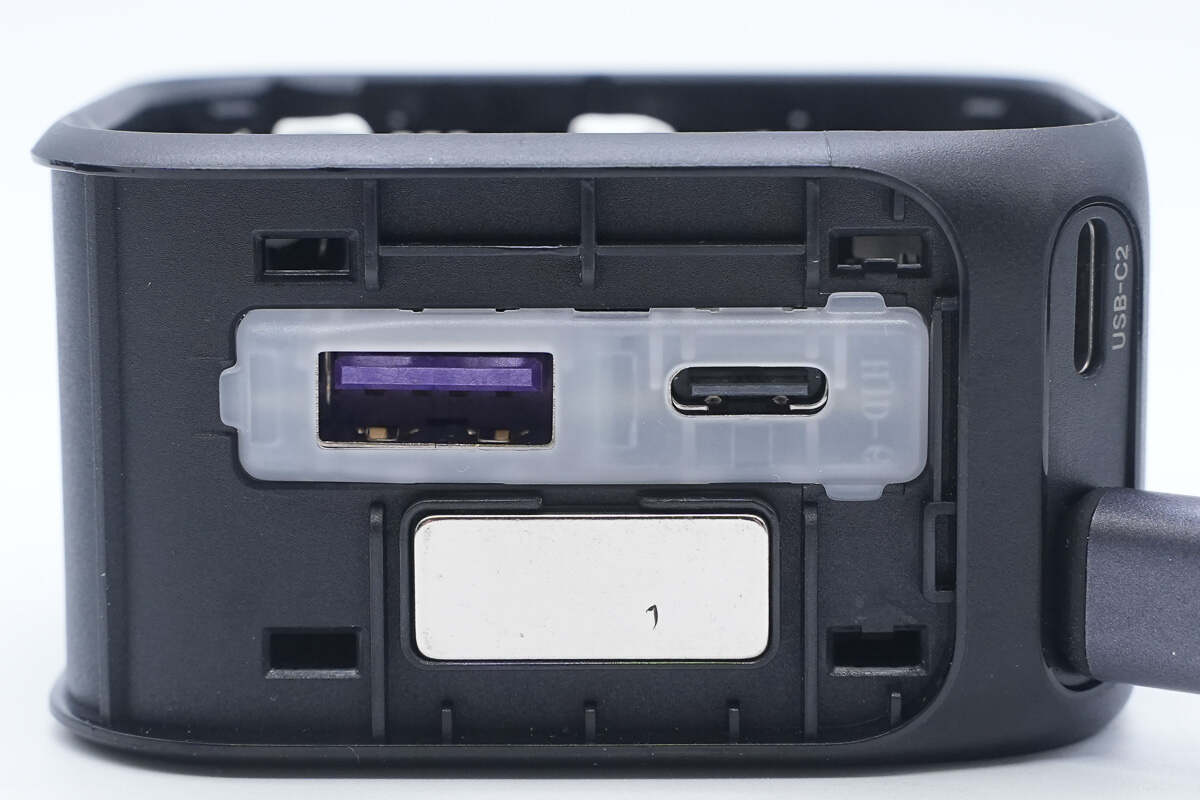
A magnet is embedded in the recessed area, and a light-guiding plastic piece is positioned near the USB ports.
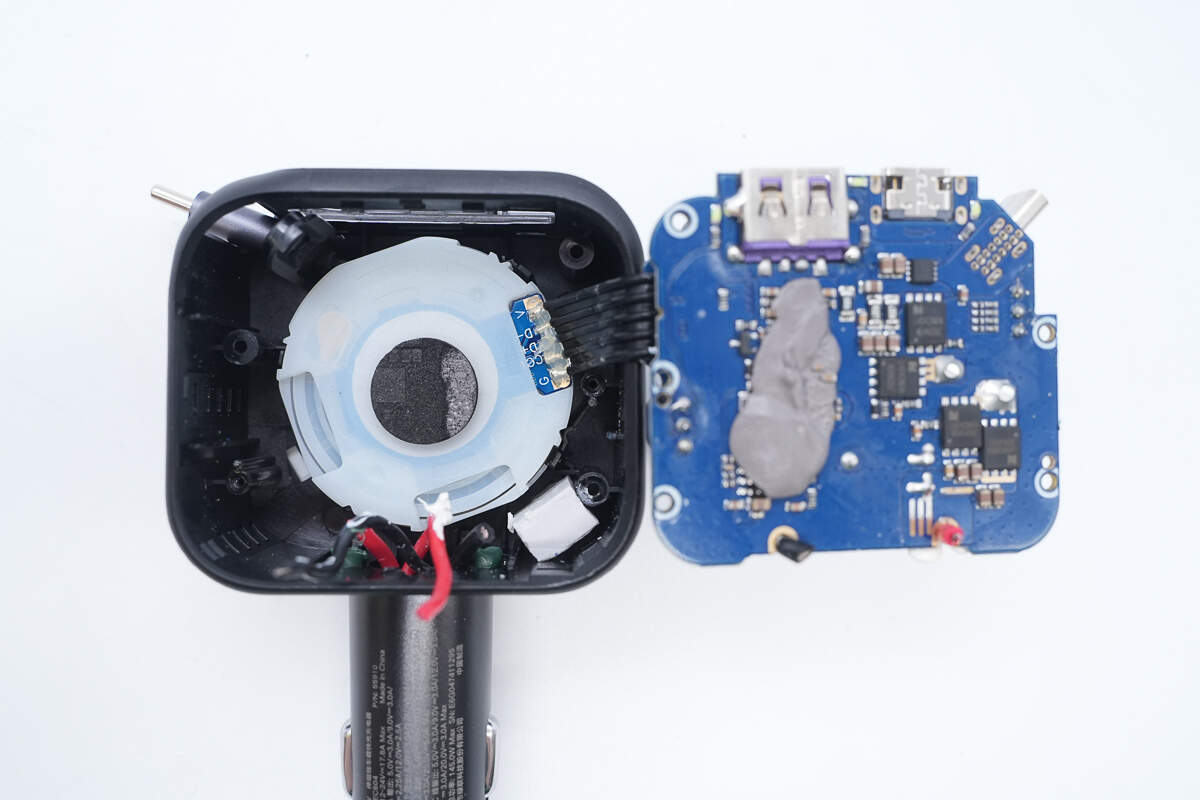
Remove the PCBA module. Below it is the retractable cable module, connected by a flat cable.
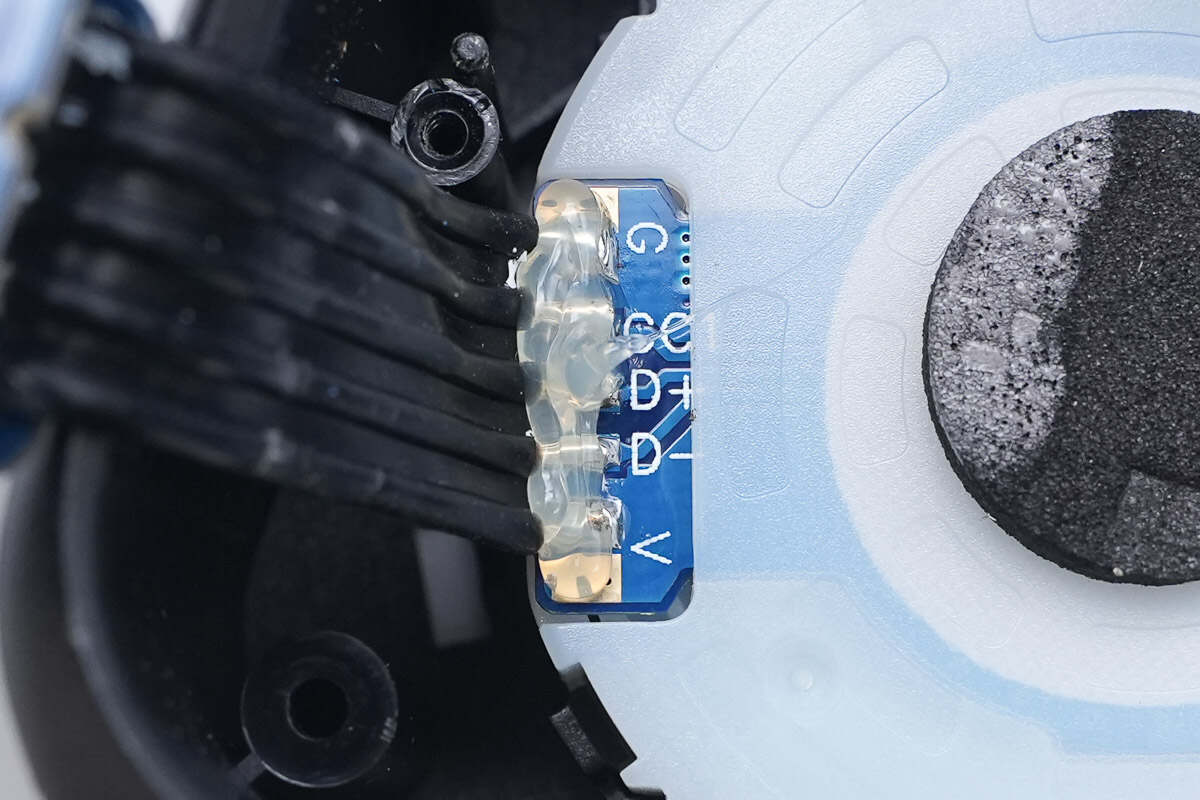
The solder joints of the flat cable are sealed with adhesive.
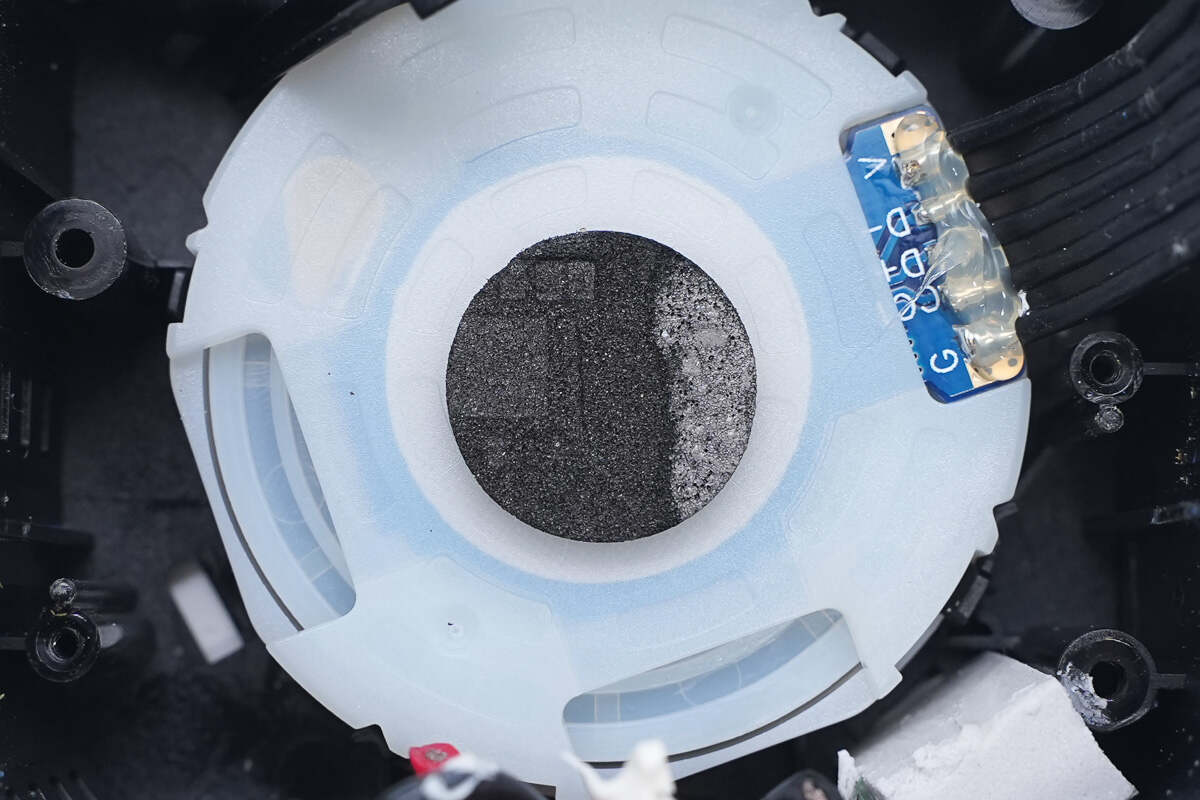
A cushioning foam pad is attached to the center of the retractable cable module.
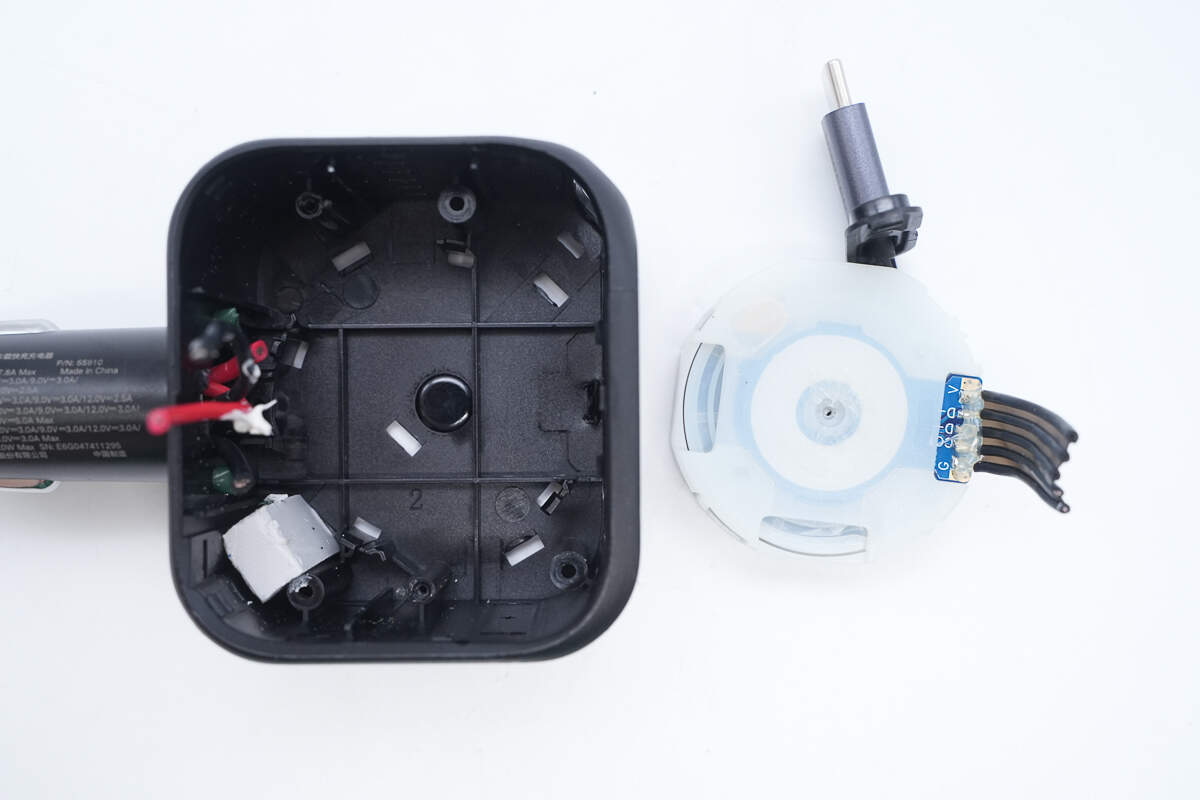
Remove the retractable cable module.
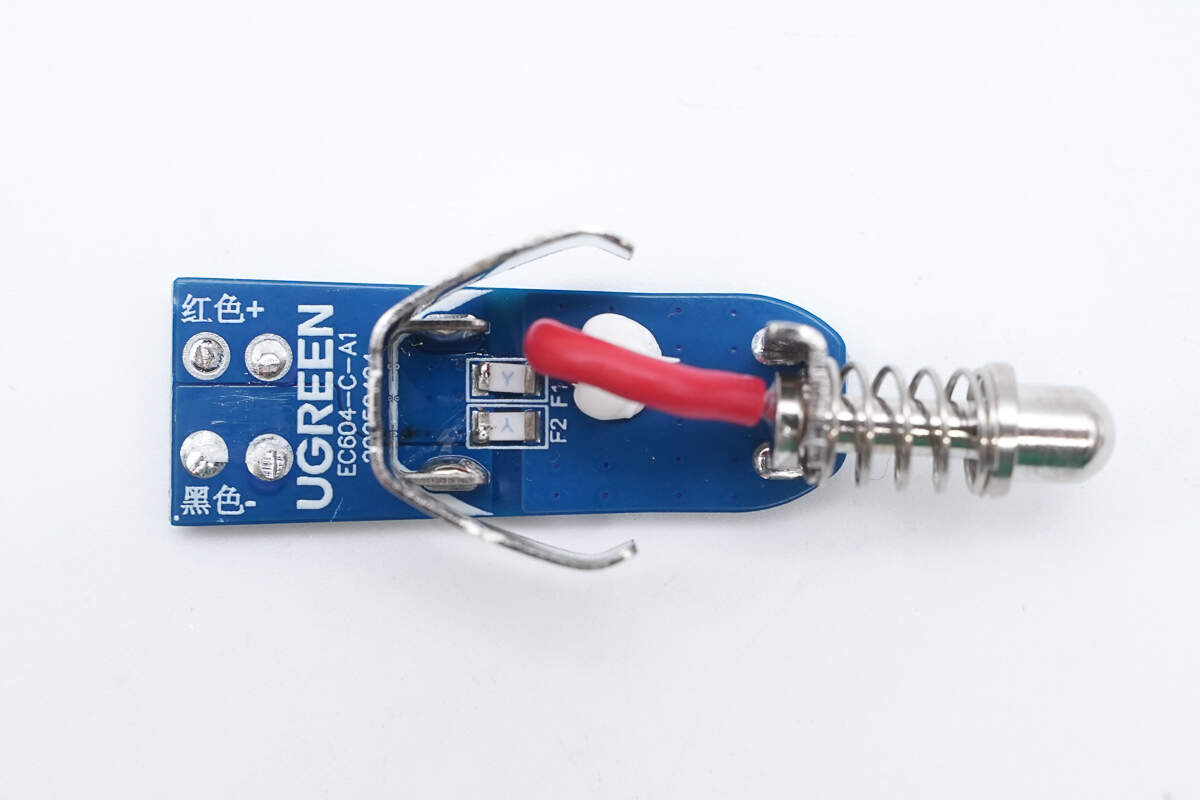
Remove the input-end PCB, which assists in soldering the positive and negative metal contacts and wires. On the front side, there are two SMD fuses.
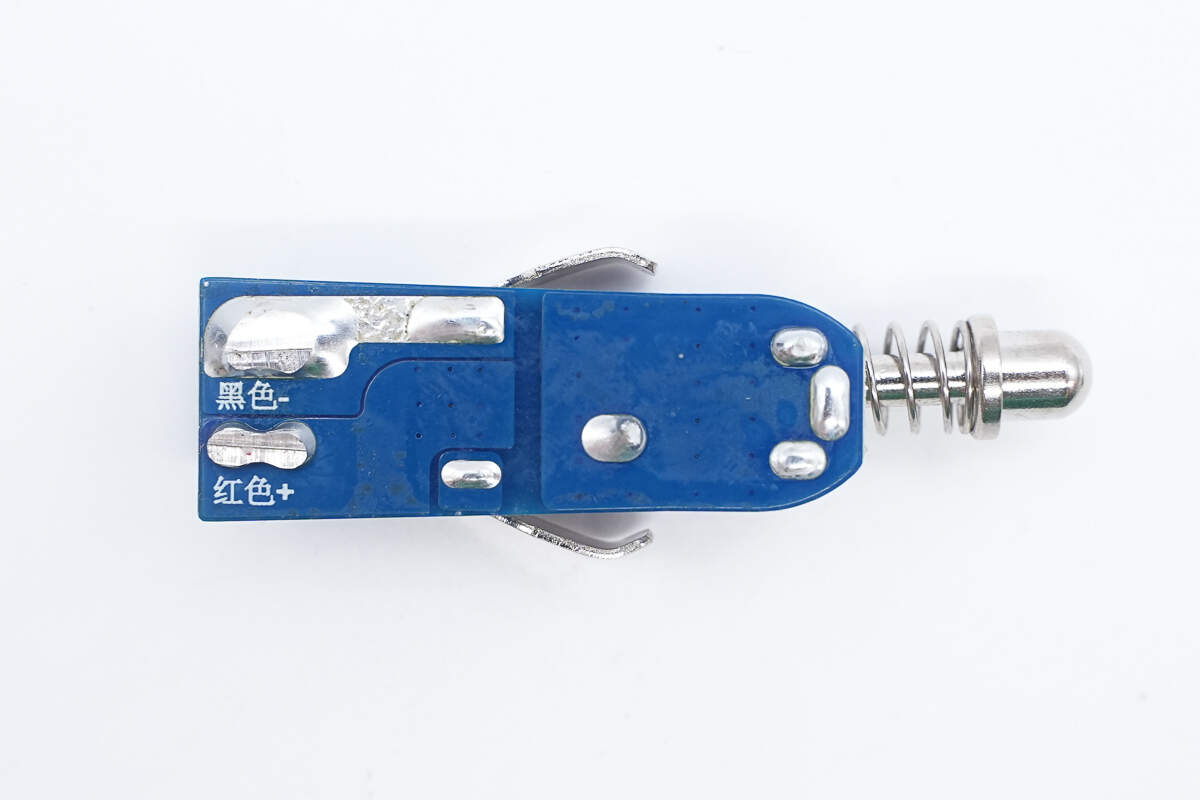
The back side has no components.

The two-layer PCBs are connected via pin headers.
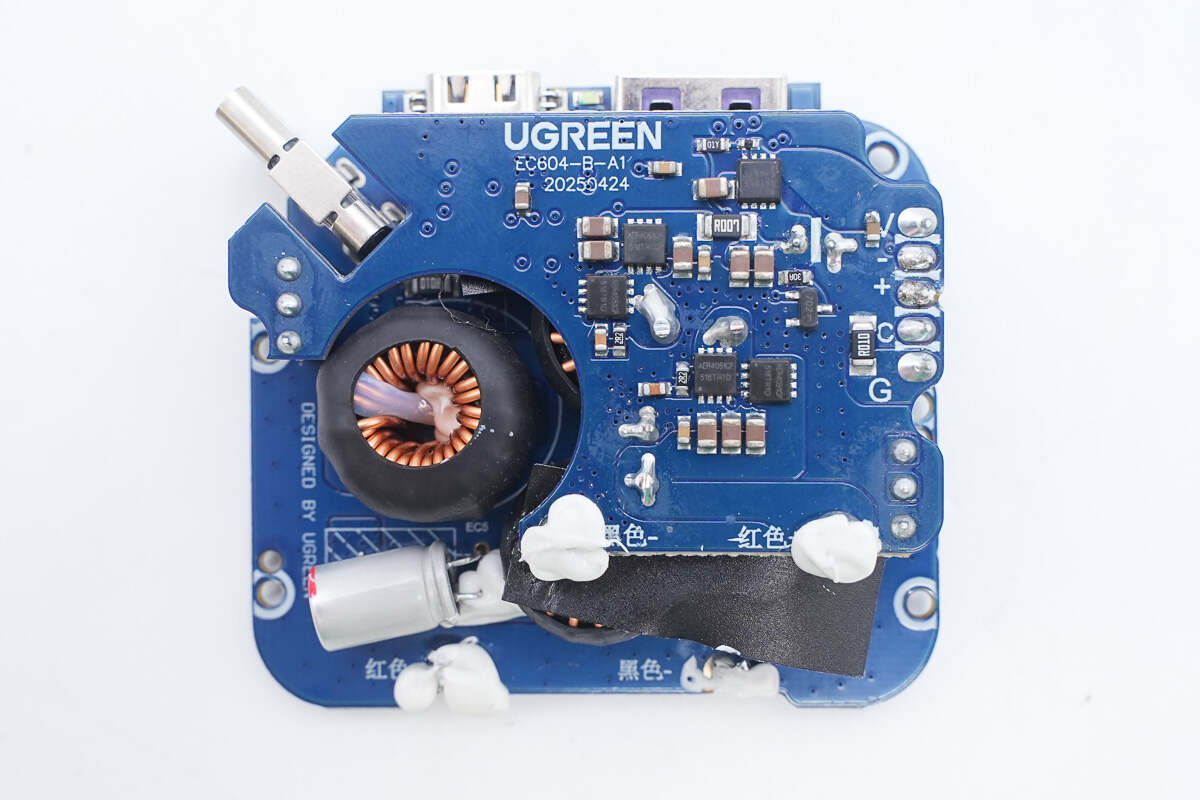
The upper PCB has cutouts corresponding to the positions of the inductor and the USB-C socket.
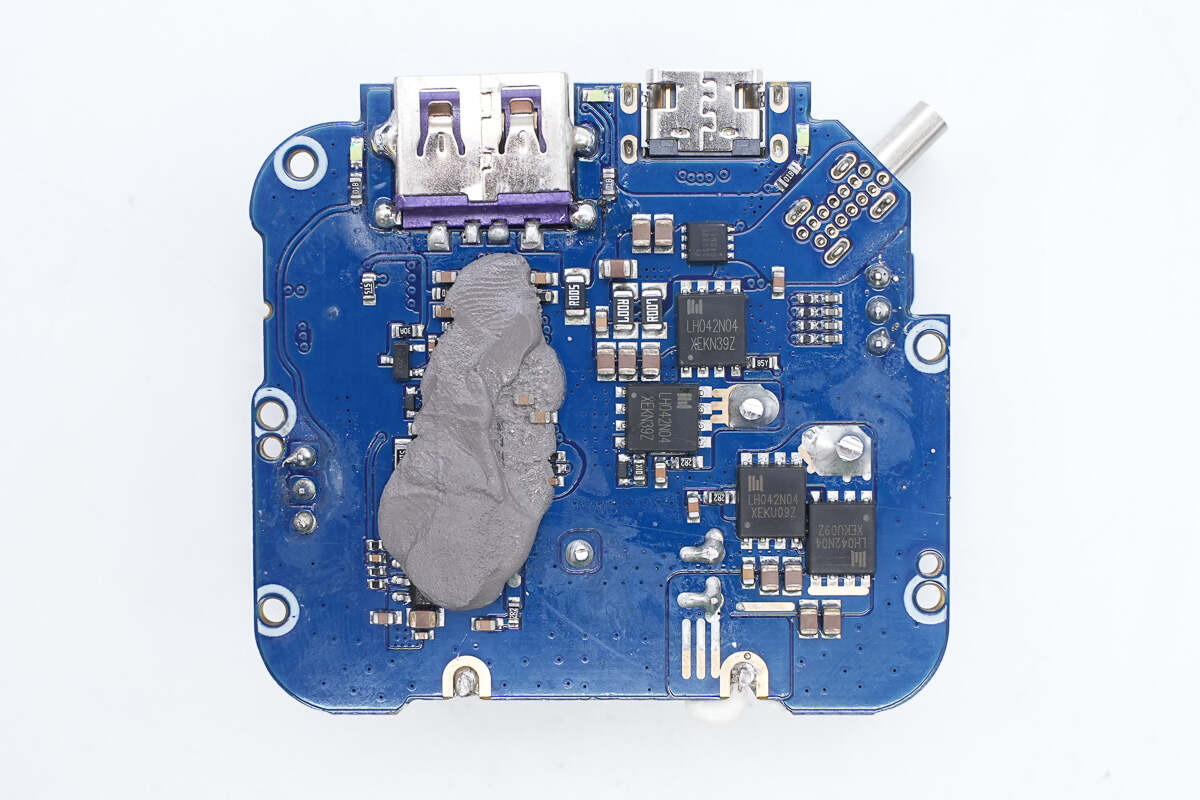
The back of the lower PCB is coated with adhesive for heat dissipation.
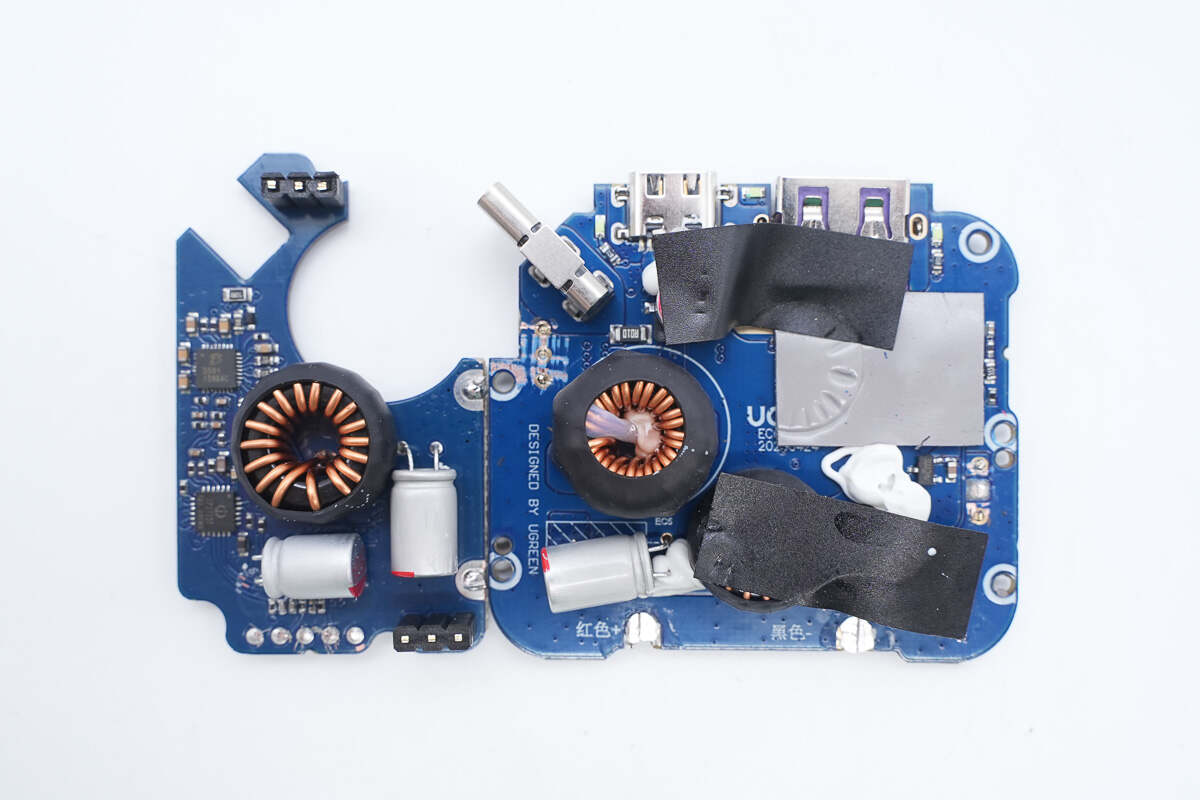
Separate the two PCBs. The front side of the lower PCB has a thermal pad and a mica sheet.
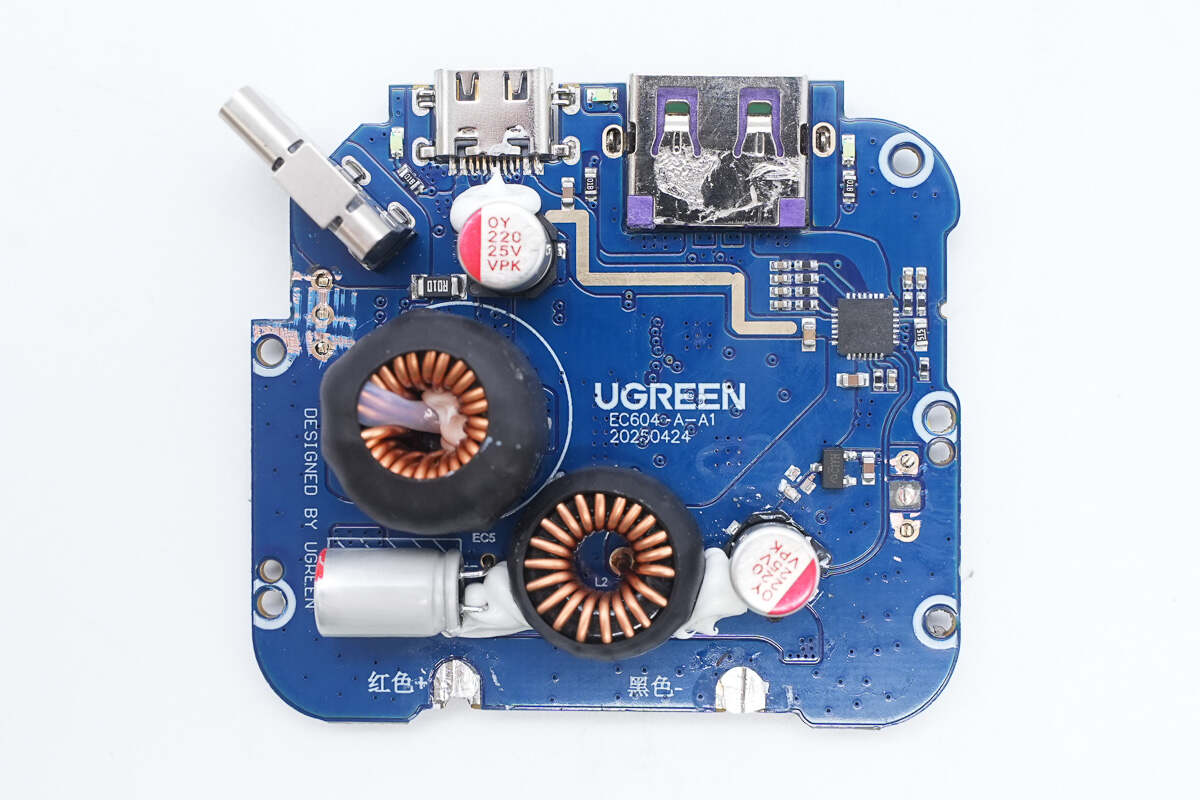
The front side of the lower PCB contains inductors, capacitors, and other components for two voltage regulation circuits. In the upper right corner, there is a protocol chip for the USB-C1 and USB-A ports.
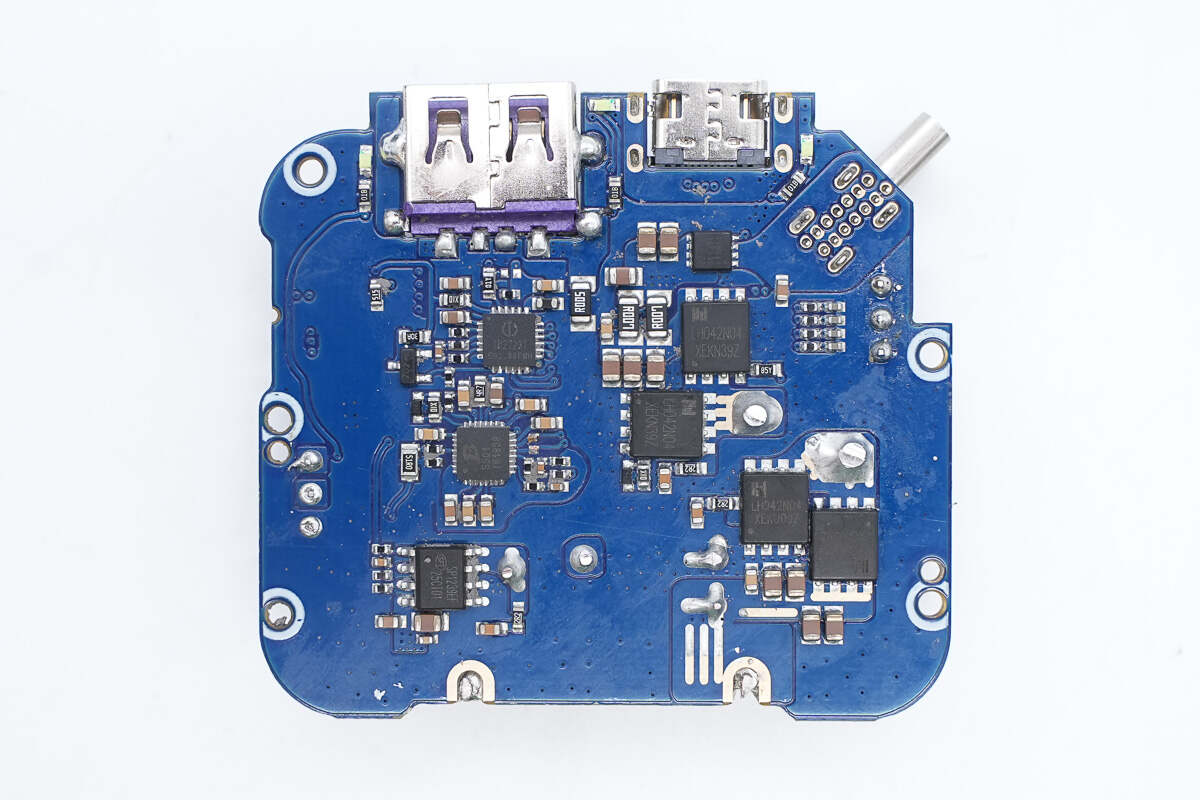
The back side houses the USB-C2 synchronous buck-boost controller, synchronous buck-boost MOSFETs, protocol chip, VBUS MOSFET, and another synchronous buck converter.
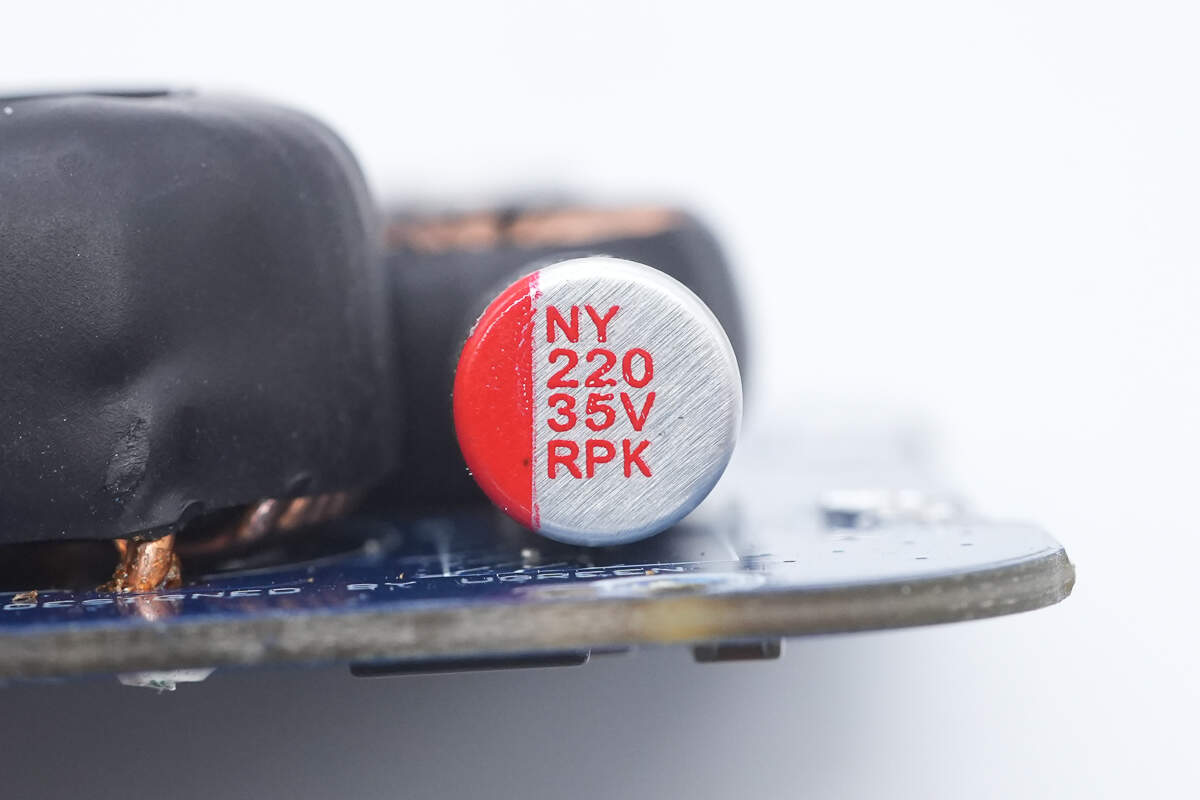
The solid capacitor used for input filtering is rated at 35V, 220μF.
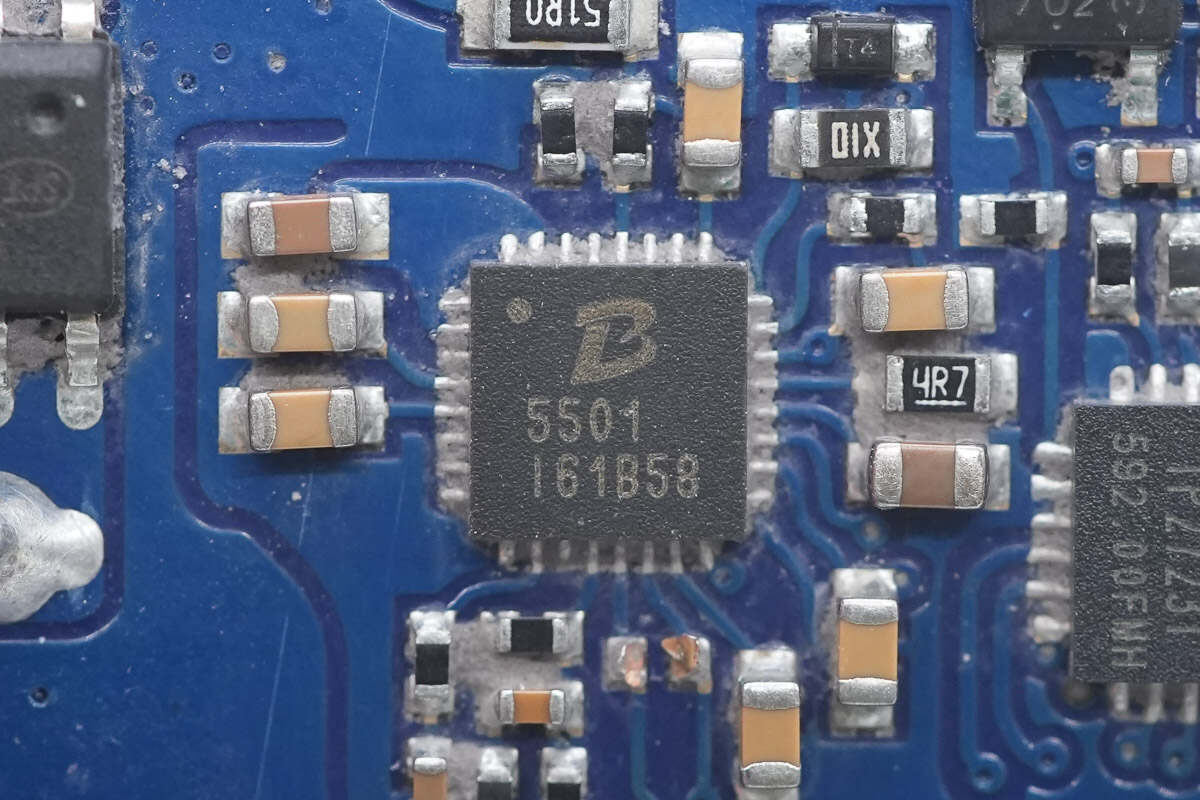
The USB-C2 synchronous buck-boost controller is from Powlicon, model PL5501. It supports a wide input voltage up to 32V and a continuous load current of 20A. It uses constant-on-time control in buck, buck-boost, and boost modes to achieve excellent load and voltage regulation. The switching frequency is programmable, supporting 150kHz, 300kHz, 600kHz, or 1.2MHz. The controller comes in a QFN 4×4-32 package.
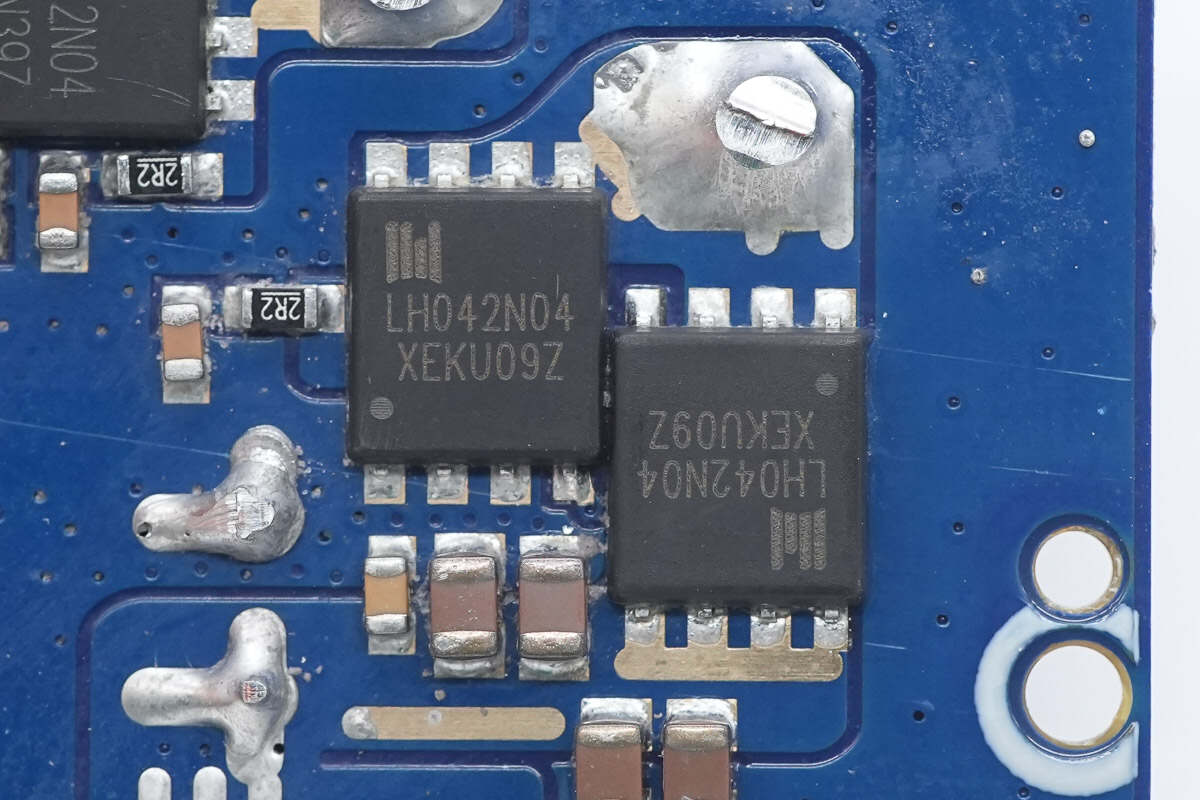
The synchronous buck-boost MOSFETs are from LIHOMICRO, model LH042N04. They are N-channel MOSFETs with a voltage rating of 40V and an on-resistance of 4.2mΩ, housed in a DFN 3×3 package.
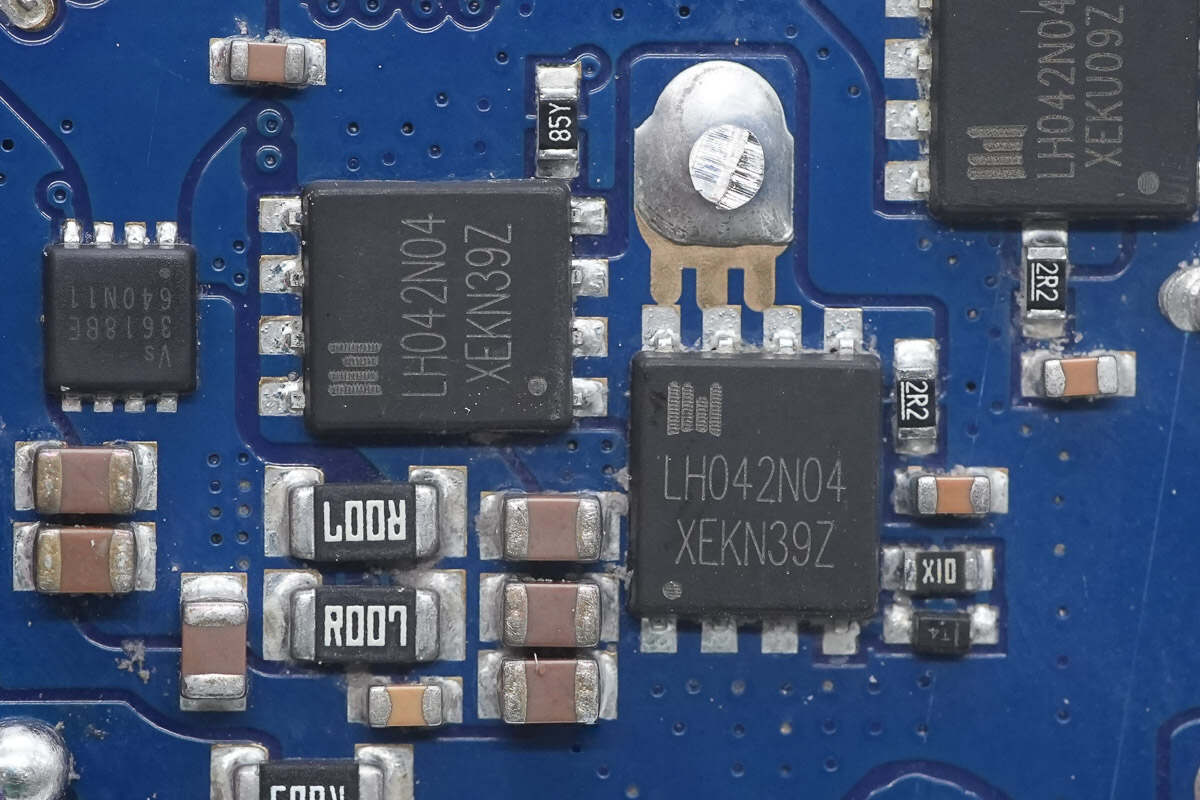
Close-up of the other two LIHOMICRO LH042N04 synchronous buck-boost MOSFETs.
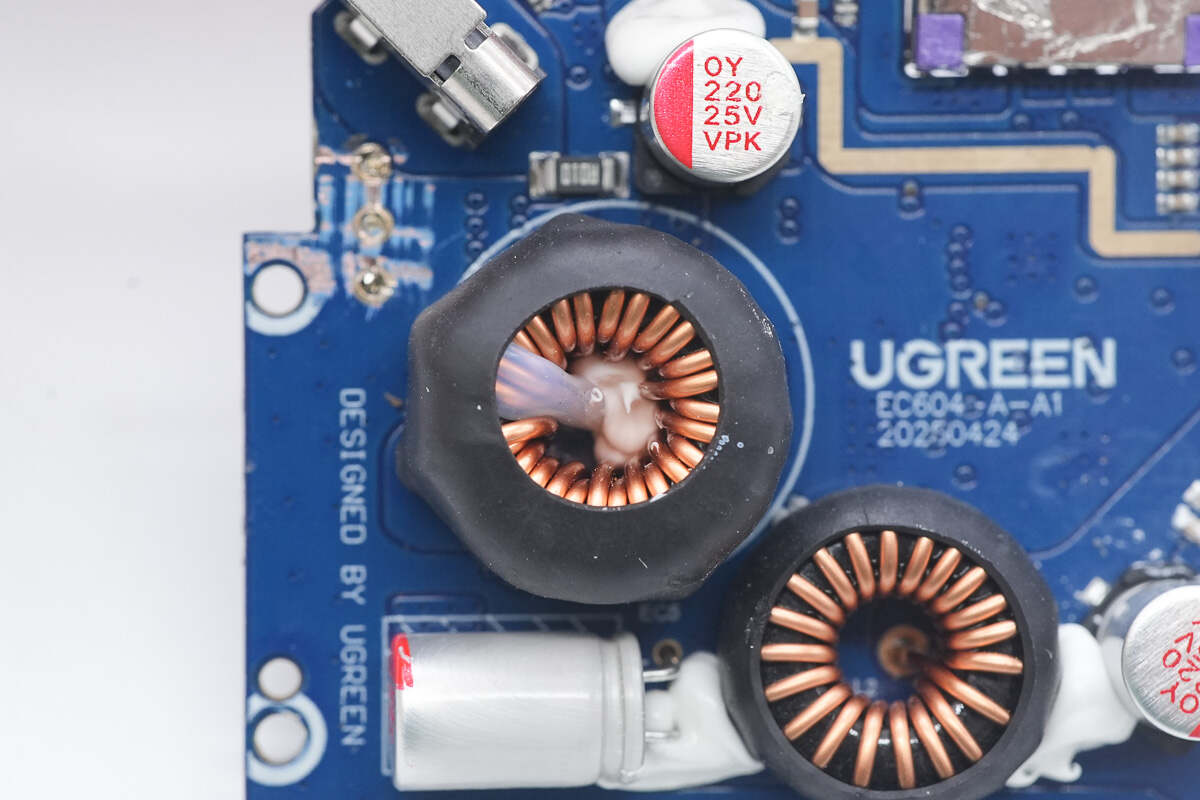
The buck-boost inductor is insulated with heat-shrink tubing, and its center is reinforced with adhesive.
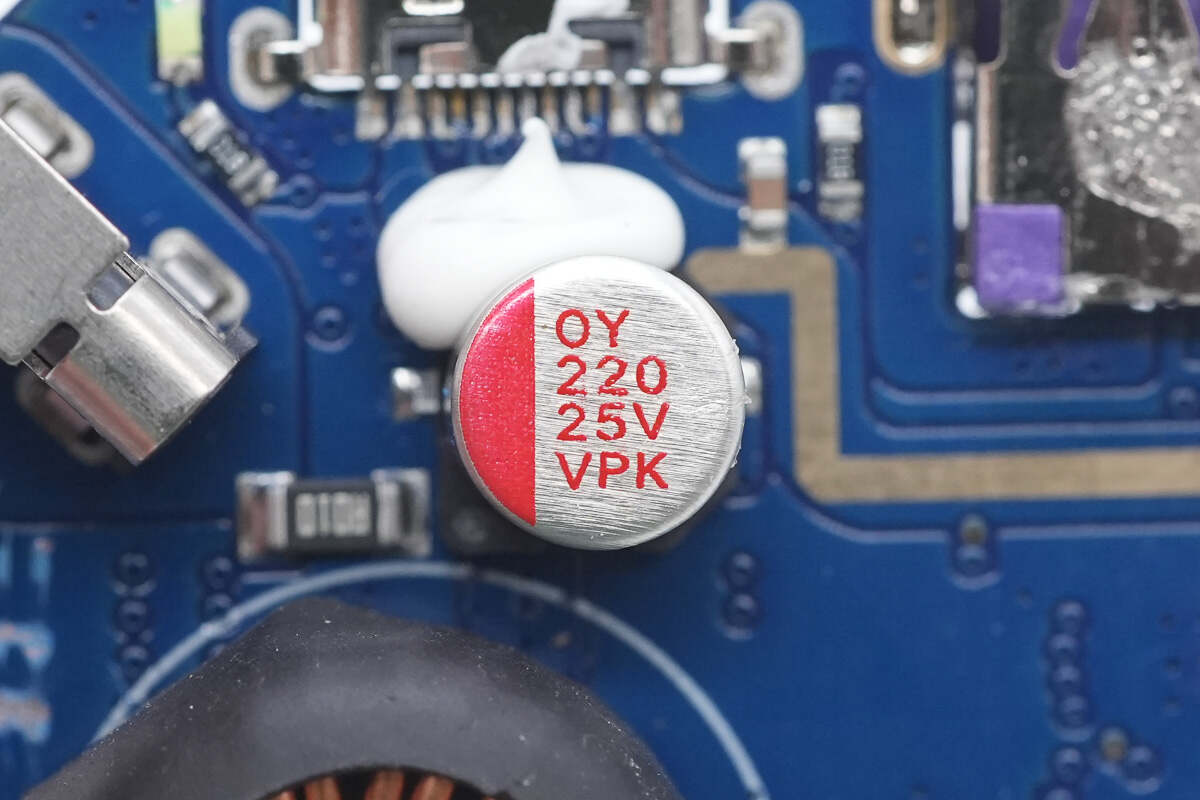
The solid capacitor used for output filtering is rated at 25V, 220μF.

The protocol chip is the IP2723T from Injoinic. It has been certified by the USB-IF for PD3.0 and PPS (TID: 3135) and is a highly integrated fast-charging protocol IC designed for USB output ports. It supports a wide range of fast-charging protocols, including USB Type-C DFP, PD2.0/3.0, PPS, HVDCP, QC4, QC4+, QC3.0/2.0, FCP, SCP, AFC, MTK PE+ 2.0/1.1, Apple 2.4A, BC1.2, and Samsung 2.0A.
The IP2723T provides a complete Type-C solution for unidirectional output applications such as adapters and car chargers. With its high level of integration and rich features, it requires minimal external components, helping reduce the overall solution size and lower BOM costs.
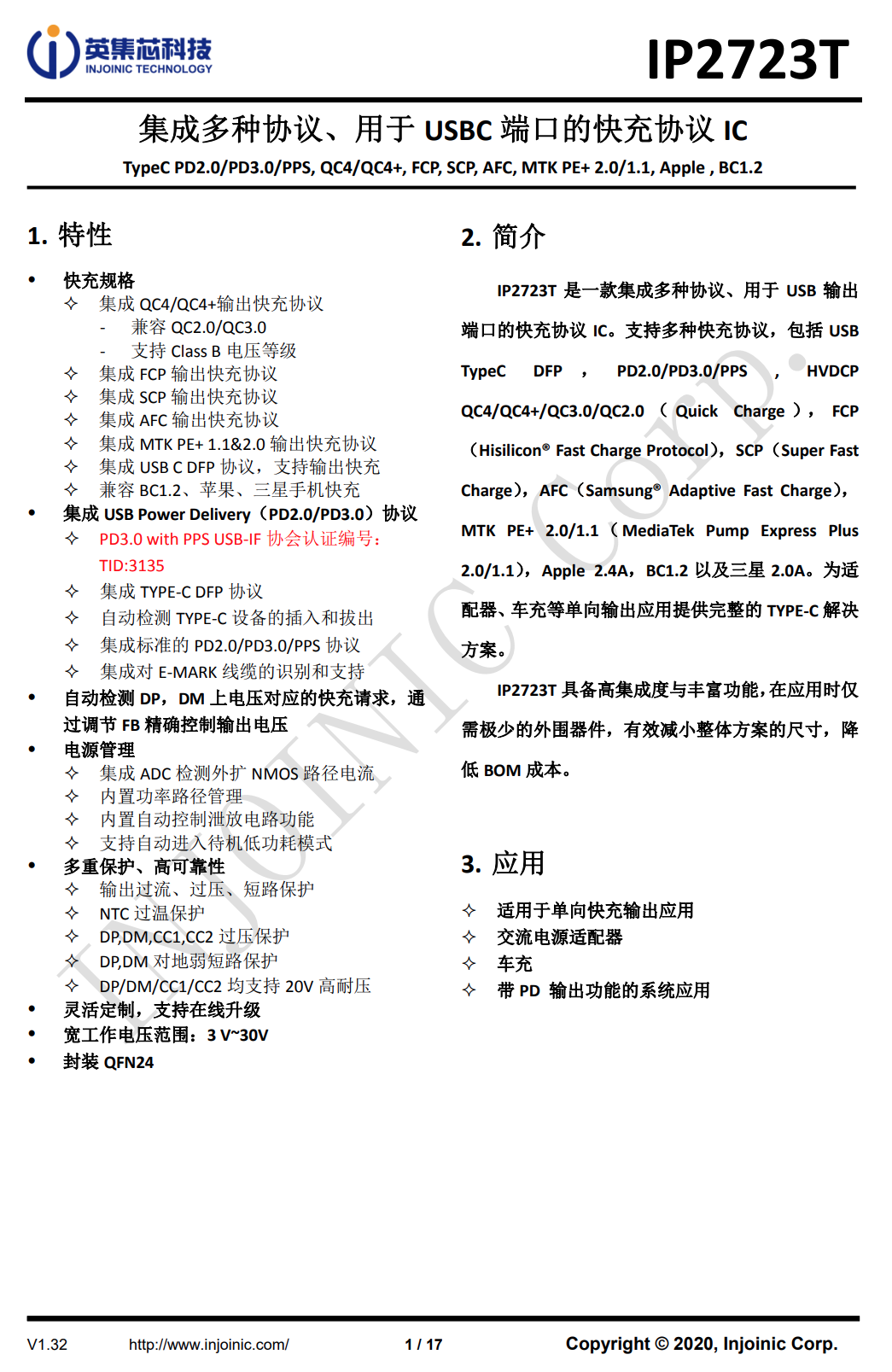
Here is the information about Injoinic IP2723T.
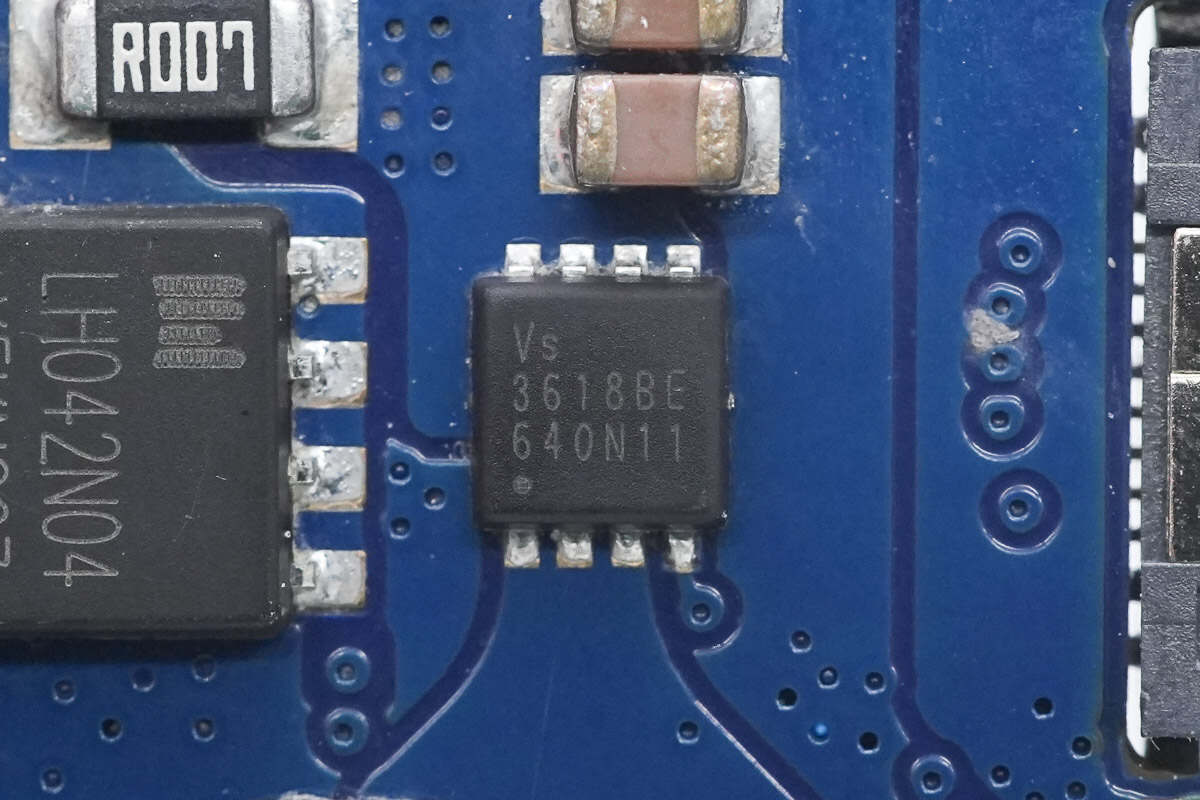
The VBUS MOSFET is from Vergiga, model VS3618BE. It is an N-channel MOSFET with a voltage rating of 30V and an on-resistance of 5.2mΩ, housed in a PDFN3333 package.
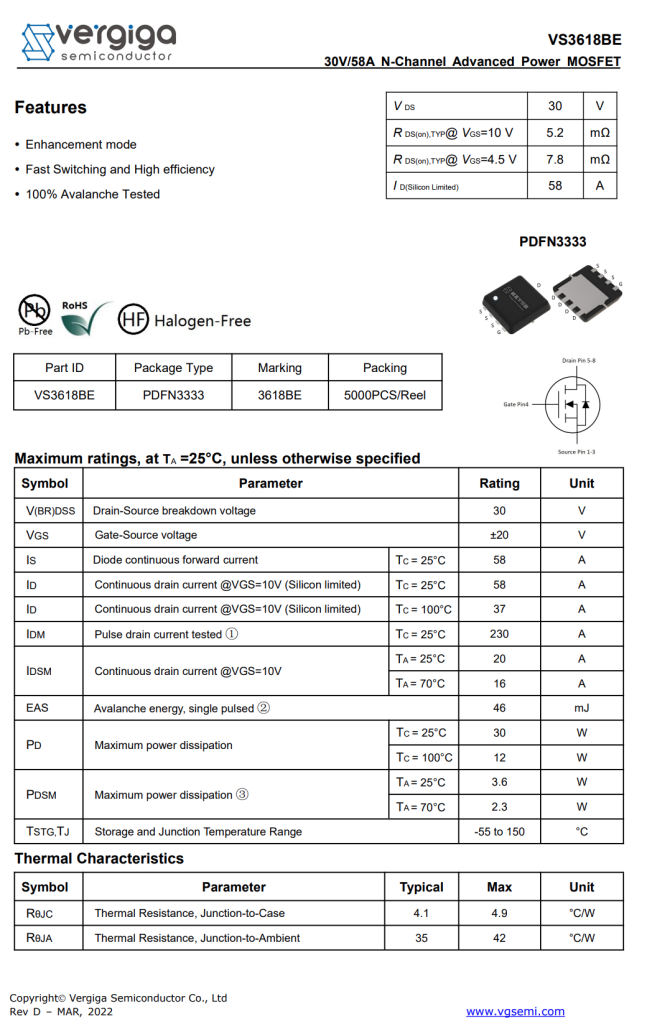
Here is the information about Vergiga VS3618BE.
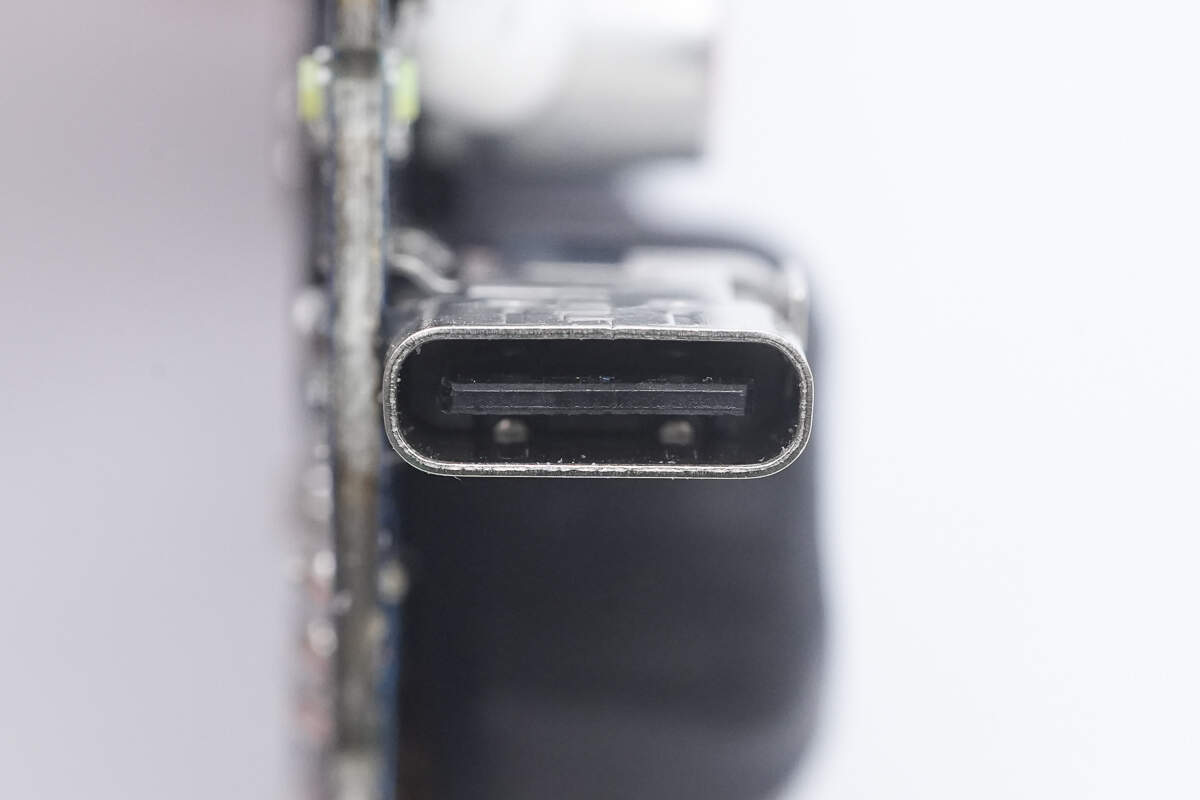
Close-up of the USB-C2 socket.
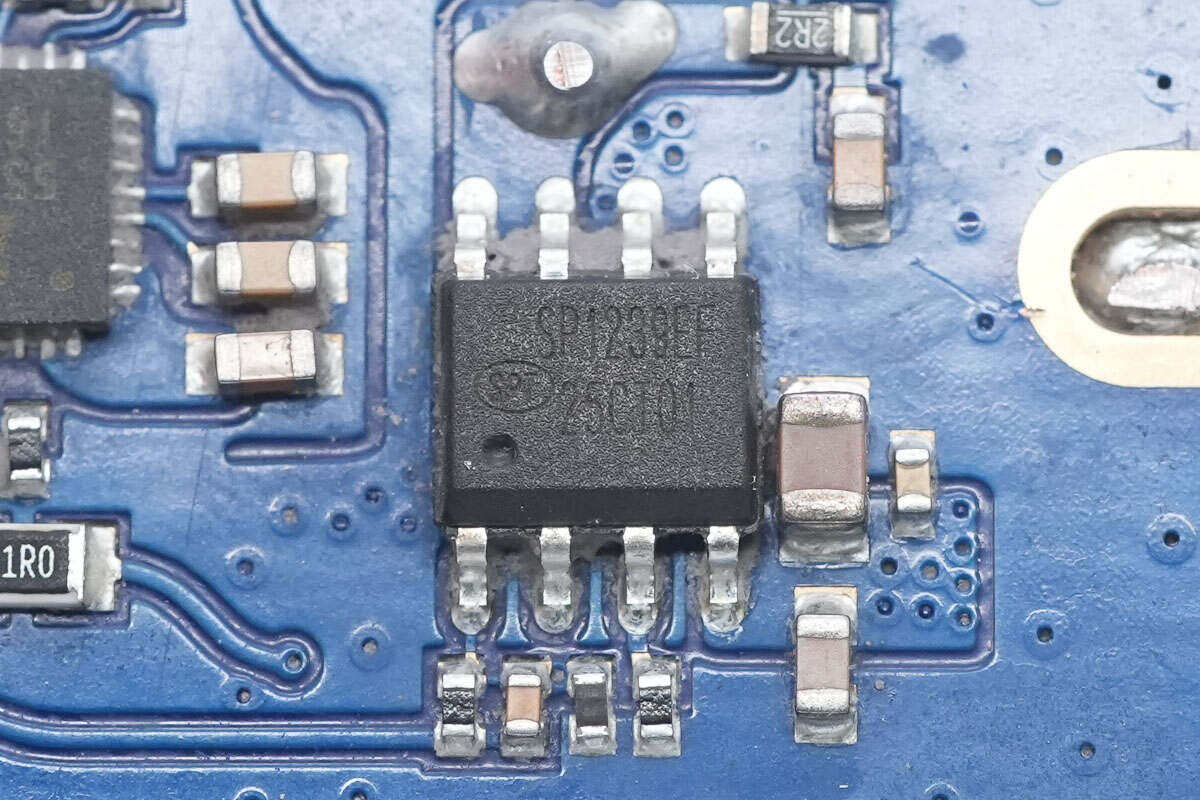
The synchronous buck converter used for the additional USB-A and USB-C ports is the SP1239EF from Si-power. It supports output currents up to 3.4A and is designed to operate over a wide input voltage range of 8–30V. The device features internal compensation, minimizing the number of required external components—all of which are standard and easy to source.
It supports both CV and CC modes, with the overcurrent protection threshold set via an external current-sense resistor. The SP1239EF is ideal for DC/DC switching power supply applications that require current limiting. It comes in an ESOP-8L package and requires only a minimal number of external components for proper operation.
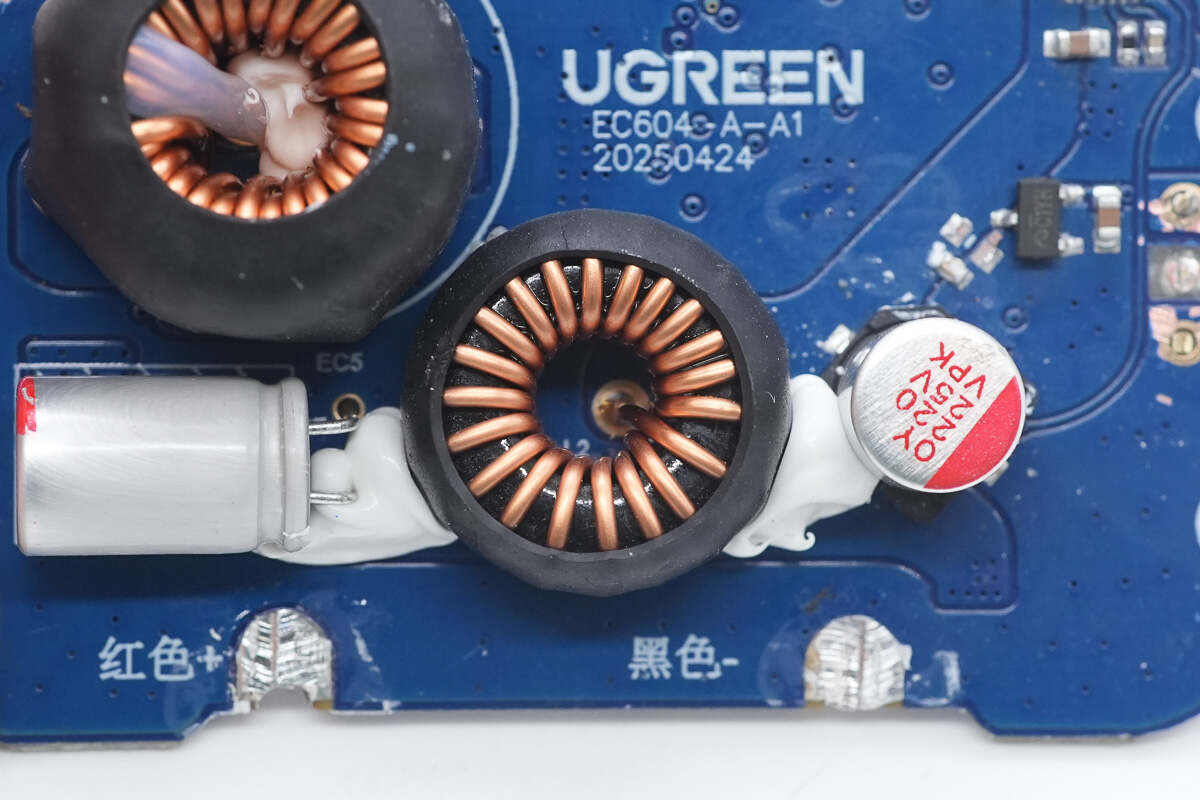
The buck inductor is insulated with heat-shrink tubing and reinforced with adhesive, together with the capacitors on both sides.
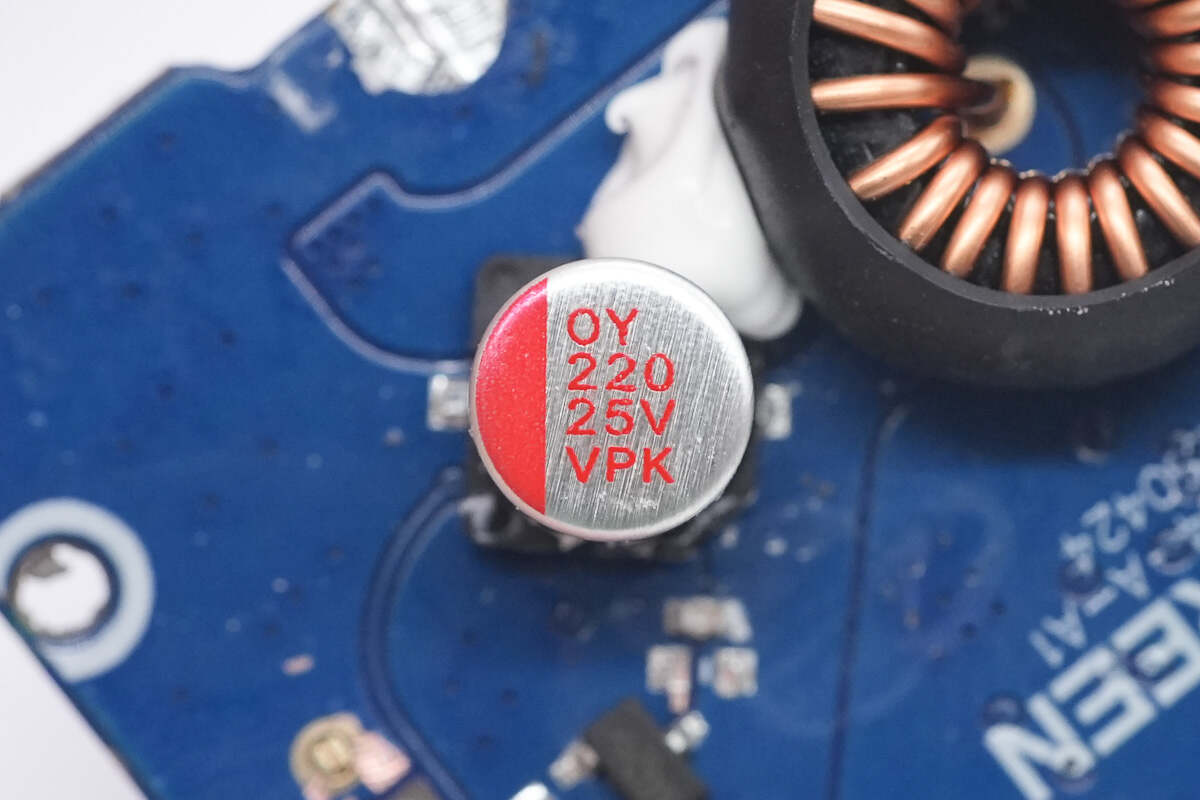
The buck output filtering solid capacitor is rated at 25V, 220μF.
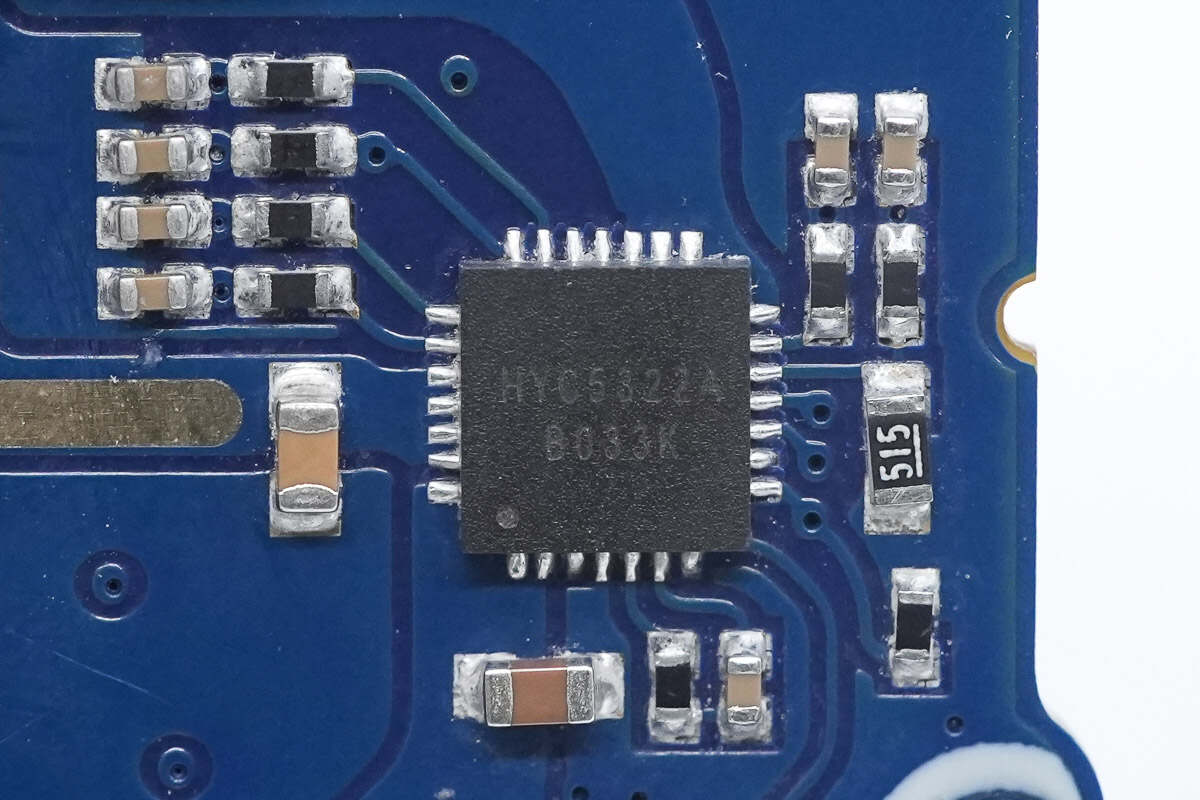
The protocol chip is the HYC5322 from HYASiC, a high-performance, highly integrated USB Type-C power delivery and dual-port (Type-C + Type-A) controller. It integrates two ultra-low-resistance power path switches, supports up to 7 PDOs with programmable voltage and current settings, and is fully compliant with the USB PD3.1 fast charging specification.
It also supports a wide range of charging protocols, including BC1.2 DCP, Apple 2.4A, QC2.0/QC3.0/QC3.0+, AFC, FCP, SCP, and PE+ 1.1/2.0. Additionally, it features comprehensive protection mechanisms such as OVP, UVLO, OCP, output short-circuit protection, CC or DP/DM over-voltage protection, and over-temperature protection. The HYC5322 is packaged in a QFN-28L (4mm × 4mm) package.

Close-up of the LED indicator.
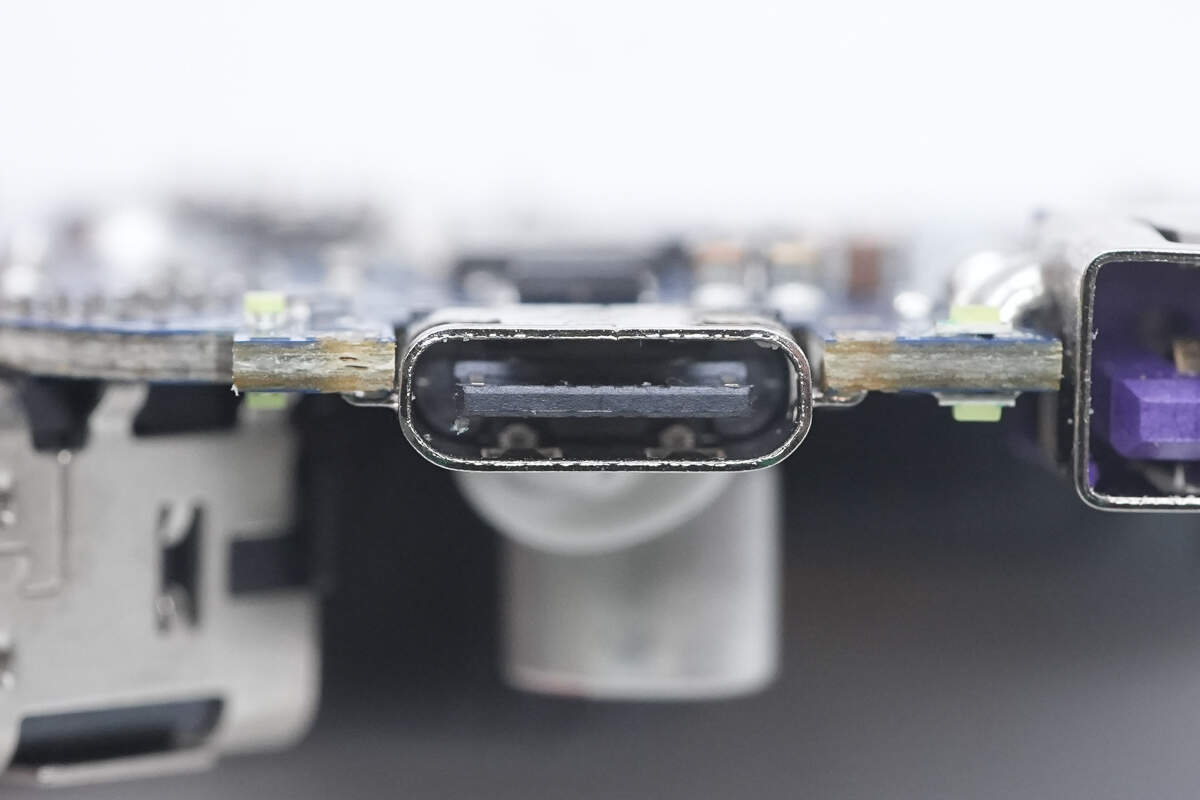
Close-up of the USB-C1 socket.
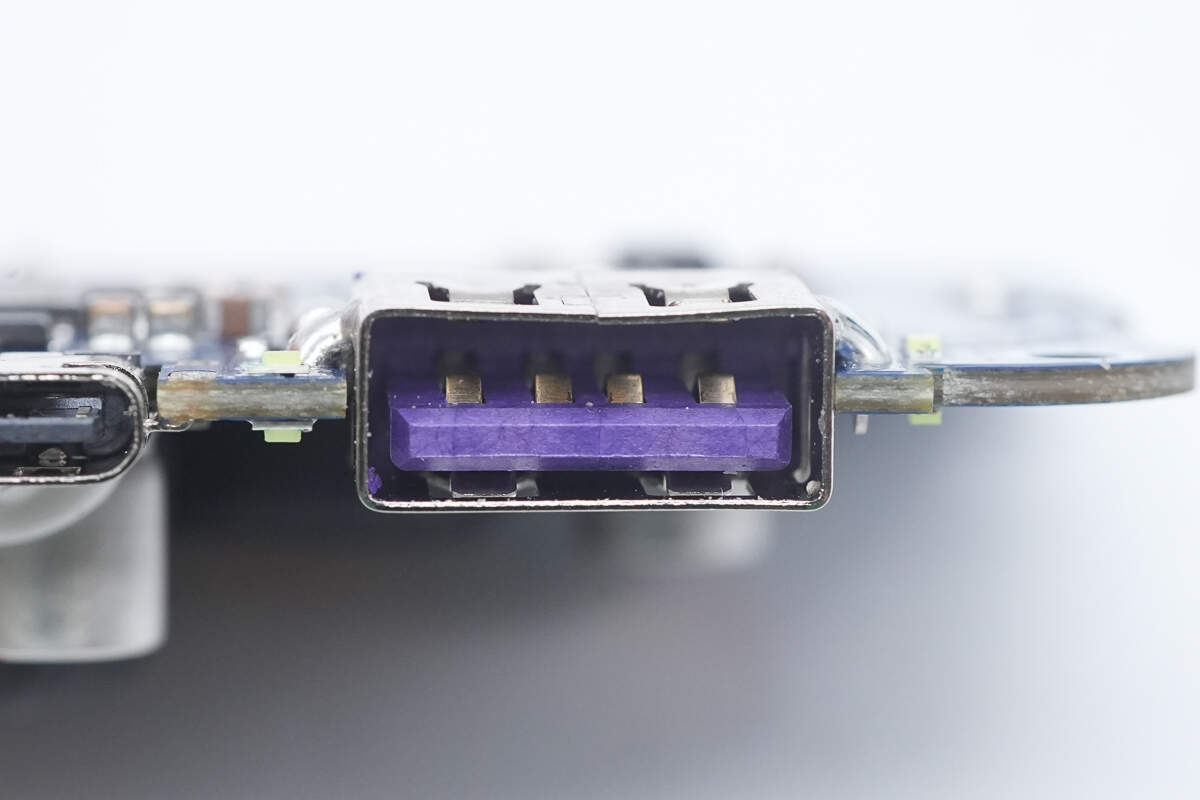
Close-up of the USB-A socket.
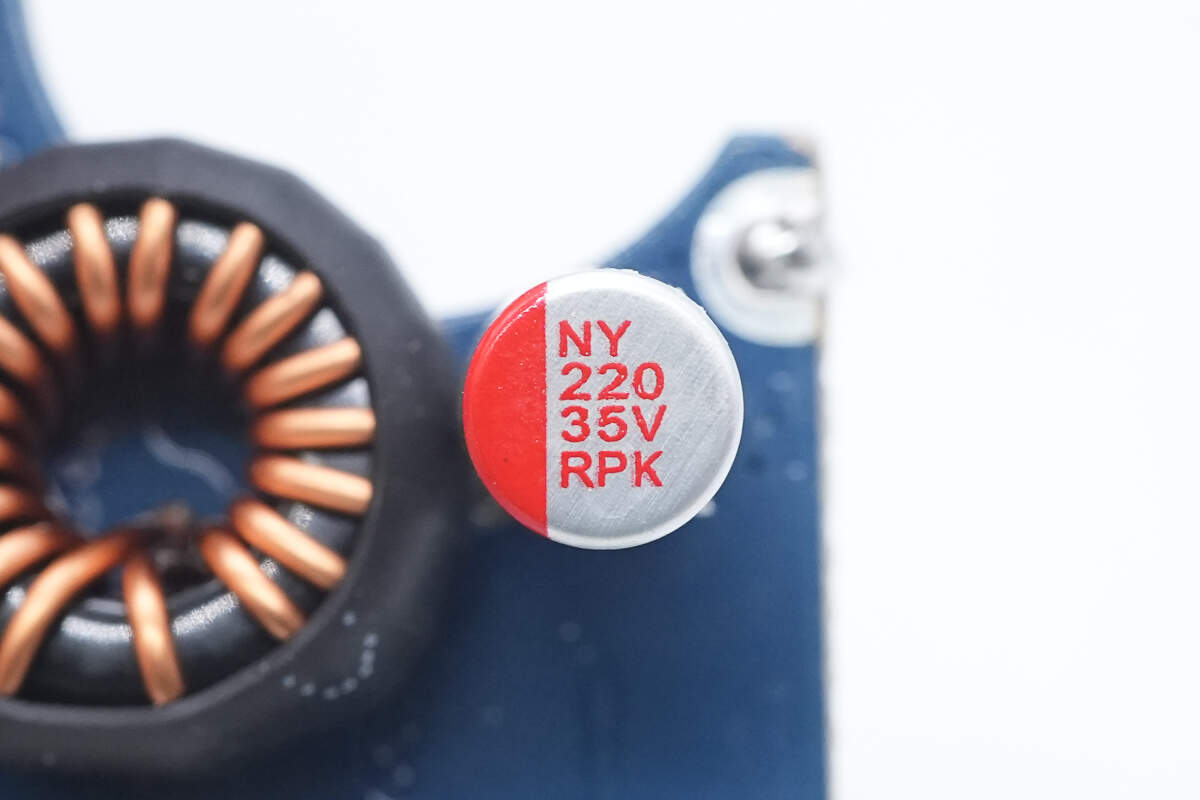
The input filtering solid capacitor is rated at 35V, 220μF.
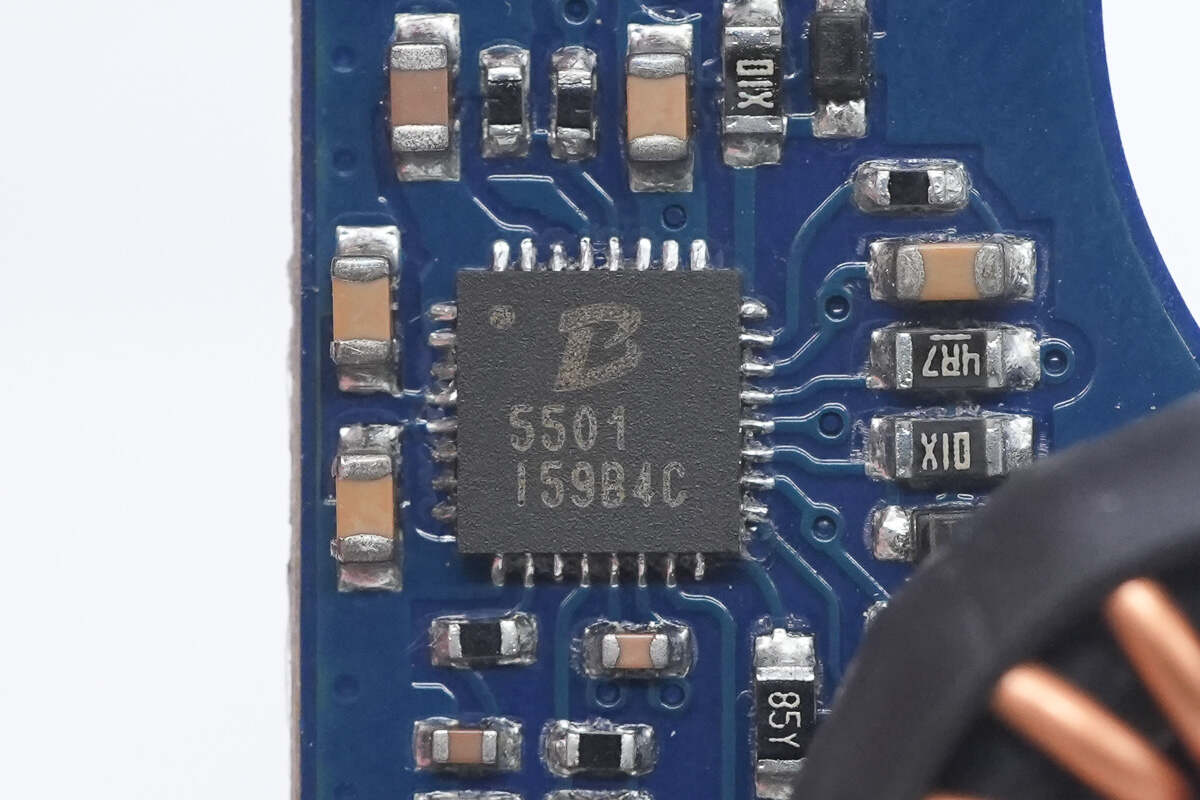
The synchronous buck-boost controller for the USB-C cable is also a Powlicon PL5501.

The synchronous buck-boost MOSFETs are from ALLEPIC, model AER4051CP. They are N-channel MOSFETs with a voltage rating of 40V and an on-resistance of 6mΩ, housed in a PDFN 3×3 package.
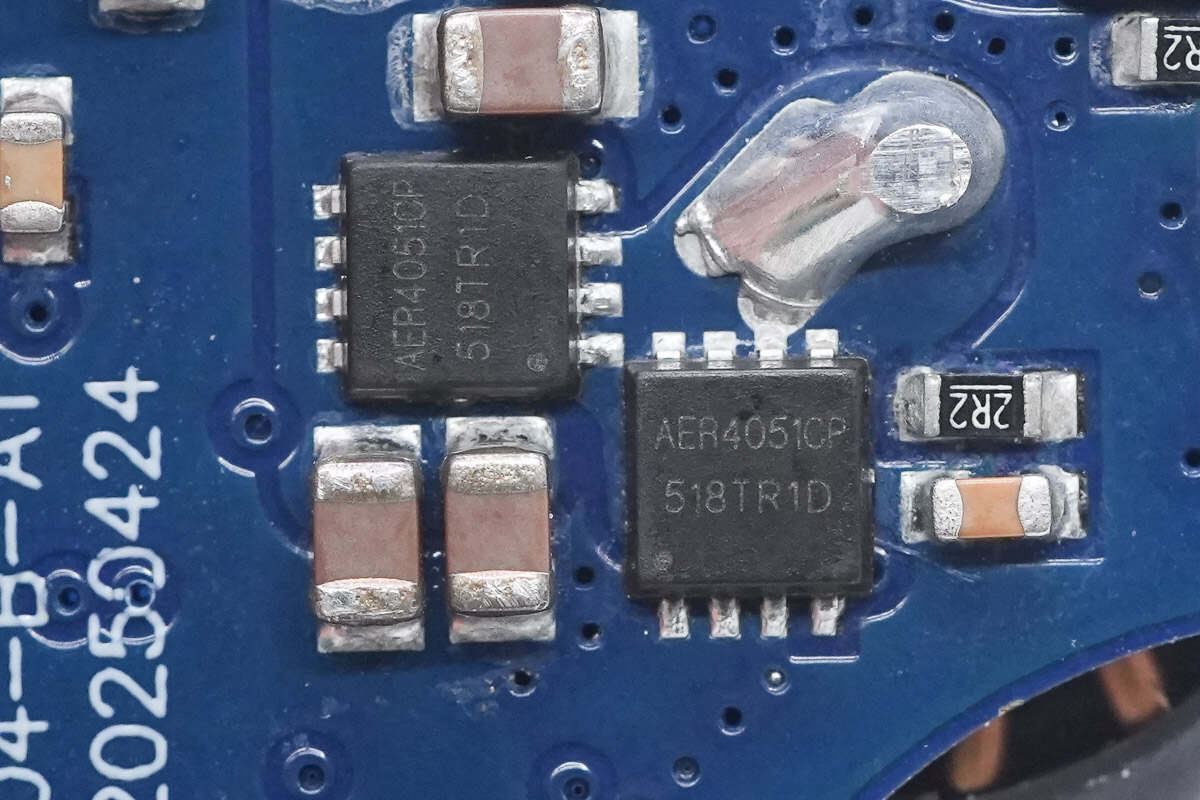
Close-up of the other two ALLEPIC AER4051CP synchronous buck-boost MOSFETs.

Close-up of the buck-boost inductor.
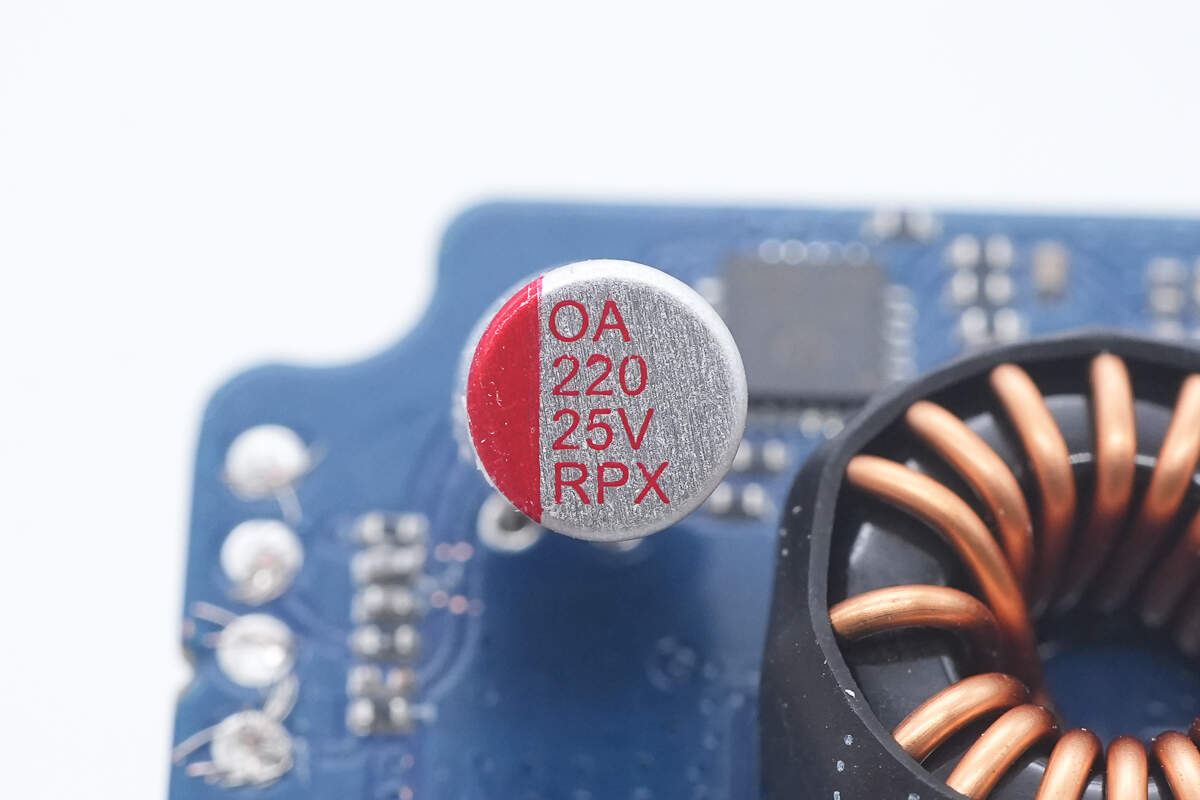
The buck-boost output filtering solid capacitor is rated at 25V, 220μF.
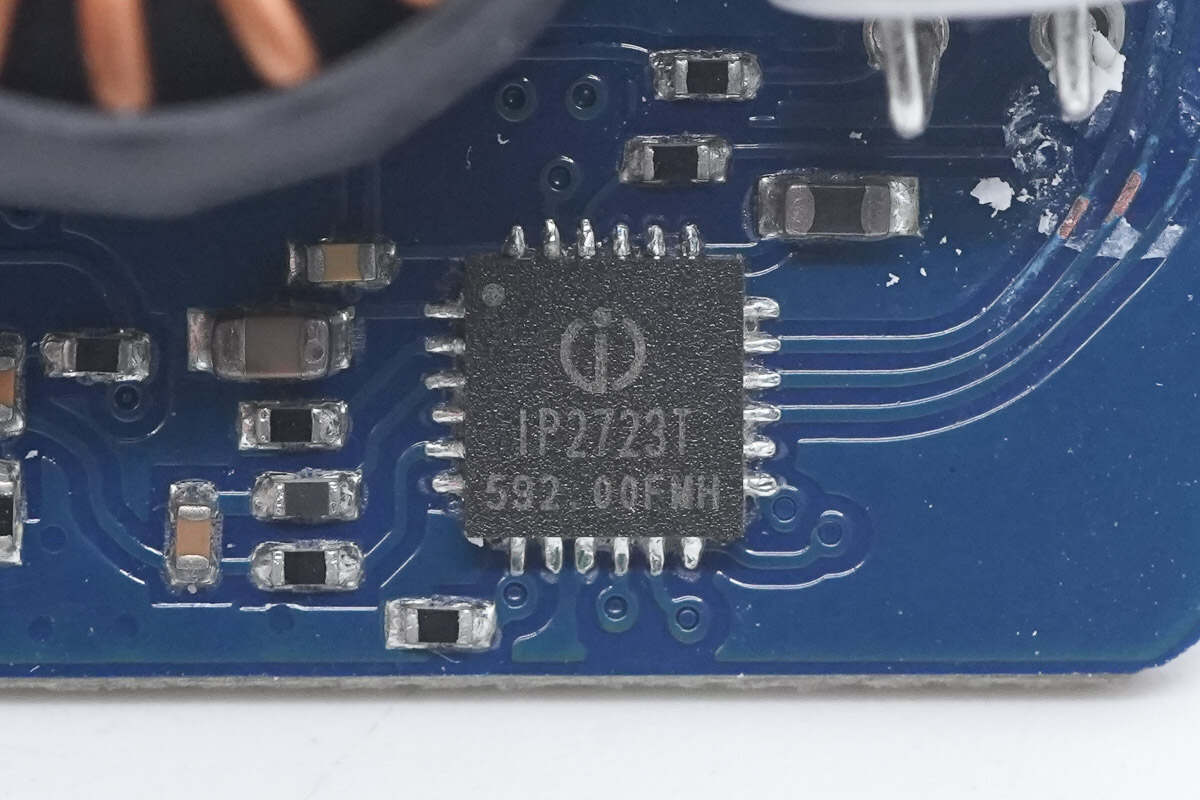
The USB-C cable’s protocol chip is also the Injoinic IP2723T.
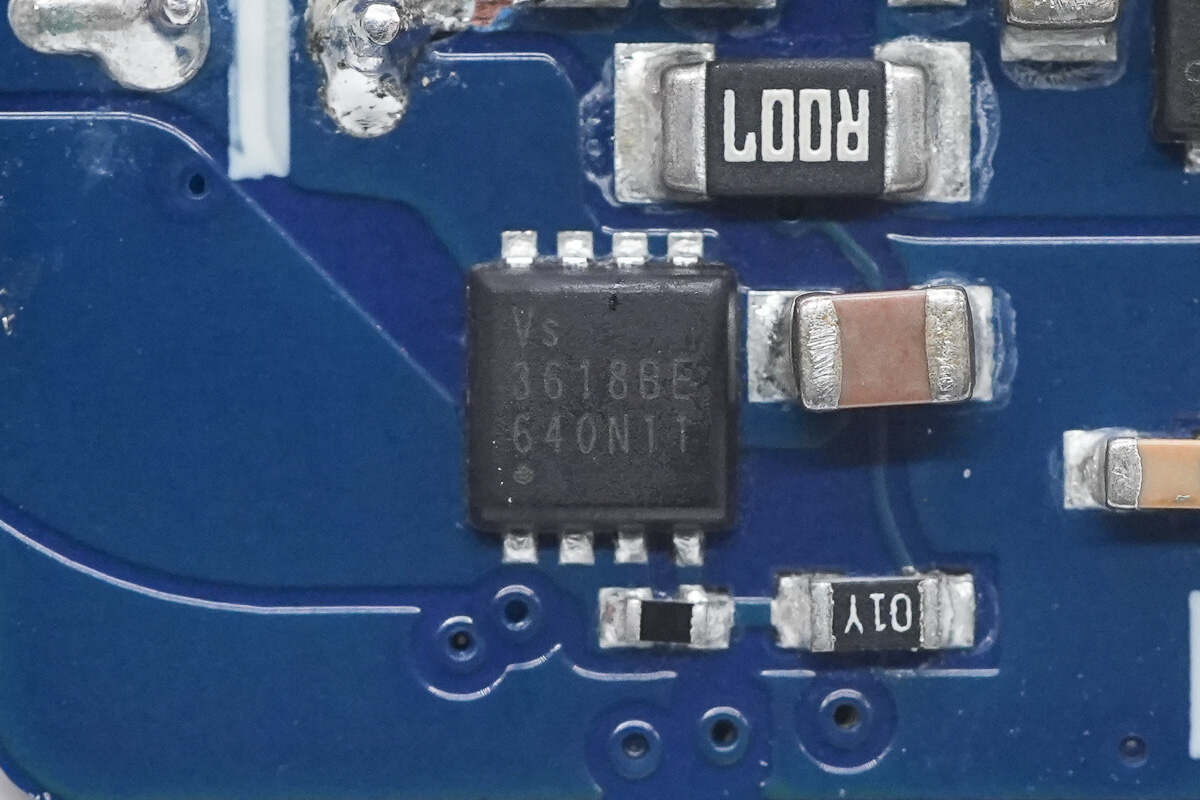
The VBUS MOSFET is also a Vergiga VS3618BE.
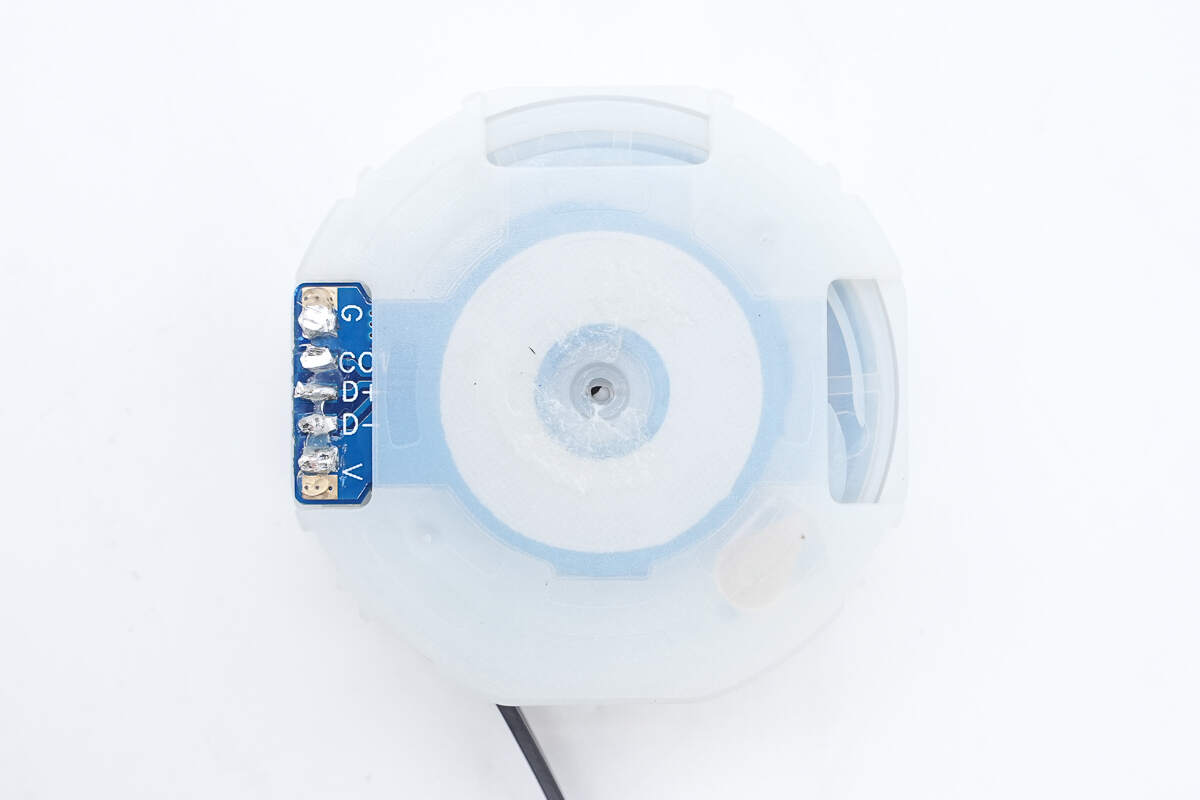
The plastic housing of the retractable cable module is secured with clips.
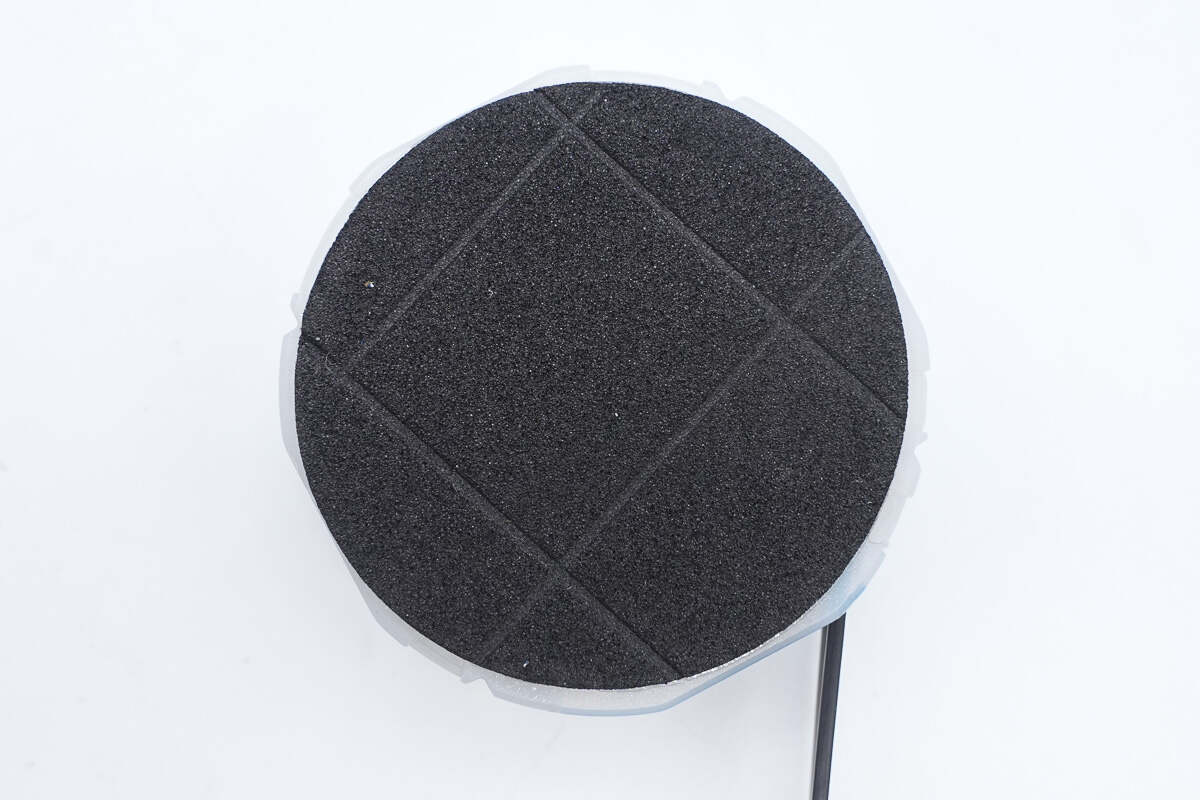
The other side is fitted with a protective pad.
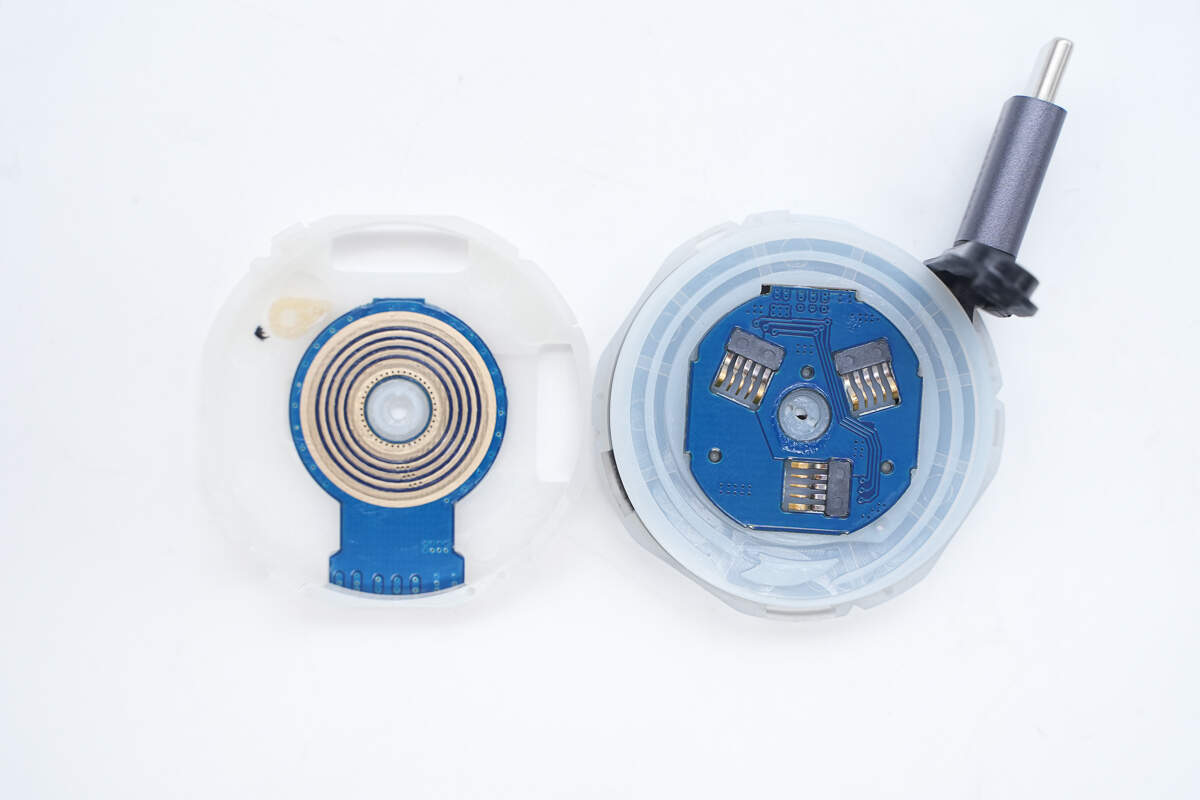
Overview of the opened retractable cable module.
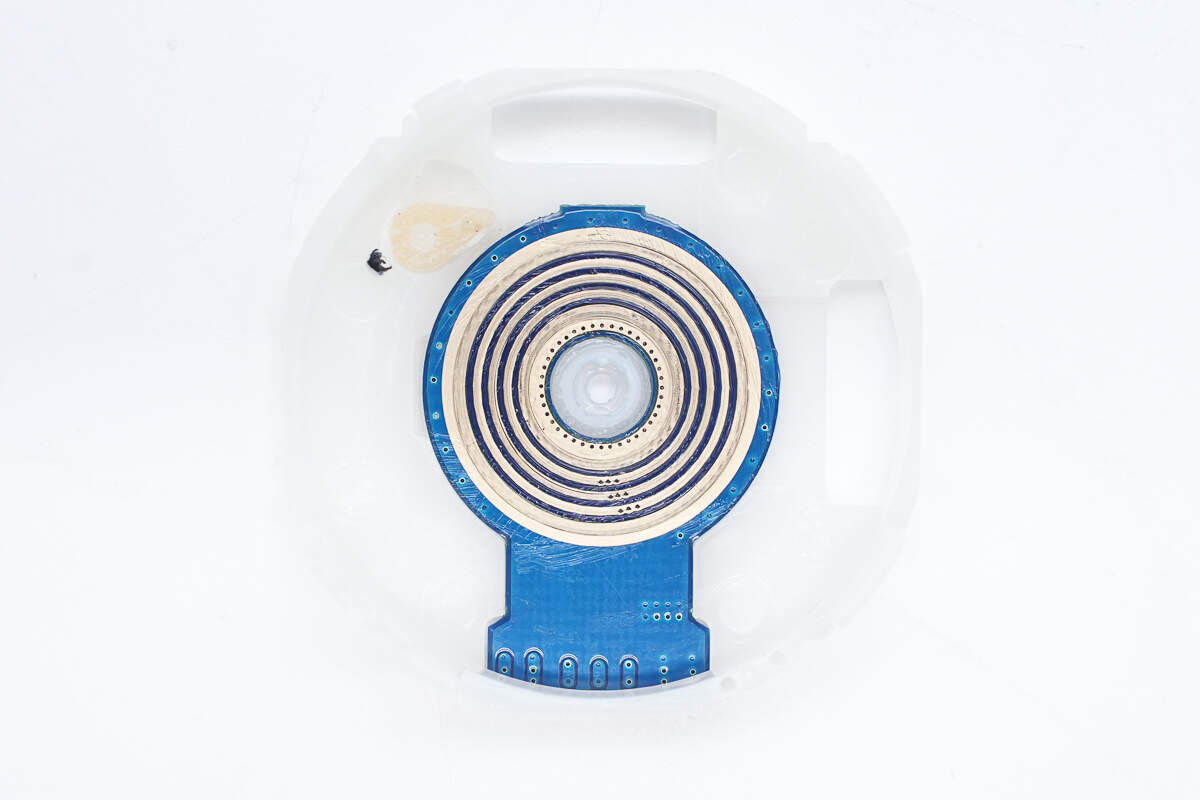
Close-up of the PCB slip ring.
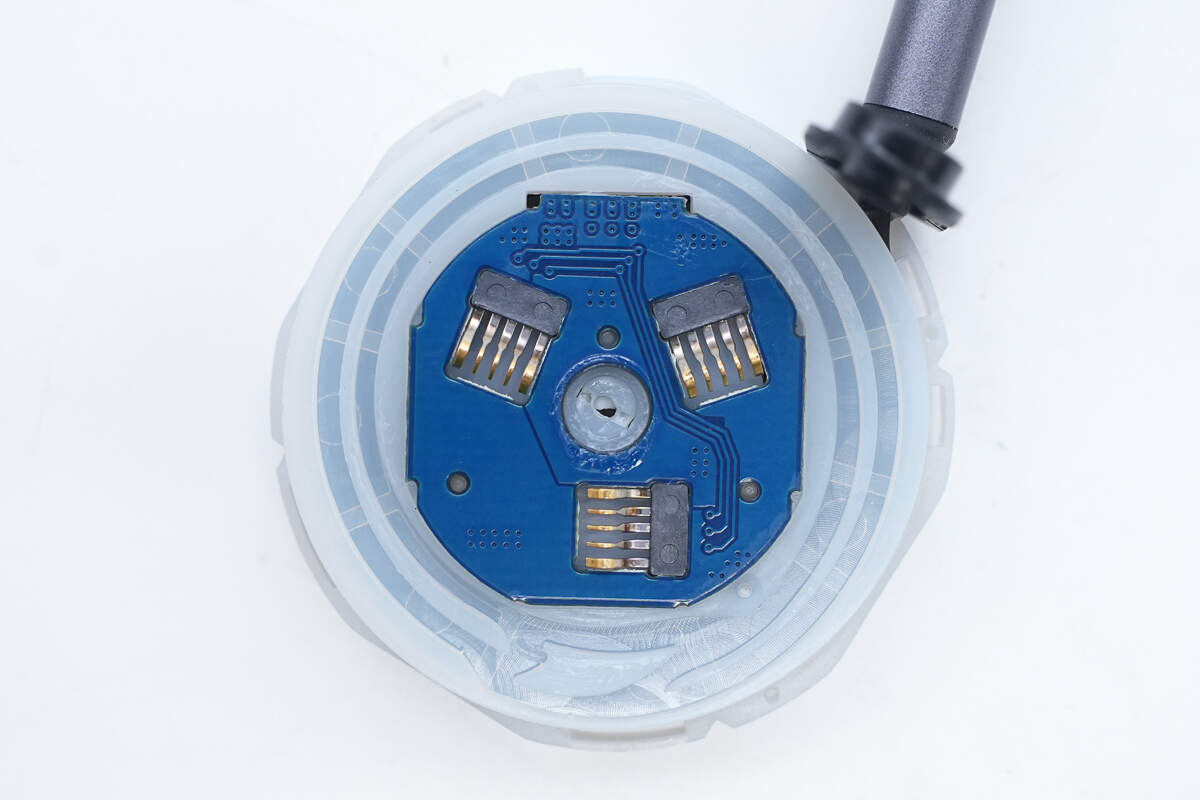
The spool is equipped with three brushes to enhance current-carrying capacity.
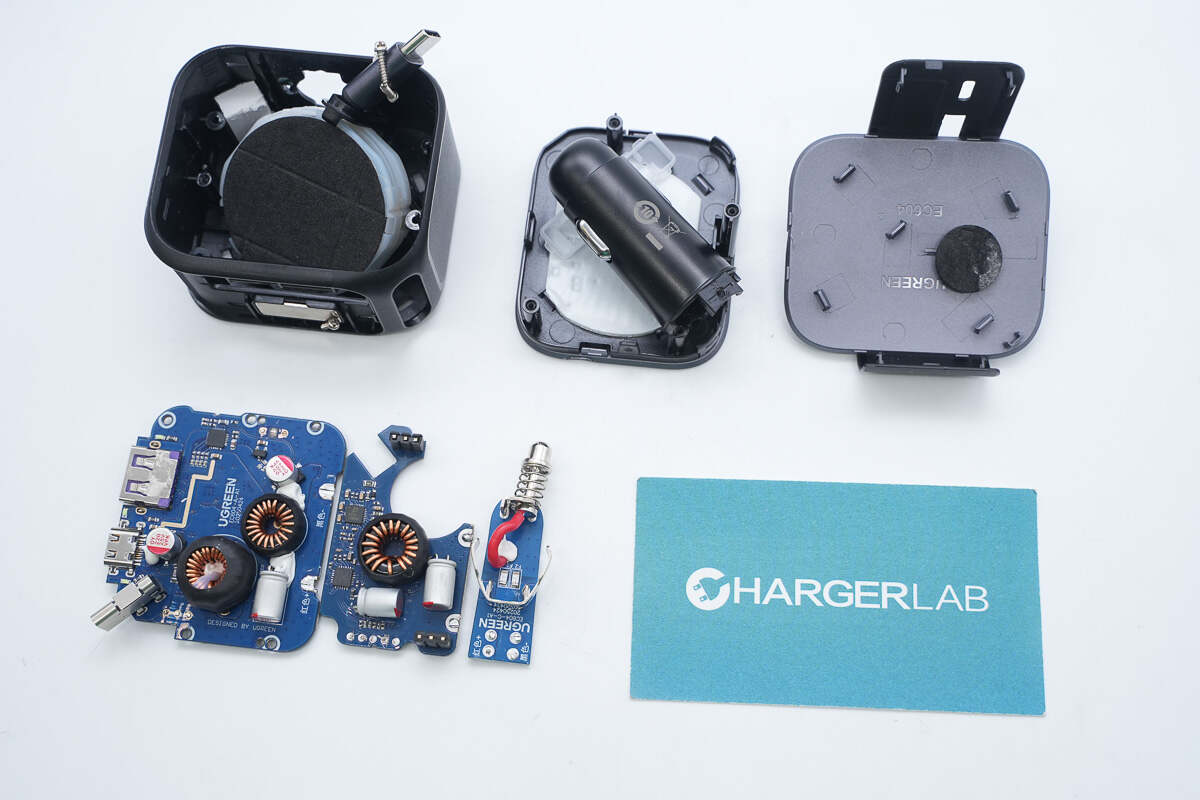
Well, those are all components of the UGREEN Nexode Car Charger 145W with Retractable USB‑C Cable.
Summary of ChargerLAB
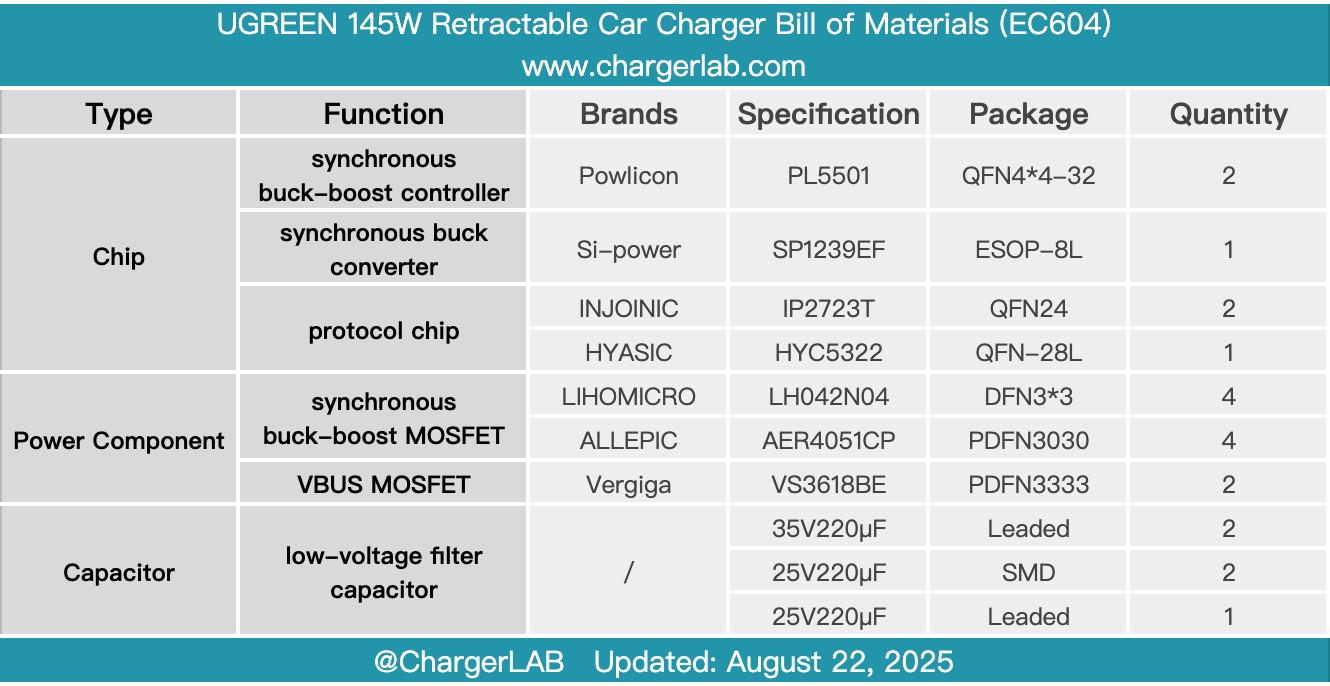
Here is the component list of the UGREEN Nexode Car Charger 145W with Retractable USB‑C Cable for your convenience.
It shares the same exterior design as others in the series, offering high recognizability. The included USB-C retractable cable features a high-strength TPE jacket and has passed over 10,000 pull and bend tests, ensuring smooth retraction, tangle-free use, and long-lasting durability. Under 12V or 24V input conditions, the retractable cable and USB ports can deliver up to 60W, 100W, and 30W output, respectively. The USB ports are equipped with built-in indicator lights for convenient use at night, showcasing thoughtful attention to detail.
After taking it apart, we found that it uses three independent voltage regulation circuits. The USB-C cable and USB-C2 both adopt the Powlicon PL5501 synchronous buck-boost solution, paired with the Injoinic IP2723T protocol chip for output control. The USB-C1 and the USB-A port share the Si-power SP1239EF synchronous buck converter for voltage regulation, along with the HYASiC HYC5322 protocol chip for output control. The PCBA module is secured with screws, and key components such as capacitors and inductors are reinforced and protected with adhesive.
Related Articles:
1. Teardown of UGREEN Nexode Car Charger 90W with Retractable USB‑C Cable (EC603)
2. Teardown of Lenovo thinkplus 240W Qlex Dual USB-C Retractable Cable (CBQX240A)
3. Teardown of UGREEN Thunderbolt 5 80Gbps M.2 NVMe SSD Enclosure (D705)

